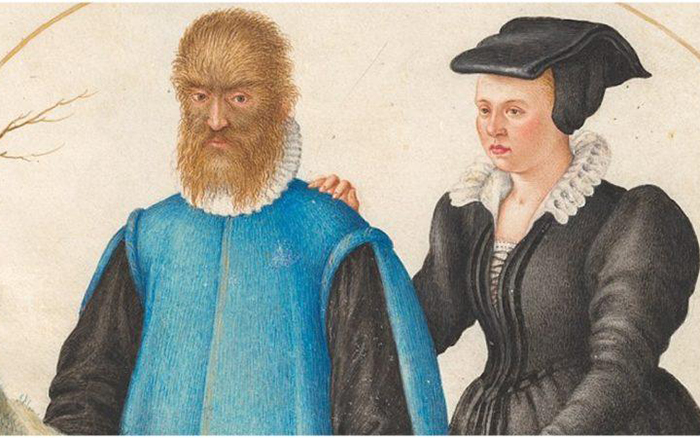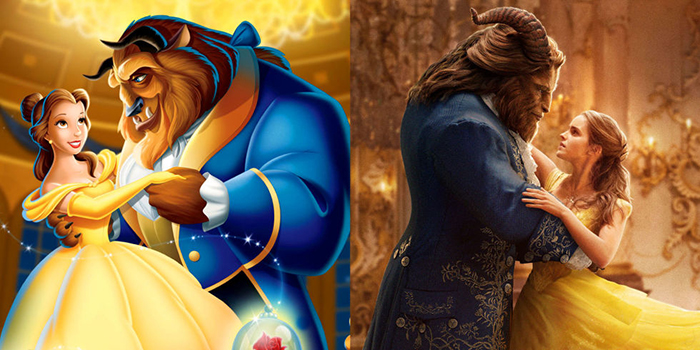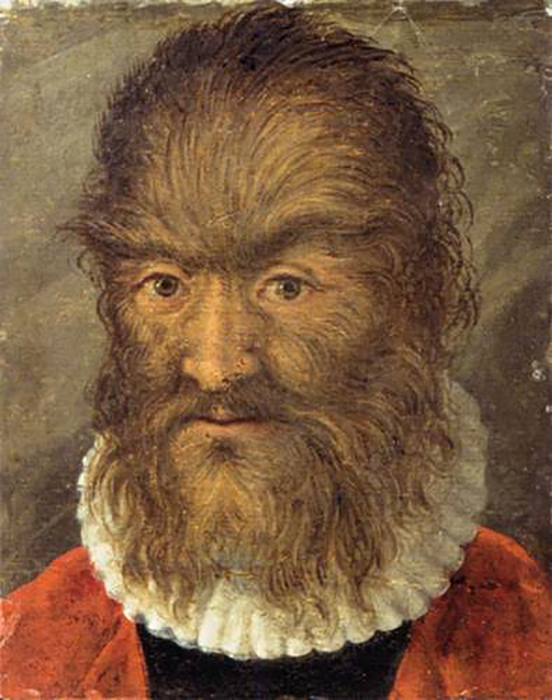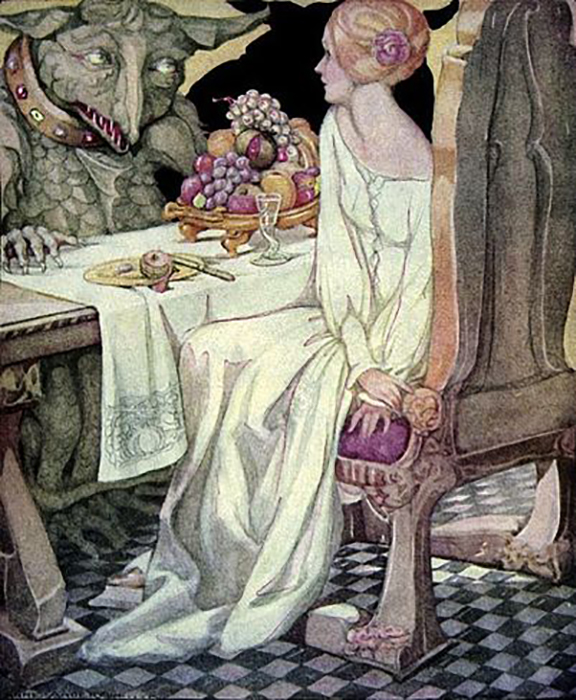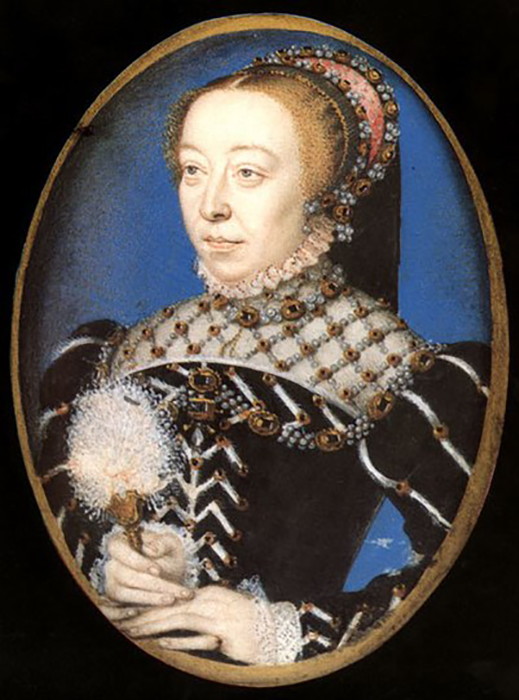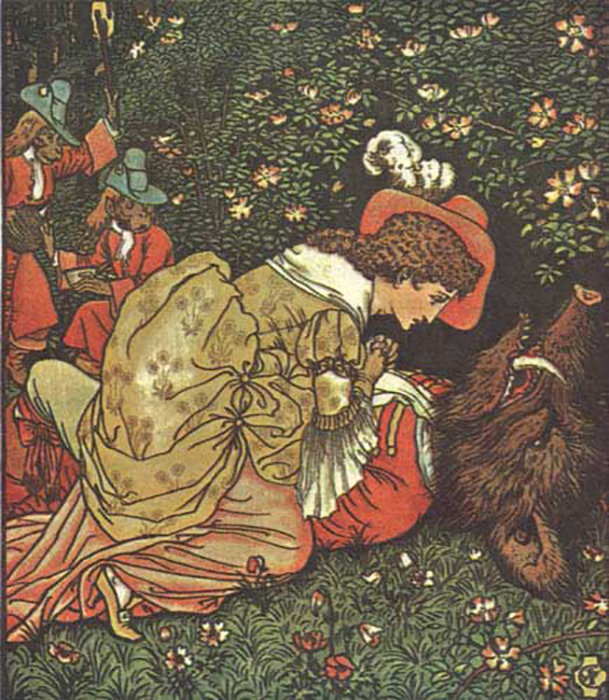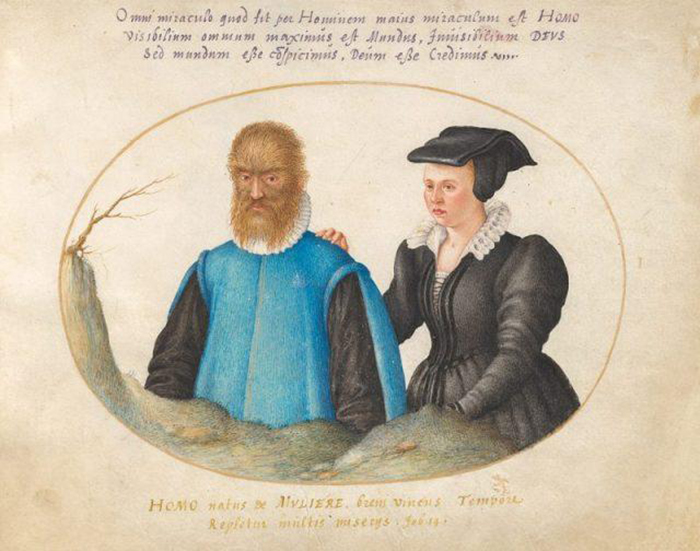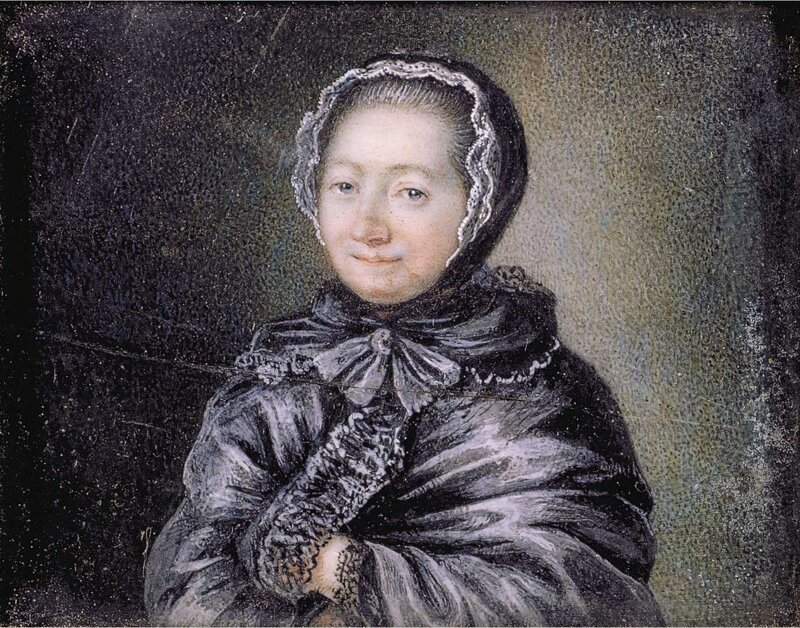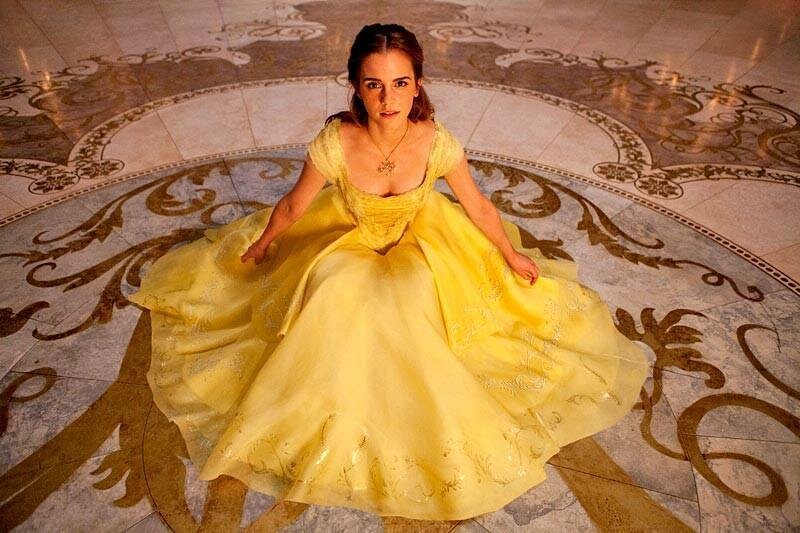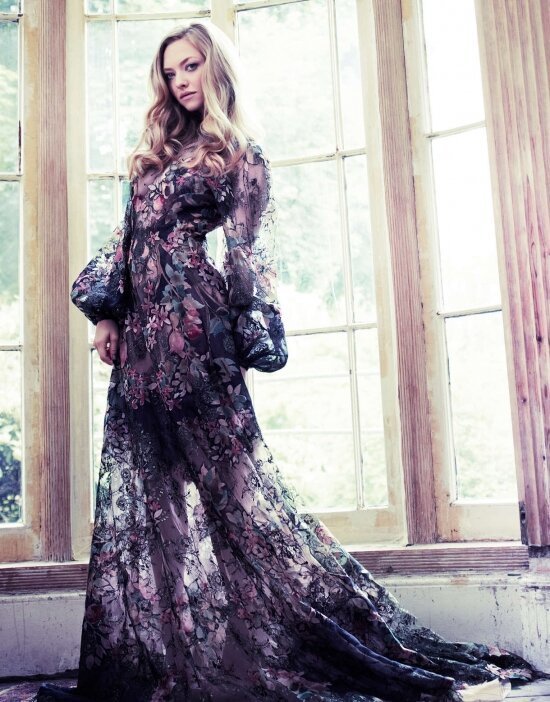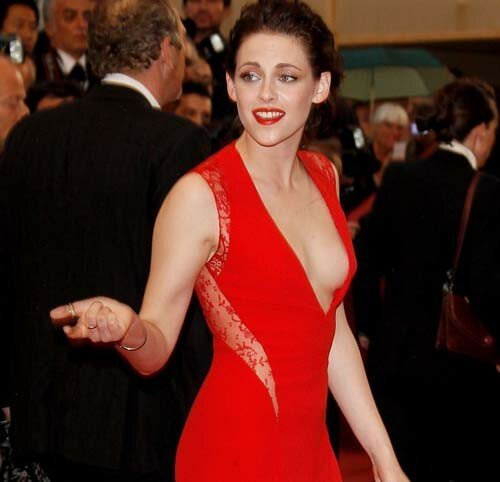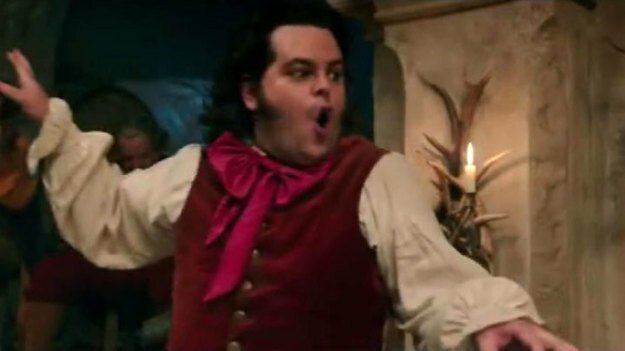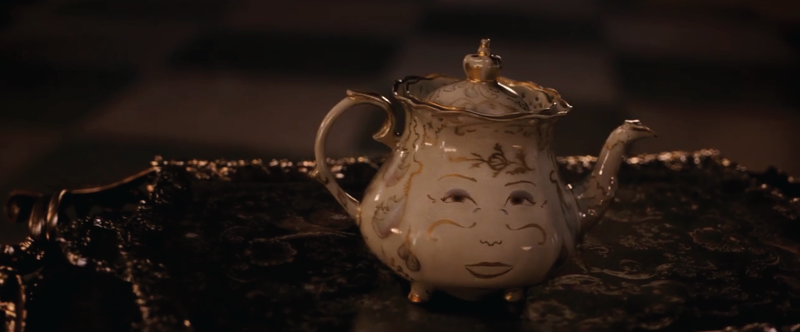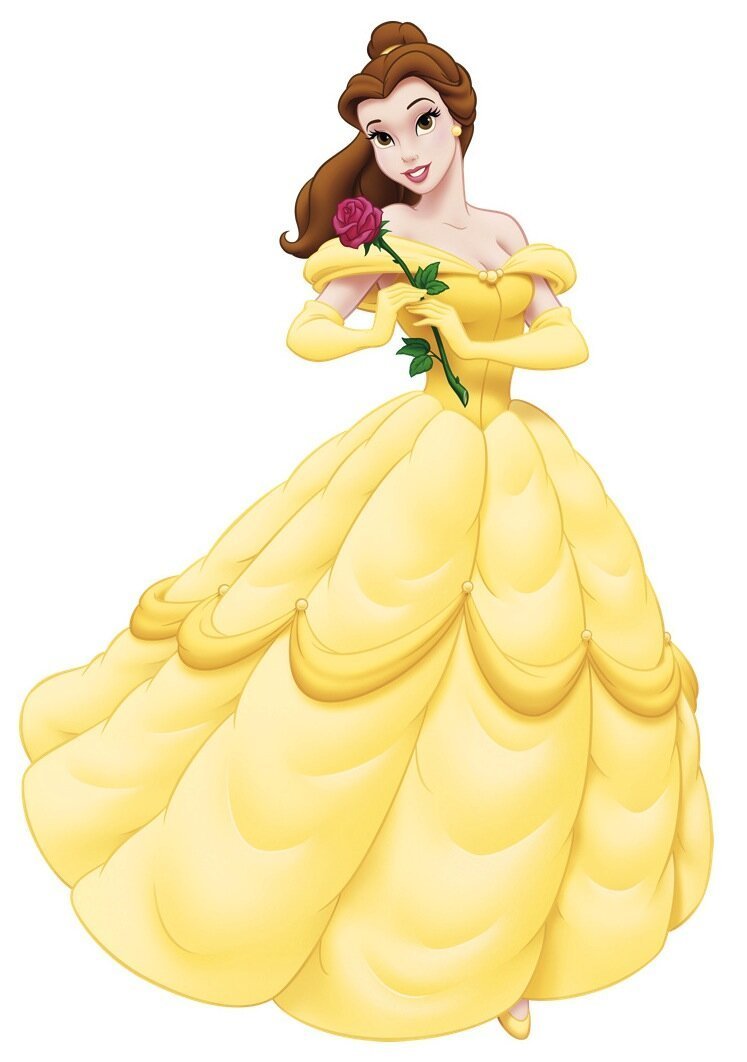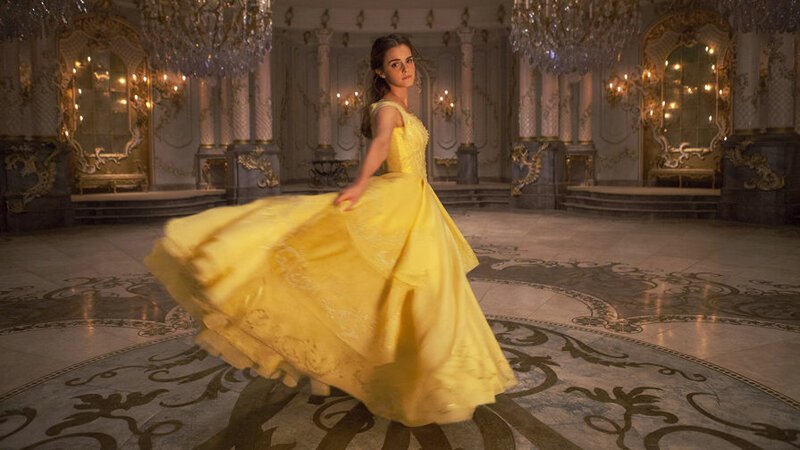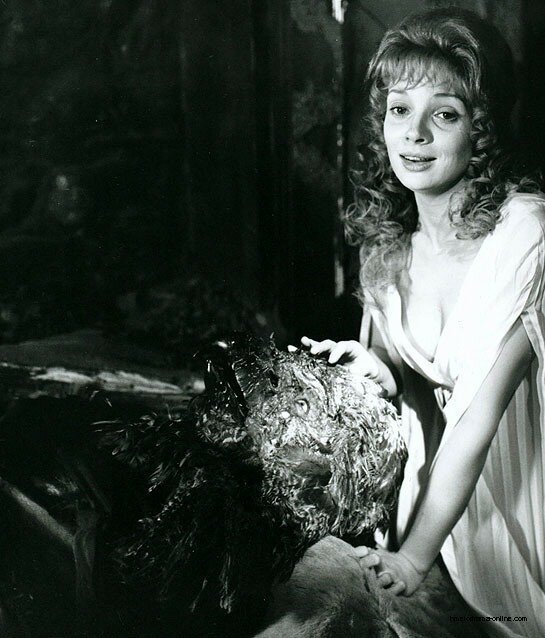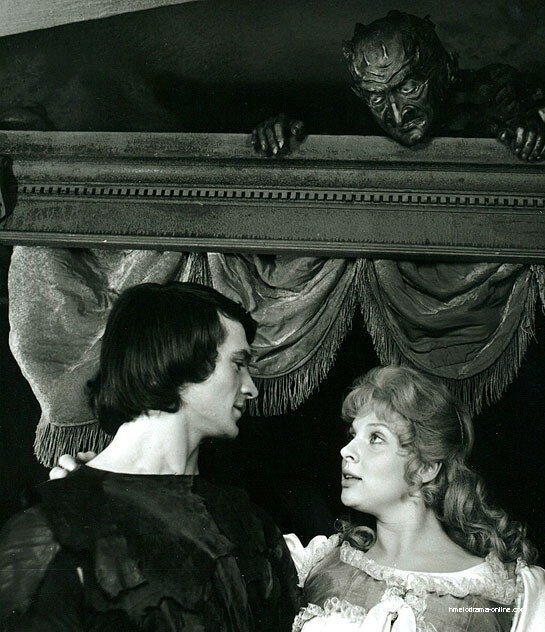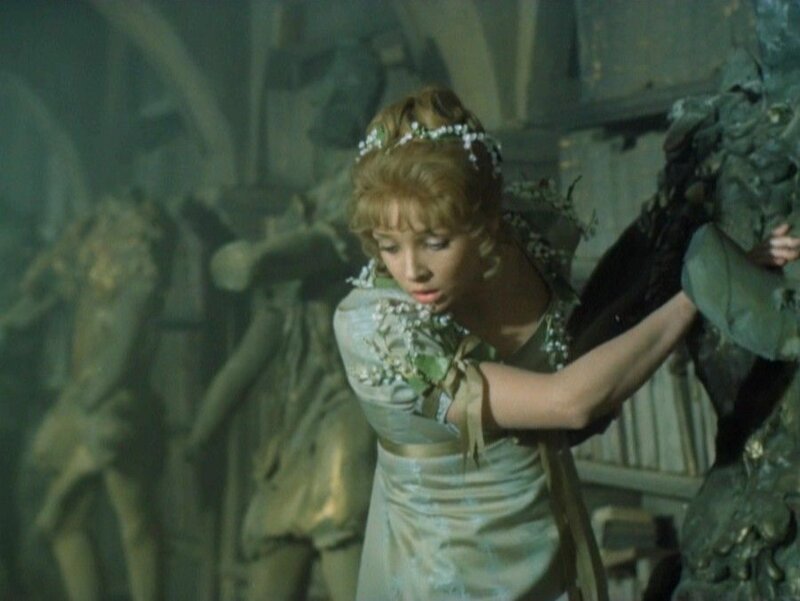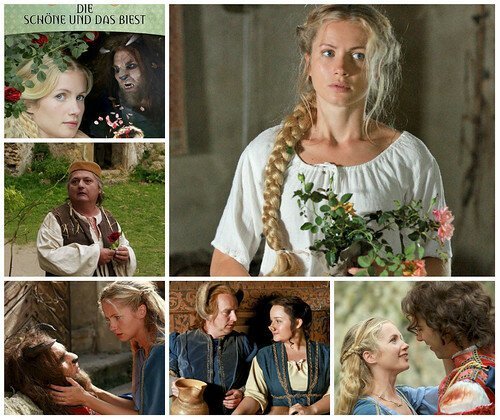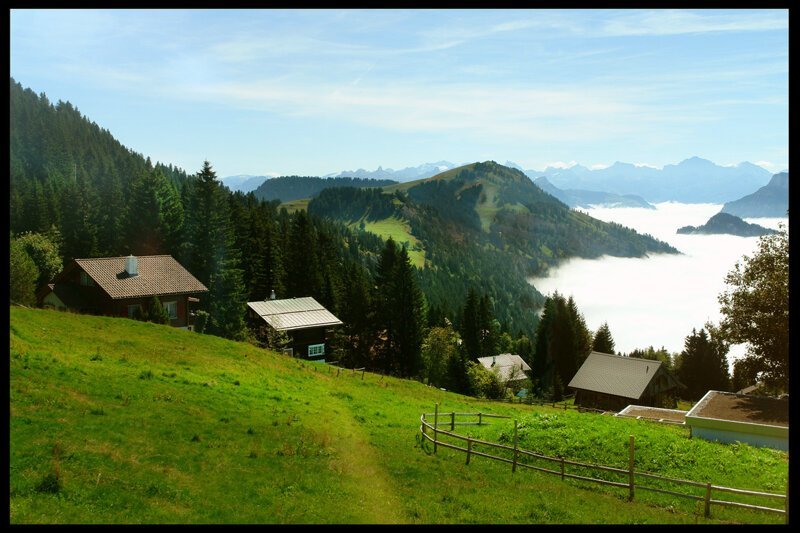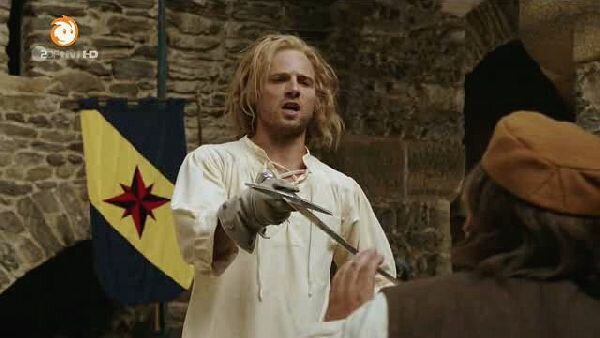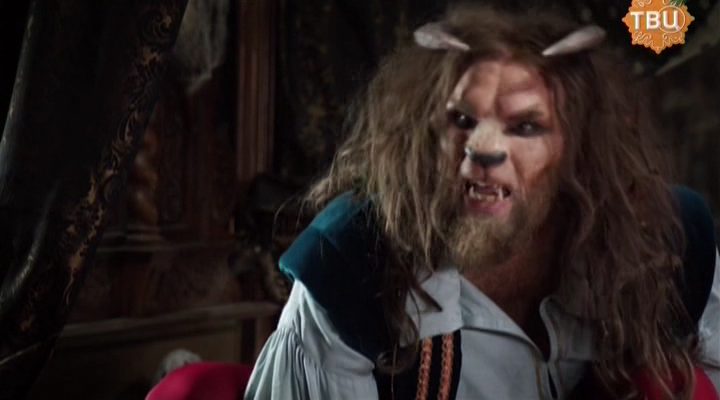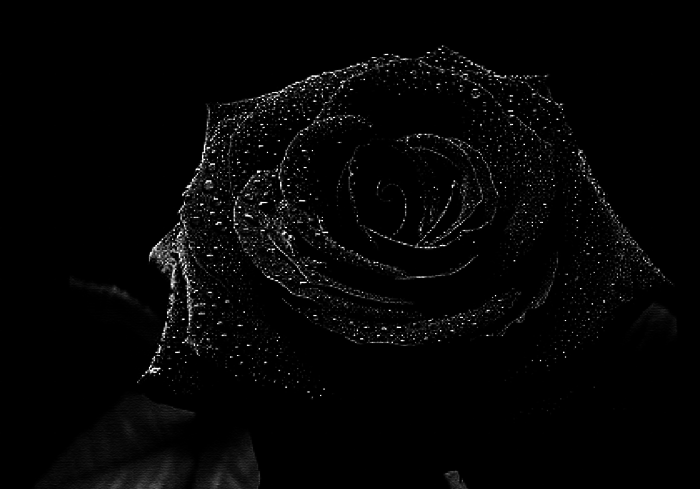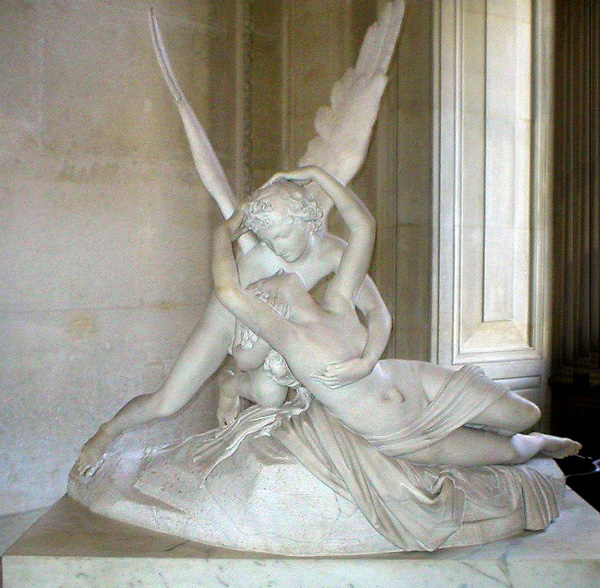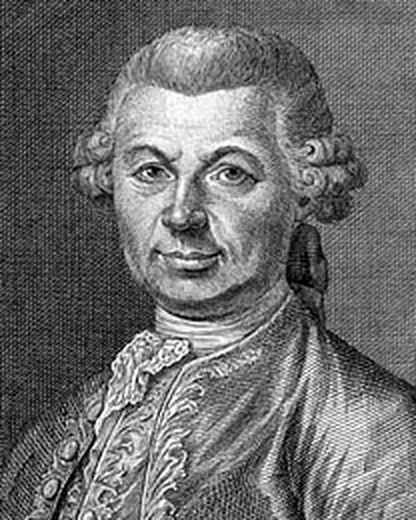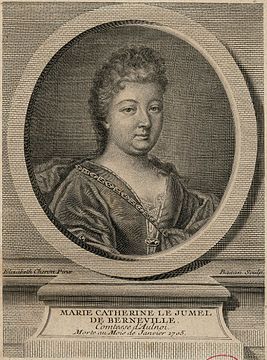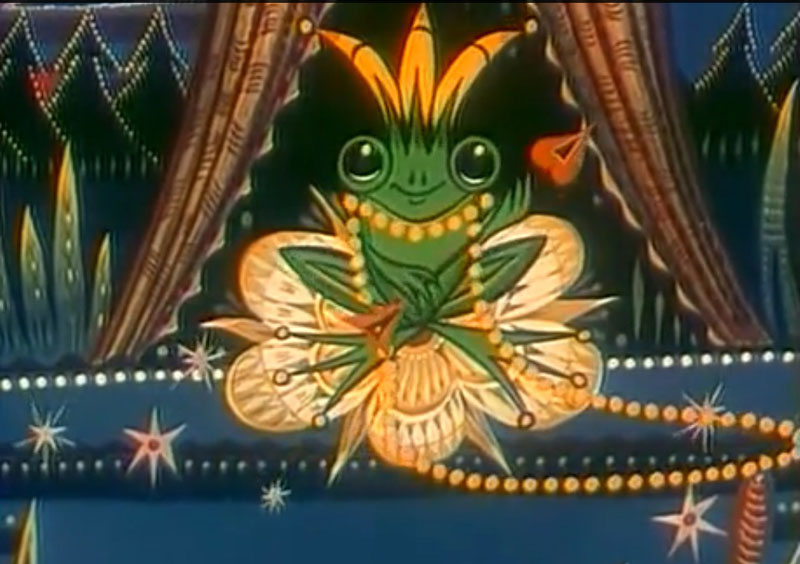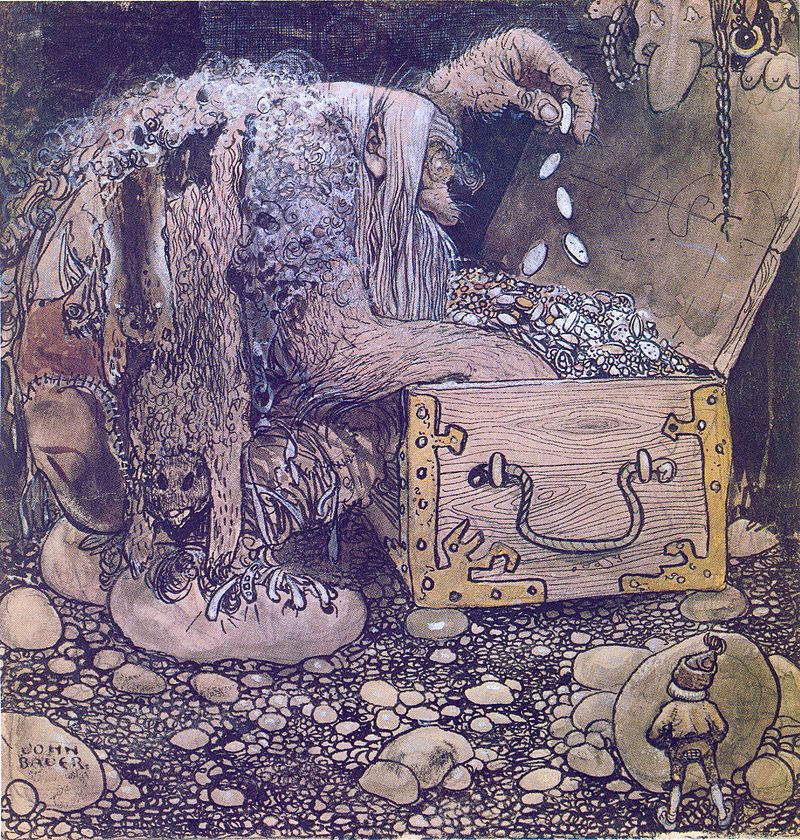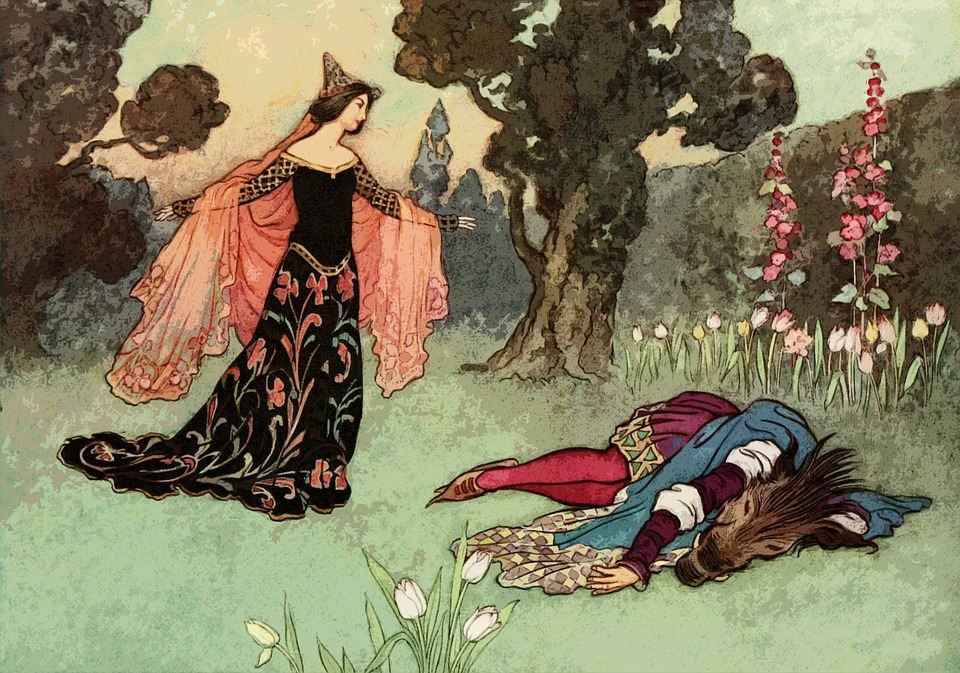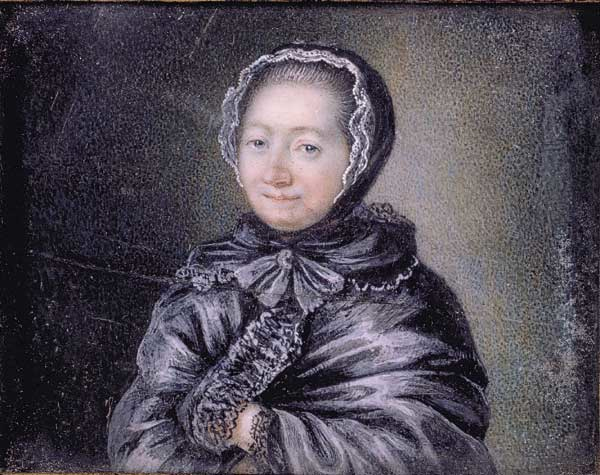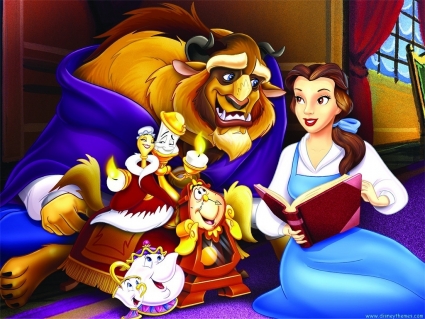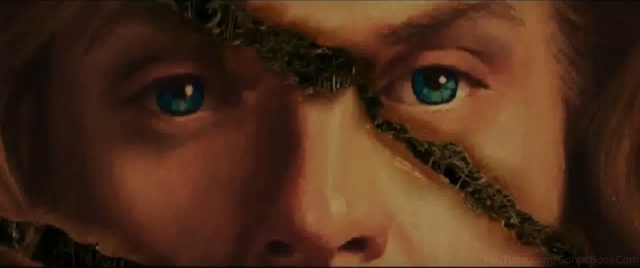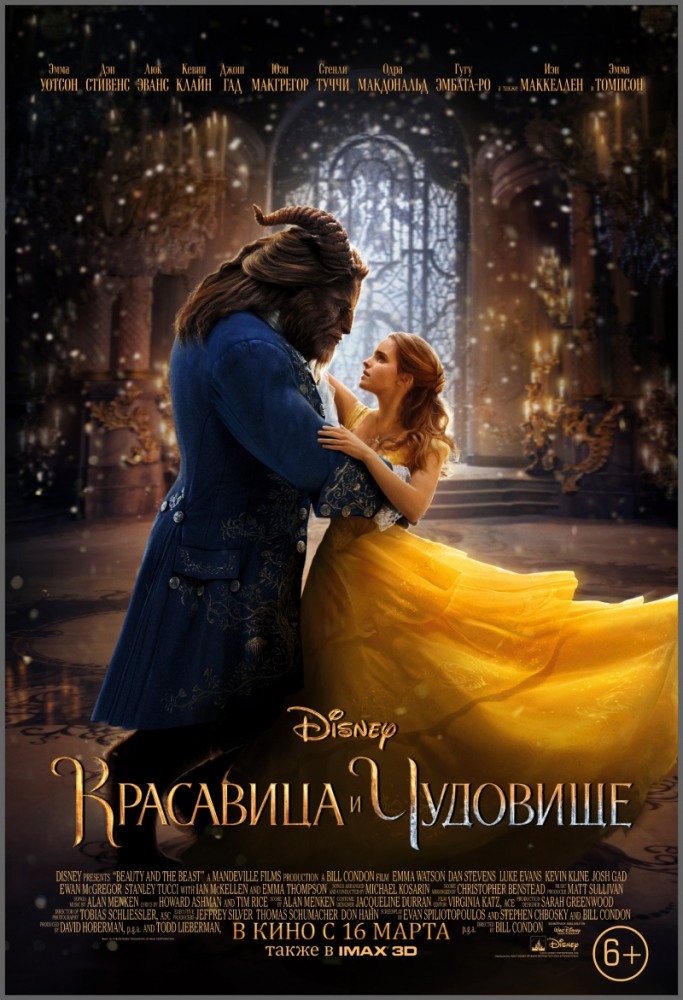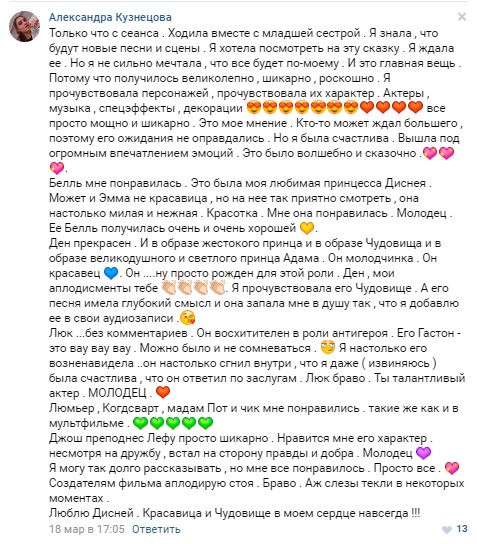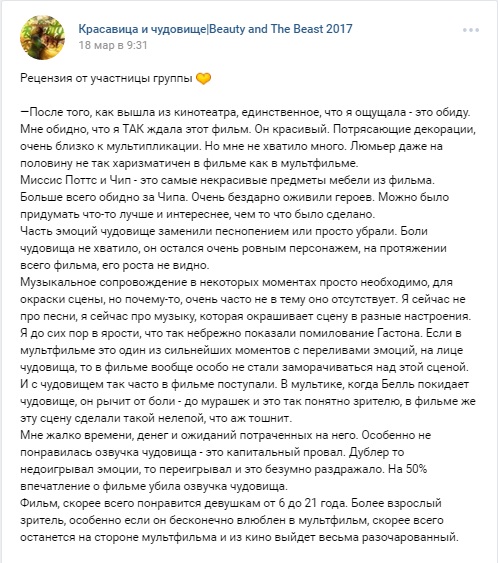| Beauty and the Beast | |
|---|---|

Beauty releases the prince from his beastly curse. Artwork from Europa’s Fairy Book, by John Batten |
|
| Folk tale | |
| Name | Beauty and the Beast |
| Also known as | Die Schöne und das Biest |
| Aarne–Thompson grouping | ATU 425C (Beauty and the Beast) |
| Region | France |
| Published in | La jeune américaine, et les contes marins (1740), by Gabrielle-Suzanne Barbot de Villeneuve; Magasin des enfants (1756), by Jeanne-Marie Leprince de Beaumont |
| Related | Cupid and Psyche (ATU 425B) East of the Sun and West of the Moon (ATU 425A) |
Beauty and the Beast (French: La Belle et la Bête) is a fairy tale written by French novelist Gabrielle-Suzanne Barbot de Villeneuve and published in 1740 in La Jeune Américaine et les contes marins (The Young American and Marine Tales).[1][2] Her lengthy version was abridged, rewritten, and published by French novelist Jeanne-Marie Leprince de Beaumont in 1756 in Magasin des enfants[3] (Children’s Collection) to produce the version most commonly retold.[4] Later, Andrew Lang retold the story in Blue Fairy Book, a part of the Fairy Book series, in 1889.[5] The fairy tale was influenced by Ancient Greek stories such as «Cupid and Psyche» from The Golden Ass, written by Lucius Apuleius Madaurensis in the second century AD, and The Pig King, an Italian fairytale published by Giovanni Francesco Straparola in The Facetious Nights of Straparola around 1550.[6]
Variants of the tale are known across Europe.[7] In France, for example, Zémire and Azor is an operatic version of the story, written by Marmontel and composed by Grétry in 1771, which had enormous success into the 19th century.[8] Zémire and Azor is based on the second version of the tale. Amour pour amour (Love for love), by Pierre-Claude Nivelle de La Chaussée, is a 1742 play based on de Villeneuve’s version. According to researchers at universities in Durham and Lisbon, the story originated about 4,000 years ago.[9][10][11]
Plot[edit]
Villeneuve’s Version[edit]
Illustration for Beauty and the Beast drawn by Walter Crane.
A widower merchant lives in a mansion with his twelve children (six sons and six daughters). All his daughters are very beautiful, but the youngest daughter was named “little beauty,” for she was the most gorgeous among all of them. She continued to be named “Beauty” until she was a young adult. She was the most lovely, as well as kind, well-read, and pure of heart; while the elder sisters, in contrast, are cruel, selfish, vain, spoiled and were jealous of the little beauty. The merchant eventually loses all of his wealth in a tempest at sea, which sinks most of his merchant fleet. He and his children are consequently forced to live in a small cottage in a forest and work for a living. While Beauty makes a firm resolution to adjust to rural life with a cheerful disposition, her sisters do not and mistake her determination for stupidity.
Some years later, the merchant hears that one of the trade ships he had sent has arrived back in port, having escaped the destruction of its companions. Before leaving, he asks his children if they wish for him to bring any gifts back for them. His oldest daughters ask for clothing, jewels, and the finest dresses possible as they think that his wealth has returned. Beauty asks for nothing but her father to be safe, but when he insists on buying her a present, she is satisfied with the promise of a rose, as none grow in their part of the country. The merchant, to his dismay, finds that his ship’s cargo has been seized to pay his debts, leaving him penniless and unable to buy his children’s presents.
During his return, the merchant becomes lost during a vicious storm. Seeking shelter, he comes upon a castle. Seeing that no one is home, the merchant sneaks in and finds tables inside laden with food and drink, which seem to have been left for him by the castle’s invisible owner. The merchant accepts this gift and spends the night there. The next morning, the merchant has come to view the palace as his own possession and is about to leave to fetch his children when he sees a rose garden and recalls that Beauty had desired a rose. The merchant quickly plucks the loveliest rose he can find, and is about to pluck more to create a bouquet, only to end up being confronted by a hideous «Beast» who tries to kill him for stealing of his most precious possession even after accepting his hospitality. The merchant begs to be set free, revealing that he had only picked the rose as a gift for his youngest daughter. The Beast agrees to let him give the rose to Beauty, but only if the merchant brings one of his daughters to take his place without deception; he makes it clear that she must agree to take his place while under no illusions about her predicament.
The merchant is upset, but accepts this condition for the sake of his own life, as he has no choice. The Beast sends him on his way with wealth, jewels, and fine clothes for his sons and daughters, and stresses that he must not lie to his daughters. The merchant, upon arriving home, hands Beauty the rose she requested and informs her that it had a terrible price, before relaying what had happened during his absence. Her brothers say that they will go to the castle and fight the Beast, while his older daughters refuse to leave and place blame on Beauty, urging her to right her own wrong. The merchant dissuades them, forbidding his children from ever going near the Beast. Beauty willingly decides to go to the Beast’s castle and the following morning she and her father set out atop a magical horse that the Beast has provided them. Once they arrive, the Beast receives her with great ceremony and her arrival is greeted with fireworks entwining their initials. After that, the merchant is sent home with a reward the following morning. He gives her lavish clothing and food and carries on lengthy conversations with her and she notes that he is inclined to stupidity rather than savagery. Every night, the Beast asks Beauty to marry him, only to be refused each time. After each refusal, Beauty dreams of a handsome prince with whom she begins to fall in love. Despite the apparition of a fairy urging her not to be deceived by appearances, she does not make the connection between the prince and the Beast and becomes convinced that the Beast is holding him captive somewhere in the castle. She searches and discovers many enchanted rooms containing sources of entertainment ranging from libraries to aviaries to enchanted windows allowing her to attend the theatre. She also comes across many animals, including parrots and monkeys, which act as servants, but never the unknown prince from her dreams.
For several months, Beauty lives a life of luxury at the Beast’s castle, having every whim catered to, with no end of riches to amuse her and an endless supply of exquisite finery to wear. Eventually, she becomes homesick and begs the Beast to allow her to go see her family again. He allows it on the condition that she returns exactly two months later. Beauty agrees to this and is presented with an enchanted ring, which allows her to wake up in her family’s new home in an instant when turned three times around her finger. Her older sisters are surprised to find her well-fed and dressed in finery, and their old jealousy quickly flares when their suitors’ gazes turn to Beauty, even though she bestows lavish gifts on them and informs the men that she is only there to witness her sisters’ weddings. Her father hints that if Beauty is going to her sisters’ wedding, he makes it clear that she must marry the Beast as well. However, Beauty rejects her father, and his brothers do all they can to prevent her from going back to his castle, and she reluctantly agrees to stay longer.
When the two months have passed, she envisions the Beast dying alone on the castle grounds and hastens to return despite her brothers’ resolve to prevent her from doing so. Once she is back in the castle, Beauty’s fears are confirmed, and she finds the Beast near death in a cave on the grounds. Seeing this, Beauty is distraught, realizing that she loves him. Despite this, she remains calm and fetches water from a nearby spring, which she uses to resuscitate him. That night, she agrees to marry him. and when she wakes up next to him, she finds that the Beast has transformed into the Prince from her dreams. This is followed by the arrival of the fairy who had previously advised her in her dreams, along with a woman she does not recognize, in a golden carriage pulled by white stags. The woman turns out to be the Prince’s mother whose joy quickly falters when she finds out that Beauty is not of noble birth. The fairy chastises the mother and eventually reveals that Beauty is her niece with her actual father being the Queen’s brother from Fortunate Island and her mother being the fairy’s sister.
When the matter of Beauty’s background is resolved, she requests that the Prince tell his tale, and so he does. The Prince informs her that his father died when he was young and his mother had to wage war to defend his kingdom. The queen left him in the care of an evil fairy, who tried to seduce him when he became an adult; when he refused, she transformed him into a beast. Only by finding true love, despite his ugliness, could the curse be broken. He and Beauty are married, and they live happily ever after together.
Beaumont’s Version[edit]
Beaumont greatly pared down the cast of characters and pruned the tale to an almost archetypal simplicity.[12] The story begins in much the same way as Villeneuve’s version, although now the merchant has only six children: three sons and three daughters of which Beauty is one. The circumstances leading to her arrival at the Beast’s castle unfold in a similar manner, but on this arrival, Beauty is informed that she is a mistress and he will obey her. Beaumont strips most of the lavish descriptions present in Beauty’s exploration of the palace and quickly jumps to her return home. She is given leave to remain there for a week, and when she arrives, her sisters feign fondness to entice her to remain another week in hopes that the Beast will devour her in anger. Again, she returns to him dying and restores his life. The two then marry and live happily ever after.
Lang’s Version[edit]
Wikisource has original text related to this article:
A variant of Villeneuve’s version appears in Andrew Lang’s Blue Fairy Book. Most of the story is the same, except at the beginning where the merchant himself is not at sea, but his ships are. His mansion is burned in a fire, along with his belongings, forcing him and his family to move to their country home in the forest. His ships are lost at sea, captured by pirates, etc., except one, which returns later. Unlike the other two versions, the sisters in Lang’s story are not jealous of Beauty. Also, Lang maintained the lavish descriptions of the Beast’s palace. This version in particular is one of the most commonly told, along with those of Villeneuve and Beaumont.
This version was written between 1889 and 1913, some time after the original version, and so should be considered as a later version of the story.
Analysis[edit]
The tale is classified in the Aarne-Thompson-Uther Index as type ATU 425C, «Beauty and the Beast». It is related to the general type ATU 425, «The Search for the Lost Husband» and subtypes.
In a study about the myth of Cupid and Psyche, Danish folklorist Inger Margrethe Boberg argued that «Beauty and the Beast» was «an older form» of the animal husband narrative, and that subtypes 425A, «Animal as Bridegroom», and 425B, «The Disenchanted Husband: The Witch’s Tasks», were secondary developments, with motifs incorporated into the narrative.[13][14]
Variants[edit]
The tale is one of the most popular in oral tradition.
Europe[edit]
France[edit]
Emmanuel Cosquin collected a version with a tragic ending from Lorraine titled The White Wolf (Le Loup blanc), in which the youngest daughter asks her father to bring her a singing rose when he returns. The man cannot find a singing rose for his youngest daughter, and he refuses to return home until he finds one. When he finally finds singing roses, they are in the castle of the titular white wolf, who initially wants to kill him for daring to steal his roses, but, upon hearing about his daughters, changes his mind and agrees to spare him his life under the condition he must give him the first living being that greets him when he returns home. This turns out to be his youngest daughter. In the castle, the girl discovers that the white wolf is enchanted and can turn into a human at night, but she must not tell anyone about it. Unfortunately, the girl is later visited by her two elder sisters who pressure her to tell them what is happening. When she finally does, the castle crumbles and the wolf dies.[15]
Henri Pourrat collected a version from Auvergne in south-central France, titled Belle Rose (sometimes translated in English as Lovely Rose). In this version, the heroine and her sisters are the daughters of a poor peasant and are named after flowers, the protagonist being Rose and her sisters Marguerite (Daisy) and Julianne, respectively. The Beast is described as having a mastiff jaw, lizard legs and a salamander’s body. The ending is closer to Villeneuve’s and Beaumont’s versions with Rose rushing back to the castle and finding the Beast lying dying beside a fountain. When the Beast asks if she knows that he can’t live without her, Rose answers yes, and the Beast turns into a human. He explains to Rose that he was a prince cursed for mocking a beggar and could only be disenchanted by a poor but kind-hearted maiden. Unlike in Beaumont’s version, it is not mentioned that the protagonist’s sisters are punished at the end.[16]
Italy[edit]
The tale is popular in the Italian oral tradition. Christian Schneller collected a variant from Trentino titled The Singing, Dancing and Music-making Leaf (German: Vom singenden, tanzenden und musicirenden Blatte; Italian: La foglia, che canta, che balla e che suona) in which the Beast takes the form of a snake. Instead of going to visit her family alone, the heroine can only go to her sister’s wedding if she agrees to let the snake go with her. During the wedding, they dance together, and when the girl kicks the snake’s tail, he turns into a beautiful youth, who is the son of a count.[17]
Sicilian folklorist Giuseppe Pitrè collected a variant from Palermo titled Rusina ‘Mperatrici (The Empress Rosina).[18] Domenico Comparetti included a variant from Montale titled Bellindia, in which Bellindia is the heroine’s name, while her two eldest sisters are called Carolina and Assunta.[19] Vittorio Imbriani included a version titled Zelinda and the Monster (Zelinda e il Mostro), in which the heroine, called Zelinda, asks for a rose in January. Instead of going to visit her family, staying longer than she promised, and then returning to the Monster’s castle to find him dying on the ground, here the Monster shows Zelinda her father dying on a magic mirror and says the only way she can save him is saying that she loves him. Zelinda does as asked, and the Monster turns into a human, who tells her he is the son of the King of the Oranges.[20] Both Comparetti’s and Imbriani’s versions were included in Sessanta novelle popolari montalesi by Gherardo Nerucci.
British folklorist Rachel Harriette Busk collected a version from Rome titled The Enchanted Rose-Tree where the heroine does not have any sisters.[21] Antonio De Nino collected a variant from Abruzzo, in eastern Italy, that he also titled Bellindia, in which instead of a rose, the heroine asks for a golden carnation. Instead of a seeing it on a magic mirror, or knowing about it because the Beast tells her, here Bellinda knows what happens in her father’s house because in the garden there is a tree called the Tree of Weeping and Laughter, whose leaves turn upwards when there is joy in her family, and they drop when there is sorrow.[22]
Francesco Mango collected a Sardinian version titled The Bear and the Three Sisters (S’urzu i is tres sorris), in which the Beast has the form of a bear.[23]
Italo Calvino included a version on Italian Folktales titled Bellinda and the Monster, inspired mostly from Comparetti’s version, but adding some elements from De Nino’s, like the Tree of Weeping and Laughter.
Iberian Peninsula[edit]
Spain[edit]
Manuel Milá y Fontanals collected a version titled The King’s Son, Disenchanted (El hijo del rey, desencantado). In this tale, when the father asks his three daughters what they want, the youngest asks for the hand of the king’s son, and everybody thinks she is haughty for wanting such a thing. The father orders his servants to kill her, but they spare her and she hides in the woods. There, she meets a wolf that brings her to a castle and takes her in. The girl learns that in order to break his spell, she must kill the wolf and throw his body into the fire after opening it. From the body flies a pigeon, and from the pigeon an egg. When the girl breaks the egg, the king’s son comes out.[24] Francisco Maspons y Labrós extended and translated the tale to Catalan, and included it in the second volume of Lo Rondallayre.[25]
Maspons y Labrós collected a variant from Catalonia titled Lo trist. In this version, instead of roses, the youngest daughter asks for a coral necklace. Whenever one of her family members is sick, the heroine is warned by the garden (a spring with muddy waters; a tree with withered leaves). When she visits her family, she is warned that she must return to the castle if she hears a bell ringing. After her third visit to her family, the heroine returns to the garden where she finds her favorite rosebush withered. When she plucks a rose, the beast appears and turns into a beautiful youth.[26]
A version from Extremadura, titled The Bear Prince (El príncipe oso), was collected by Sergio Hernández de Soto and shows a similar introduction as in Beaumont’s and Villeneuve’s versions: the heroine’s father loses his fortune after a shipwreck. When the merchant has the chance to recover his wealth, he asks his daughters what gift they want from his travels. The heroine asks for a lily. When the merchant finds a lily, a bear appears, saying that his youngest daughter must come to the garden because only she can repair the damage the merchant has caused. His youngest daughter seeks the bear and finds him lying on the ground, wounded. The only way to heal him is by restoring the lily the father took, and when the girl restores it, the bear turns into a prince.[27] This tale was translated to English by Elsie Spicer Eells and retitled The Lily and the Bear.[28]
Aurelio Macedonio Espinosa Sr. collected a version from Almenar de Soria titled The Beast of the Rose Bush (La fiera del rosal), in which the heroine is the daughter of a king instead of a merchant.[29]
Aurelio Macedonio Espinosa Jr. published a version from Sepúlveda, Segovia titled The Beast of the Garden (La fiera del jardín). In this version, the heroine has a stepmother and two stepsisters and asks for an unspecified white flower.[30]
Portugal[edit]
In a Portuguese version collected by Zófimo Consiglieri Pedroso, the heroine asks for «a slice of roach off a green meadow». The father finally finds a slice of roach off a green meadow in a castle that appears to be uninhabited, but he hears a voice saying he must bring his youngest daughter to the palace. While the heroine is at the palace, the same unseen voice informs her of the goings-on at her father’s house using birds as messengers. When the heroine visits her family, the master of the castle sends a horse to let her know it is time to return. The heroine must go after hearing him three times. The third time she goes to visit her family, her father dies. After the funeral, she’s tired and oversleeps, missing the horse’s neigh repeat three times before it leaves. When she finally returns to the castle, she finds the beast dying. With his last breath, he curses her and her entire family. The heroine dies a few days after, and her sisters spend the rest of their lives in poverty.[31]
Another Portuguese version from Ourilhe, collected by: Francisco Adolfo Coelho and titled A Bella-menina, is closer to Beaumont’s tale in its happy ending – the beast is revived and disenchanted.[32]
Belgium and the Netherlands[edit]
In a Flemish version from Veurne titled Rose without Thorns (Roosken zonder Doornen), the prince is disenchanted differently than in Beaumont’s and Villeneuve’s versions. The heroine and the monster attend each of the weddings of the heroine’s elder sisters, and to break the spell, the heroine has to give a toast for the beast. In the first wedding, the heroine forgets, but in the second she remembers, and the beast becomes human.[33] In a second Flemish variant collected by Amaat Joos, titled Van het Schoon Kind, the heroine’s father is a king instead of a merchant, and when he asks his three daughters what they want him to bring them when he returns from a long journey, the king’s youngest daughter asks for a bush of trembling roses while her two eldest sisters asks for robes with golden flowers and a silver skirt. During her stay at the monster’s castle the princess has a nightmare where she sees the monster drowning in a pond, and after she wakes up and finds out the monster is not in the corner where he sleeps, she goes to the garden where she finds the monster in the same situation she saw him in her dream. The monster turns into a prince after the princess saves him.[34]
Another Flemish version from Wuustwezel, collected by Victor de Meyere, is closer to Beaumont’s plot, the merchant’s youngest daughter staying one day more at her family’s home and soon returning to the Beast’s palace. When she returns, she fears something bad has happened to him. This one is one of the few versions in which the merchant accompanies his daughter back to the Beast’s castle.[35]
More similar Beaumont’s plot is a Dutch version from Driebergen titled Rozina. In this version, it is Rozina’s vow to marry the Beast that eventually breaks the spell.[36][37]
Germany and Central Europe[edit]
The Brothers Grimm originally collected a variant of the story, titled The Summer and Winter Garden (Von dem Sommer- und Wintergarten).[38] Here, the youngest daughter asks for a rose in the winter, so the father only finds one in a garden that is half eternal winter and half eternal summer. After making a deal with the beast, the father does not tell his daughters anything. Eight days later, the beast appears in the merchant’s house and takes his youngest daughter away. When the heroine returns home, her father is ill. She cannot save him, and he dies. The heroine stays longer for her father’s funeral, and when she finally returns, she finds the beast lying beneath a heap of cabbages. After the daughter revives the beast by pouring water over him, he turns into a handsome prince.[39] The tale appeared in Brothers Grimm’s collection’s first edition, in 1812, but because the tale was too similar to its French counterpart, they omitted it in the next editions.
Despite the other folklorists collecting variants from German-speaking territories, Ludwig Bechstein published two versions of the story. In the first, Little Broomstick (Besenstielchen), the heroine, Nettchen, has a best friend called Little Broomstick because her father is a broommaker. Like in The Summer and Winter Garden, Nettchen asks for roses in the dead of winter, which her father only finds in the Beast’s garden. When a carriage comes to bring Nettchen to the Beast’s castle, Nettchen’s father sends Little Broomstick, who pretends to be Nettchen. The Beast discovers the scheme, sends Little Broomstick back home, and Nettchen is sent to the Beast’s castle. The prince is disenchanted before Nettchen’s visit to her family to cure her father using the sap of a plant from the prince’s garden. Jealous of her fortune, Nettchen’s sisters drown her in the bath, but Nettchen is revived by the same sorceress who cursed the prince. Nettchen’s eldest sisters are too dangerous, but Nettchen doesn’t want them dead, so the sorceress turns them into stone statues.[40]
In Bechstein’s second version, The Little Nut Twig (Das Nußzweiglein), the heroine asks for the titular twig. When the father finally finds it, he has to make a deal with a bear, promising him the first creature that he meets when he arrives at home. This turns out to be his youngest daughter. Like in Little Broomstick, the merchant tries to deceive the bear by sending another girl, but the bear discovers his scheme and the merchant’s daughter is sent to the bear. After she and the bear cross twelve rooms of disgusting creatures, the bear turns into a prince.[41][42]
Carl and Theodor Colshorn collected two versions from Hannover. In the first one, The Clinking Clanking Lowesleaf (Vom klinkesklanken Löwesblatt), the heroine is the daughter of a king. She asks for the titular leaf, which the king only gets after making a deal with a black poodle, promising to give him the first person that greets the king when he arrives home. This turns out to be his youngest daughter. The merchant tries to trick the poodle, giving him other girls pretending to be the princess, but the poodle sees through this. Finally, the princess is sent to the poodle, who brings her to a cabin in the middle of the woods, where the princess feels so alone. She wishes for company, even if it is an old beggar woman. In an instant, an old beggar woman appears, and she tells the princess how to break the spell in exchange for inviting her to the princess’ wedding. The princess keeps her promise, and her mother and sisters, who expressed disgust at the sight of the old beggar woman, become crooked and lame.[43]
In Carl and Theodor Colshorn’s second version, The Cursed Frog (Der verwunschene Frosch), the heroine is a merchant’s daughter. The enchanted prince is a frog, and the daughter asks for a three-colored rose.[44][45]
Ernst Meier collected a version from Swabia, in southwestern Germany, in which the heroine has only one sister instead of two.[46]
Ignaz and Josef Zingerle collected an Austrian variant from Tannheim titled The Bear (Der Bär) in which the heroine is the eldest of the merchant’s three daughters. Like in The Summer and Winter Garden and Little Broomstick, the protagonist asks for a rose in the middle of winter.[47] Like in Zingerle’s version, the Beast is a bear.
In the Swiss variant, The Bear Prince (Der Bärenprinz), collected by Otto Sutermeister, the youngest daughter asks for grapes.[48]
The Beast is also a bear in a Slovakian variant titled The Three Roses (Trojruža), collected by Pavol Dobšinský, in which the youngest daughter asks for three roses on the same stem.[49]
Scandinavia[edit]
Evald Tang Kristensen collected a Danish version that follows Beaumont’s version almost exactly. The most significant difference is that the enchanted prince is a horse.[50]
In a version from the Faroe Islands, the youngest daughter asks for an apple instead of a rose.[51][52]
Russia and Eastern Europe[edit]
Alexander Afanasyev collected a Russian version, The Enchanted Tsarevich (Заклятый царевич), in which the youngest daughter draws the flower she wants her father to bring her. The beast is a three-headed winged snake.
There is a more famous version, The Scarlet Flower, written by Sergey Aksakov and published in 1858.
In a Ukrainian version, both the heroine’s parents are dead. The Beast, who has the form of a snake, gives her the ability to revive people.[53]
An apple also plays a relevant role when the heroine goes to visit her family in a Polish version from Mazovia, in this case to warn the heroine that she is staying longer than she promised.[54]
In another Polish version from Kraków, the heroine is called Basia and has a stepmother and two stepsisters.[55] In a Czech variant, the heroine’s mother plucks the flower and makes the deal with the Beast, who is a basilisk, who the heroine later will behead to break the spell.[56][57]
In a Moravian version, the youngest daughter asks for three white roses, and the Beast is a dog;[58]
In another Moravian version, the heroine asks for a single red rose and the Beast is a bear.[59]
In a Slovenian version from Livek titled The Enchanted Bear and the Castle (Začaran grad in medved), the heroine breaks the spell reading about the fate of the enchanted castle in an old dusty book.[60]
In a Hungarian version titled The Speaking Grapes, the Smiling Apple and the Tinkling Apricot (Szóló szőlő, mosolygó alma, csengő barack), the princess asks her father for the titular fruits, and the Beast is a pig. The king agrees to give him his youngest daughter’s hand in marriage if the pig is capable of moving the king’s carriage, which is stuck in the mud.[61][a]
Greece and Cyprus[edit]
In a version from the island of Zakynthos in Western Greece, the prince is turned into a snake by a nereid whom he rejected.[63]
The prince is also turned into a snake in a version from Cyprus in which he is cursed by an orphan who was his lover. In the end, the heroine’s elder sisters are turned into stone pillars.[64][65]
Asia[edit]
Eastern Asia[edit]
North American missionary Adele M. Fielde collected a version from China titled The Fairy Serpent, in which the heroine’s family is visited by wasps until she follows the beast, who is a serpent. One day, the well she usually fetches water from is dry, so she walks to a spring. When the heroine returns, she finds the snake dying and revives him plunging him in the water. This turns him into a human.[66]
In a second Chinese variant, Pearl of the Sea, the youngest daughter of rich merchant Pekoe asks for a chip of The Great Wall of China because of a dream she had. Her father steals a chip and is threatened by an army of Tatars who work for their master. In reality, the Tatar master is her uncle Chang, who has been enchanted prior to the story, and could only be released from his curse until a woman consented to live with him in the Great Wall.[67]
Southeast Asia[edit]
America[edit]
North America[edit]
United States[edit]
William Wells Newell published an Irish American variant simply titled Rose in the Journal of American Folklore. In this version, the Beast takes the form of a lion.[68]
Marie Campbell collected a version from the Appalachian Mountains, titled A Bunch of Laurela Blooms for a Present, in which the prince was turned into a frog.[69]
Joseph Médard Carrière collected a version in which the Beast is described having a lion’s head, horse legs, a bull’s body and a snake’s tail. Like the end of Beaumont’s version, Beauty’s sisters are turned into stone statues.[70]
In a variant from Schoharie, New York, collected by Emelyn Elizabeth Gardner with the title The Rosy Story, the heroine is named Ellen. The character that demands the youngest daughter is a headless man, but the Beast-like figure is a large toad.[71]
Folklorist Fanny Dickerson Bergen published a fragmentary variant from Ohio, with the title The Golden Bird, which is the object the youngest daughter asks for.[72]
Mexico[edit]
Mexican linguist Pablo González Casanova collected a version from the Nahuatl titled La doncella y la fiera (Nahuatl: Cizuanton huan yolcatl), in which after returning to her family’s home, the heroine finds the beast dead on the ground. The girl falls asleep by his side, and she dreams of the beast, who tells her to cut a specific flower and spray its water on his face. The heroine does so, and the beast turns into a beautiful young man.[73][74]
South and Central America[edit]
Lindolfo Gomes collected a Brazilian version titled A Bela e a Fera in which the deal consists of the father promising to give the Beast the first living creature that greets him at home. The heroine later visits her family because her eldest sister is getting married.[75]
Broader themes[edit]
Harries identifies the two most popular strands of fairy tale in the 18th century as the fantastical romance for adults and the didactic tale for children.[76] Beauty and the Beast is interesting as it bridges this gap, with Villeneuve’s version being written as a salon tale for adults and Beaumont’s being written as a didactic tale for children.
[edit]
Tatar (2017) compares the tale to the theme of «animal brides and grooms» found in folklore throughout the world,[77]
pointing out that the French tale was specifically intended for the preparation of young girls in 18th century France for arranged marriages.[78]
The urban opening is unusual in fairy tales, as is the social class of the characters, neither royal nor peasants; it may reflect the social changes occurring at the time of its first writing.[79]
Hamburger (2015) points out that the design of the Beast in the 1946 film adaptation by Jean Cocteau was inspired by the portrait of Petrus Gonsalvus, a native of Tenerife who suffered from hypertrichosis, causing an abnormal growth of hair on his face and other parts, and who came under the protection of the French king and married a beautiful Parisian woman named Catherine.[80]
Modern uses and adaptations[edit]
The tale has been notably adapted for screen, stage, prose, and television over many years.
Literature[edit]
- The Scarlet Flower (1858), a Russian fairy tale by Sergey Aksakov.
- Beauty and the Beast … The Story Retold (1886), by Laura E. Richards.
- Beauty: A Retelling of the Story of Beauty and the Beast (1978), by Robin McKinley.
- Rose Daughter (1997), by Robin McKinley.
- «The Courtship of Mr. Lyon» (1979), from Angela Carter’s The Bloody Chamber, based on Madame Le Prince de Beaumont’s version.[81] «The Tiger’s Bride» in the same book is a variant of the tale.
- Beauty (1983), a short story by Tanith Lee, a science fiction retelling of Beauty and the Beast.
- Fashion Beast, a 1985 screenplay by Alan Moore, adapted into a graphic novel in 2012.
- «A Grain of Truth» (1993), a short story by Andrzej Sapkowski in The Last Wish.
- Lord of Scoundrels (1995), by Loretta Chase, a Regency romance and retelling of Beauty and the Beast.[82]
- The Fire Rose (1995), by Mercedes Lackey.
- Beauty (1997), modern retelling by Susan Wilson
- The Quantum Rose, by Catherine Asaro, a science fiction retelling of Beauty and the Beast.
- Beastly (2007), by Alex Flinn, a version that sets the story in modern-day Manhattan.
- Bryony and Roses (2015), by T. Kingfisher (pen name of Ursula Vernon)
- Belle: An Amish Retelling of Beauty and the Beast (2017), by Sarah Price
- A Court of Thorns and Roses (2015), by Sarah J. Maas
- A Curse So Dark and Lonely (2019), by Brigid Kemmerer
Film[edit]
- La Belle et la Bête (1946), directed by Jean Cocteau, starring Jean Marais as the Beast and Josette Day as Beauty.[83]
- The Scarlet Flower (1952), an animated feature film directed by Lev Atamanov and produced at the Soyuzmultfilm.
- Beauty and the Beast (1962), directed by Edward L. Cahn, starring Joyce Taylor and Mark Damon.[84]
- Panna a netvor (1978), a Czech film directed by Juraj Herz.
- Beauty and the Beast, a planned animated film that was to be directed by Don Bluth and distributed by Columbia Pictures. It was announced in 1984 and subsequently canceled in 1989.[85][86]
- Beauty and the Beast (1987), a musical live-action version directed by Eugene Marner, starring John Savage as Beast, and Rebecca De Mornay as Beauty.[87]
- Beauty and the Beast (1991), an animated film produced by Walt Disney Feature Animation and directed by Kirk Wise and Gary Trousdale, with a screenplay by Linda Woolverton, and songs by Alan Menken and Howard Ashman.[88]
- Beauty and the Beast (1992), a direct-to-video animated feature film unrelated to the preceding year’s Disney release but containing similar packaging, featuring Irene Cara as the voice of Beauty.
- Blood of Beasts (2005), a Viking period film directed by David Lister alternately known as Beauty and the Beast.[89]
- Spike (2008), directed by Robert Beaucage, a dark version of the fairy tale updated to modern times.[90]
- Beauty and the Beast (2009), an Australian fantasy reimagining of the tale, starring Estella Warren.[91]
- Beastly (2011), directed by Daniel Barnz and starring Alex Pettyfer as the beast (named Kyle) and Vanessa Hudgens as the love interest.[92]
- Beauty and the Beast (2014), a French-German film.[93]
- Beauty and the Beast (2017), a Disney live-action adaptation of the 1991 animated film, starring Emma Watson and Dan Stevens.[94]
- Belle (2021), a Japanese animated science fantasy film written and directed by Mamoru Hosoda and produced by Studio Chizu.
Television[edit]
- Shirley Temple’s Storybook episode «Beauty and the Beast» (1958), broadcast live and in color starring Claire Bloom and Charlton Heston.
- Beauty and the Beast (1976), a made-for-television movie starring George C. Scott and Trish Van Devere.
- Manga Sekai Mukashi Banashi (1976-79), anime anthology series animated by Dax International features a 10-minute adaptation.
- «Beauty and the Beast» (1984), an episode of Shelley Duvall’s Faerie Tale Theatre, starring Klaus Kinski and Susan Sarandon.
- Beauty and the Beast (1987), a television series which centers around the relationship between Catherine (played by Linda Hamilton), an attorney who lives in New York City, and Vincent (played by Ron Perlman), a gentle but lion-faced «beast» who dwells in the tunnels beneath the city.
- Hello Kitty’s Furry Tale Theater (1987), episode Kitty and the Beast, created by Sanrio, produced by DIC Enterprises and animated by Toei Animation.
- Grimm’s Fairy Tale Classics episode «Beauty and the Beast (The Story of the Summer Garden and the Winter Garden)» (1988), in which the Beast has an ogre-like appearance.
- Britannica’s Tales Around the World (1990-91), features three variations of the story.
- World Fairy Tale Series (Anime sekai no dōwa) (1995), anime television anthology produced by Toei Animation, has half-hour adaptation.
- Happily Ever After: Fairy Tales for Every Child (1995), episode «Beauty and the Beast», featuring the voices of Vanessa L. Williams and Gregory Hines. The Beast is depicted as having a rhinoceros head, a lion-like mane and tail, a humanoid body, and a camel-like hump.
- Wolves, Witches and Giants (1995-99), episode Beauty and the Beast, season 2 episode 12.
- Stories from My Childhood, episode «Beauty and the Beast (A Tale of the Crimson Flower)» (1998), featuring the voices of Amy Irving as the Beauty, Tim Curry as the Beast, and Robert Loggia as Beauty’s father.
- Beauty (1998), a made-for-television movie starring Janine Turner and Jamey Sheridan.
- The Triplets (Les tres bessones/Las tres mellizas) (1997-2003), catalan animated series, has a spoof of the fairy tale in episode 22 from the third season.
- Simsala Grimm (1999-2010), episode 12 of season 3.
- Beauty & the Beast (2012), a reworking of the 1987 TV series starring Jay Ryan and Kristin Kreuk.
- Once Upon a Time episode «Skin Deep» (2012), starring Emilie de Ravin and Robert Carlyle.
- Beauty and the Beast [it] (2014), an Italian/Spanish two-part miniseries starring Blanca Suárez and Alessandro Preziosi.
- Sofia the First episode «Beauty is the Beast» (2016), in which Princess Charlotte of Isleworth (voiced by Megan Hilty) is turned into a beast (a cross between a human and a wild boar with a wolf-like tail) by a powerful enchantress.
Theatre[edit]
- La Belle et la Bête (1994), an opera by Philip Glass based on Cocteau’s film. Glass’s composition follows the film scene by scene, effectively providing a new original soundtrack for the movie.[95]
- Beauty and the Beast (1994), a musical adaptation of the Disney film by Linda Woolverton and Alan Menken, with additional lyrics by Tim Rice.[96]
- Beauty and the Beast (2011), a ballet choreographed by David Nixon for Northern Ballet, including compositions by Bizet and Poulenc.[97]
Other[edit]
- A hidden object game, Mystery Legends: Beauty and the Beast, was released in 2012.[98]
- The hidden object game series Dark Parables based the main story of ninth game (The Queen of Sands) on the tale.
- The narrative of the Sierra Entertainment adventure game King’s Quest VI follows several fairy tales, and Beauty and the Beast is the focus of one multiple part quest.[99]
- Stevie Nicks recorded «Beauty and the Beast» for her 1983 solo album, The Wild Heart.
- Real Life based the video for their signature hit «Send Me an Angel» on the fairy story.
- Disco producer Alec R. Costandinos released a twelve inch by his side project Love & Kisses with the theme of the fairy-tale set to a disco melody in 1978.
- The interactive fiction work, Bronze by Emily Short, is a puzzle-oriented adaptation of Beauty and the Beast.[100]
See also[edit]
- Eros and Psyche
- East of the Sun and West of the Moon
- The King of the Snakes (Chinese folktale)
- Noble savage
- Shapeshifting
References[edit]
- ^ Zipes, Jack (5 July 2002). Breaking the Magic Spell: Radical Theories of Folk & Fairy Tales (Revised and expanded ed.). Lexington, Kentucky: University Press of Kentucky. p. 10. ISBN 9780813190303. Retrieved 10 July 2021.
- ^ Windling, Terri (April 2010). «Introduction». In Datlow, Ellen; Windling, Terri (eds.). The Beastly Bride: Tales of the Animal People. Penguin Group. ISBN 9781101186176. Retrieved 13 July 2021.
- ^ Stouff, Jean. «La Belle et la Bête». Biblioweb.
- ^ Ziolkowski, Jan M. (2009). Fairy Tales from Before Fairy Tales: The Medieval Latin Past of Wonderful Lies. University of Michigan Press. p. 209. ISBN 9780472025220. Retrieved 10 July 2021.
- ^ Bacchilega, Cristina (1997). Postmodern Fairy Tales: Gender and Narrative Strategies. Philadelphia: University of Pennsylvania Press. p. 169. ISBN 9780812200638. Retrieved 10 July 2021.
- ^ Harrison, «Cupid and Psyche», Oxford Encyclopedia of Ancient Greece and Rome’,’ p. 339.
- ^ Heidi Anne Heiner, «Tales Similar to Beauty and the Beast»
- ^ Thomas, Downing. Aesthetics of Opera in the Ancien Régime, 1647–1785. Cambridge: Cambridge UP, 2002.
- ^ Sedgwick, Marcus (5 February 2020). «Wolves and lies: a writer’s perspective». In Bill Hughes, Bill; George, Sam (eds.). In the Company of Wolves: Werewolves, Wolves and Wild Children. Manchester University Press. ISBN 9781526129055. Retrieved 12 July 2020.
- ^ da Silva, Sara Graça; Tehrani, Jamshid J. (1 January 2016). «Comparative phylogenetic analyses uncover the ancient roots of Indo-European folktales». Royal Society Open Science. 3 (1): 150645. Bibcode:2016RSOS….350645D. doi:10.1098/rsos.150645. PMC 4736946. PMID 26909191.
- ^ BBC (20 January 2016). «Fairy tale origins thousands of years old, researchers say». BBC News. Retrieved 20 January 2016.
- ^ Betsy Hearne, Beauty and the Beast: Visions and Revisions of An Old Tale, p 25 ISBN 0-226-32239-4
- ^ Swahn, Jan Öjvind. The Tale of Cupid and Psyche. Lund, C.W.K. Gleerup. 1955. p. 405.
- ^ Boberg, I.M. «The Tale of Cupid and Psyche». In: Classica et Medievalia 1 (1938): 181.
- ^ Cosquin, Emmanuel Contes populaires de Lorraine Tome II. Deuxiéme Tirage. Paris: Vieweg 1887 pp. 215-217
- ^ Pourrat, Henri French Folktales New York: Pantheon Books 1989 pp. 447-456
- ^ Schneller, Christian Märchen und Sagen aus Wälschtirol Innsbruck: Wagner 1867 pp. 63-65.
- ^ Pitrè, Giuseppe Fiabe, novelle e racconti popolari siciliane Volume Primo. Palermo: Luigi Pedone Lauriel 1875 pp. 350-356
- ^ Comparetti, Domenico Novelline popolari italiane Roma: Ermanno Loescher. 1875. pp. 274-280.
- ^ Imbriani, Vittorio La Novellaja Fiorentina Livorno: Coi tipi di F. Vigo 1877 pp. 319-327
- ^ Busk, Rachel Harriette The Folk-lore of Rome: collected by Worth of Mouth from People London: Longmans, Green & Co. 1874 pp. 115-118
- ^ De Nino, Antonio Usi e costumi abruzzesi Volume Terzo. Firenze: Tipografia di G. Barbèra 1883 pp. 161-166
- ^ Mango, Francesco Novelline popolari sarde Palermo: Carlo Clausen 1885 pp. 39-41
- ^ Milá y Fontanals Observaciones sobre la poesía popular Barcelona: Imprenta de Narciso Ramirez 1853 pp. 185-186
- ^ Maspons y Labrós, Francisco Lo Rondallayre: Quentos Populars Catalans Vol. II Barcelona: Llibrería de Álvar Verdaguer 1871 pp. 104-110
- ^ Maspons y Labrós, Francisco Lo Rondallayre: Quentos Populars Catalans Vol. I Barcelona: Llibrería de Álvar Verdaguer. 1871. pp. 103-106
- ^ Hernández de Soto, Sergio. Biblioteca de las Tradiciones Populares Españolas. Madrid: Librería de Fernando Fé. 1886. pp. 118-121.
- ^ Eells, Elsie Spicer Tales of Enchantment from Spain. New York: Harcourt, Brace and Company. 1920. p. 109.
- ^ Espinosa, Aurelio Macedonio Cuentos Populares Españoles Standford University Press. 1924. pp. 271-273
- ^ Espinosa, Aurelio Macedonio Cuentos populares de Castilla y León Volumen 1 Madrid: CSIC 1987 pp. 240-243
- ^ Pedroso, Consiglieri. Portuguese Folk-Tales. New York: Folklore Society Publications. 1882. pp. 41-45.
- ^ Coelho, Adolfo. Contos Populares Portuguezes. Lisboa: P. Plantier. 1879. pp. 69-71.
- ^ Wolf, Johann Wilhelm. Grootmoederken, Archiven voor Nederduitsche Sagen, Sprookjes, Volksliederen, Volksfeesten en Volksgebruiken Gent: Boek en Steendrukkery van C. Annoot-Braeckman. 1842. pp. 61-66.
- ^ Joos, Amaat Vertelsels van her Vlaamsche Volk Deel 3 Gent: Drukkerij A. Siffer 1891 nº 54 pp. 169-176
- ^ De Meyere, Victor De Vlaamsche vertelselschat Deel 2 Antwerpen: De Sikkel 1927 pp. 139.147
- ^ Meder, Theo De magische Vlucht Amsterdan: Bert Bakker 2000 pp. 54-65
- ^ Meder, Theo The Flying Dutchman and Other Folktales from the Netherlands Westport and London: Libraries Unlimited. 2008. pp. 29-37.
- ^ Grimm, Jacob; Grimm, Wilhelm (2016). «The Summer and the Winter Garden». The Original Folk and Fairy Tales of the Brothers Grimm: The Complete First Edition. Princeton University Press. pp. 225–227. ISBN 978-0-691-17322-1.
- ^ Grimm, Jacob and Wilhelm Kinder- und Hausmärchen Berlin: Realschulbuchhandlung 1812 pp. 323-328
- ^ Bechstein, Ludwig Deutsches Märchenbuch Leipzig: Verlag von Georg Wigand 1847 pp. 228-232
- ^ Bechstein, Ludwig Deutsches Märchenbuch Leipzig: Verlag von Georg Wigand 1847 pp. 81-85
- ^ Bechstein, Ludwig The Old Story-teller: Popular German Tales London: Addey & Co. 1854 pp. 17-22
- ^ Colshorn, Carl and Theodor Märchen und Sagen aus Hannover Hannover: Verlag von Carl Ruempler 1854 pp. 64-69
- ^ Colshorn, Carl and Theodor Märchen und Sagen aus Hannover Hannover: Verlag von Carl Ruempler 1854 pp. 139-141
- ^ Zipes, Jack The Golden Age of Folk and Fairy Tales: From the Brothers Grimm to Andrew Lang Indianapolis: Hackett Publishing Company 2013 pp. 215-217
- ^ Meier, Ernst Deutsche Volksmärchen aus Schwaben Stuttgart: C.P. Scheitlin 1852 pp. 202-204
- ^ Zingerle, Ignaz und Josef Kinder- und Hausmärchen aus Süddeutschland Regensburg 1854 pp. 310-313
- ^ Sutermeister, Otto Kinder- und Hausmärchen aus der Schweiz Aarau: H.R. Sauerländer 1869 pp. 75-78
- ^ Dobšinský, Pavol Prostonárodnie slovenské povesti Sošit 5 1881 pp. 12-18
- ^ Tang Kristensen, Evald Æventyr fra Jylland Vol. I. Kjobehavn: Trykt hos Konrad Jorgensen i Kolding 1884 pp. 335-340
- ^ Jakobsen, Jakob Færøske folkesagn og æventyr København: S. L. Møllers Bogtrykkeri 1898 pp. 430-438
- ^ Bolte, Johannes; Polívka, Jiri. Anmerkungen zu den Kinder- u. hausmärchen der brüder Grimm Zweiter Band Leipzig: Dieterich’sche Verlagsbuchhandlung 1913 p. 242
- ^ Chubynsky, Pavlo Труды этнографическо-статистической экспедиции в Западно-Русский Край TOM 2 St. Petersburg 1878 pp. 444-445
- ^ Zmorski, Roman Podania i baśni ludu w Mazowszu Wrocław: Zygmunta Schlettera 1852 pp. 58-74
- ^ Kolberg, Oskar Lud: Jego zwyczaje, sposób życia, mowa, podania, przysłowia, obrzędy, gusła, zabawy, pieśni, muzyka i tańce Serya VIII Kraków: Ludwika Gumplowicza 1875 pp. 47-48
- ^ Kubín, Josef Štefan Povídky kladské Prague: Společnost Národopisného musea českoslovanského 1908 pp. 130-135
- ^ Baudiš, Josef The Key of Gold: 23 Czech Folk Tales London: George Allen & Unwind Ltd. 1917 pp. 123-128
- ^ Kulda, Beneš Metod Moravské národní pohádky a pověsti z okolí rožnovského Svazek první Prague: I.L. Kober 1874 pp. 148-151
- ^ Mikšíček, Matěj Národní báchorky moravské a slezské Prague: I.L. Kober 1888 pp. 214-220
- ^ Gabršček, Andrej Narodne pripovedke v Soških planinah Vol. II 1894 pp. 33-38
- ^ Jones, W. Henry & Kropf, Lewis L. The Folk-Tales of the Magyars London: Elliot Stock 1889 pp. 131-136
- ^ Magyar népmesekatalógus. Volume 2. MTA Néprajzi Kutató Csoport, 1953. p. 459.
- ^ Schmidt, Bernhard Griechische Märchen, Sagen und Volkslieder Leipzig: Teubner 1877 pp. 88-91
- ^ Liebrecht, Felix Jahrbuch für romanische und englische Literatur Elfter Band Leipzig: F.A. Brockhaus 1870 pp. 374-379
- ^ Garnett, Lucy M.J. Greek Folk Poesy vol. II Guildford: Billing and Sons 1896 pp. 152-157
- ^ Fielde, Adele M. Chinese Night Entertainments New York and London: G. P. Putnam’s Sons 1893 pp. 45-41
- ^ Goddard, Julia. Fairy tales in other lands. London, Paris, Melbourne: Cassell & Company. 1892. pp. 9-33. [1]
- ^ Newell, William Wells. Journal of American Folklore. vol. 2. American Folklore Society, 1889. pp. 213-214.
- ^ Campbell, Marie Tales from the Cloud Walking Country Indiana University Press 1958 pp. 228-230
- ^ Carrière, Joseph Médard Contes du Detroit Sudbury: Prise de parole 2005 pp. 68-981
- ^ Garner, Emelyn Elizabeth. Folklore From the Schoharie Hills, New York. Ann Arbor: University of Michigan press, 1937. pp. 118-121.
- ^ Bergen, Fanny D. (July 1900). «The Golden Bird». The Journal of American Folklore. 13 (50): 231–232. doi:10.2307/533895. JSTOR 533895.
- ^ González Casanova, Pablo. Cuentos indígenas. Universidad Nacional Autónoma de México, 2001. pp. 95-99.
- ^ Baudot, Georges (1976). «La Belle et la Bête dans le folklore náhuatl du Mexique central». Cahiers du monde hispanique et luso-brésilien. 27 (1): 53–61. doi:10.3406/carav.1976.2049.
- ^ Gomes, Lindolfo Contos Populaires Brasileiros São Paulo: Melhoramentos 1931 pp. 185-188
- ^ Harries, Elizabeth (2003). Twice upon a time: Women Writers and the History of the Fairy Tale. Princeton University Press. p. 80.
- ^ Tatar, Maria (7 March 2017). Beauty and the Beast: Classic Tales of Animal Brides and Grooms from Around the World. Random House Penguin. ISBN 9780143111696.
- ^ Gilbert, Sophie (31 March 2017). «The Dark Morality of Fairy-Tale Animal Brides». The Atlantic. Retrieved 31 March 2017. «Maria Tatar points […] the story of Beauty and the Beast was meant for girls who would likely have their marriages arranged».
- ^ Maria Tatar, p 45, The Annotated Classic Fairy Tales, ISBN 0-393-05163-3
- ^ Andreas Hamburger in: Andreas Hamburger (ed.) Women and Images of Men in Cinema: Gender Construction in La Belle et La Bete by Jean Cocteauchapter 3 (2015).
see also:
«La Bella y la Bestia»: Una historia real inspirada por un hombre de carne y hueso (difundir.org 2016) - ^ Crunelle-Vanrigh, Anny. «The Logic of the Same and Différance: ‘The Courtship of Mr. Lyon'». In Roemer, Danielle Marie, and Bacchilega, Cristina, eds. (2001). Angela Carter and the Fairy Tale, p. 128. Wayne State University Press.
- ^ Wherry, Maryan (2015). «More than a Love Story: The Complexities of the Popular Romance». In Berberich, Christine (ed.). The Bloomsbury Introduction to Popular Fiction. Bloomsbury. p. 55. ISBN 978-1441172013.
- ^ David J. Hogan (1986). Dark Romance: Sexuality in the Horror Film. Jefferson, North Carolina: McFarland & Company. p. 90. ISBN 0-7864-0474-4.
- ^ «50s and 60s Horror Movies B». The Missing Link. Archived from the original on 31 December 2009. Retrieved 21 April 2010.
- ^ Bluth, Don (1984). Exposure sheet : Official newsletter of the Don Bluth Animation Fan Club. Vol. 5. Tarzana, Los Angeles: Don Bluth Studios.
- ^ «Don Bluth Beyond». www.cataroo.com. Retrieved 8 July 2022.
- ^ Russell A. Peck. «Cinderella Bibliography: Beauty and the Beast». The Camelot Project at the University of Rochester. Archived from the original on 6 April 2010. Retrieved 21 April 2010.
- ^ Janet Maslin (13 November 1991). «Disney’s ‘Beauty and the Beast’ Updated in Form and Content». The New York Times. Retrieved 21 April 2010.
- ^ Maslin, Janet (2012). «Beauty and the Beast: Overview». Movies & TV Dept. The New York Times. Archived from the original on 2 November 2012. Retrieved 21 April 2010.
- ^ Calum Waddell. «Spike». Total Sci-Fi. Archived from the original on 28 July 2011. Retrieved 21 April 2010.
- ^ «Beauty and the Beast (2009)». Retrieved 13 September 2021.
- ^ Larry Carroll (30 March 2010). «Vanessa Hudgens And Alex Pettyfer Get ‘Intense’ In ‘Beastly’«. MTV. Archived from the original on 5 April 2010. Retrieved 21 April 2010.
- ^ «Christophe Gans décrypte sa version de la Belle et la Bête». 9 December 2016.
- ^ «Beauty and the Beast (2017)». Retrieved 6 March 2017.
- ^ «Alternate Versions for La Belle et la Bête». IMDb. Archived from the original on 11 April 2010. Retrieved 21 April 2010.
- ^ Tale as Old as Time: The Making of Beauty and the Beast. [VCD]. Walt Disney Home Entertainment. 2002.
- ^ Thompson, Laura (19 December 2011). «Beauty and the Beast, Northern Ballet, Grand Theatre, Leeds, review». The Daily Telegraph. Retrieved 8 June 2016.
- ^ Mystery Legends: Beauty and the Beast Collector’s Edition (PC DVD)
- ^ KQ6 Game Play video
- ^ Bronze homepage, including background information and download links
Footnotes[edit]
- ^ However, despite the proximity of the Hungarian tale with others of The Animal as Bridegroom cycle, Hungarian scholarship separates this tale under its own classification in the Hungarian Folktale Catalogue: MNK 425X*, «Gorgeous Grapes, Smiling Apple, Bloomy Peach».[62]
Further reading[edit]
- Ralston, William. «Beauty and the Beast». In: The Nineteenth Century. Vol. 4. (July–December, 1878). London: Henry S. King & Co. pp. 990–1012.
External links[edit]
Wikisource has original text related to this article:
- «The Story of the Beauty and the Beast», James Planché’s translation of Gabrielle-Suzanne de Villeneuve’s original version of the fairytale, on Project Gutenberg.
- The story of beauty & the beast; the complete fairy story translated from the French by Ernest Dowson on Internet Archive. Ernest Dowson’s translation of de Villeneuve’s original fairytale.
- «Beauty and the Beast», the revised and abridged version by Jeanne-Marie Leprince de Beaumont, at the website of the University of Pittsburgh.
- «Beauty and the Beast: folktales of Aarne-Thompson type 425C
- Cinderella Bibliography – includes an exhaustive list of B&tB productions in books, TV and recordings
- Original version and psychological analysis of Beauty and the Beast (Archive on Wayback Machine)
- (in French) La Belle et la Bête, audio version
| Beauty and the Beast | |
|---|---|

Beauty releases the prince from his beastly curse. Artwork from Europa’s Fairy Book, by John Batten |
|
| Folk tale | |
| Name | Beauty and the Beast |
| Also known as | Die Schöne und das Biest |
| Aarne–Thompson grouping | ATU 425C (Beauty and the Beast) |
| Region | France |
| Published in | La jeune américaine, et les contes marins (1740), by Gabrielle-Suzanne Barbot de Villeneuve; Magasin des enfants (1756), by Jeanne-Marie Leprince de Beaumont |
| Related | Cupid and Psyche (ATU 425B) East of the Sun and West of the Moon (ATU 425A) |
Beauty and the Beast (French: La Belle et la Bête) is a fairy tale written by French novelist Gabrielle-Suzanne Barbot de Villeneuve and published in 1740 in La Jeune Américaine et les contes marins (The Young American and Marine Tales).[1][2] Her lengthy version was abridged, rewritten, and published by French novelist Jeanne-Marie Leprince de Beaumont in 1756 in Magasin des enfants[3] (Children’s Collection) to produce the version most commonly retold.[4] Later, Andrew Lang retold the story in Blue Fairy Book, a part of the Fairy Book series, in 1889.[5] The fairy tale was influenced by Ancient Greek stories such as «Cupid and Psyche» from The Golden Ass, written by Lucius Apuleius Madaurensis in the second century AD, and The Pig King, an Italian fairytale published by Giovanni Francesco Straparola in The Facetious Nights of Straparola around 1550.[6]
Variants of the tale are known across Europe.[7] In France, for example, Zémire and Azor is an operatic version of the story, written by Marmontel and composed by Grétry in 1771, which had enormous success into the 19th century.[8] Zémire and Azor is based on the second version of the tale. Amour pour amour (Love for love), by Pierre-Claude Nivelle de La Chaussée, is a 1742 play based on de Villeneuve’s version. According to researchers at universities in Durham and Lisbon, the story originated about 4,000 years ago.[9][10][11]
Plot[edit]
Villeneuve’s Version[edit]
Illustration for Beauty and the Beast drawn by Walter Crane.
A widower merchant lives in a mansion with his twelve children (six sons and six daughters). All his daughters are very beautiful, but the youngest daughter was named “little beauty,” for she was the most gorgeous among all of them. She continued to be named “Beauty” until she was a young adult. She was the most lovely, as well as kind, well-read, and pure of heart; while the elder sisters, in contrast, are cruel, selfish, vain, spoiled and were jealous of the little beauty. The merchant eventually loses all of his wealth in a tempest at sea, which sinks most of his merchant fleet. He and his children are consequently forced to live in a small cottage in a forest and work for a living. While Beauty makes a firm resolution to adjust to rural life with a cheerful disposition, her sisters do not and mistake her determination for stupidity.
Some years later, the merchant hears that one of the trade ships he had sent has arrived back in port, having escaped the destruction of its companions. Before leaving, he asks his children if they wish for him to bring any gifts back for them. His oldest daughters ask for clothing, jewels, and the finest dresses possible as they think that his wealth has returned. Beauty asks for nothing but her father to be safe, but when he insists on buying her a present, she is satisfied with the promise of a rose, as none grow in their part of the country. The merchant, to his dismay, finds that his ship’s cargo has been seized to pay his debts, leaving him penniless and unable to buy his children’s presents.
During his return, the merchant becomes lost during a vicious storm. Seeking shelter, he comes upon a castle. Seeing that no one is home, the merchant sneaks in and finds tables inside laden with food and drink, which seem to have been left for him by the castle’s invisible owner. The merchant accepts this gift and spends the night there. The next morning, the merchant has come to view the palace as his own possession and is about to leave to fetch his children when he sees a rose garden and recalls that Beauty had desired a rose. The merchant quickly plucks the loveliest rose he can find, and is about to pluck more to create a bouquet, only to end up being confronted by a hideous «Beast» who tries to kill him for stealing of his most precious possession even after accepting his hospitality. The merchant begs to be set free, revealing that he had only picked the rose as a gift for his youngest daughter. The Beast agrees to let him give the rose to Beauty, but only if the merchant brings one of his daughters to take his place without deception; he makes it clear that she must agree to take his place while under no illusions about her predicament.
The merchant is upset, but accepts this condition for the sake of his own life, as he has no choice. The Beast sends him on his way with wealth, jewels, and fine clothes for his sons and daughters, and stresses that he must not lie to his daughters. The merchant, upon arriving home, hands Beauty the rose she requested and informs her that it had a terrible price, before relaying what had happened during his absence. Her brothers say that they will go to the castle and fight the Beast, while his older daughters refuse to leave and place blame on Beauty, urging her to right her own wrong. The merchant dissuades them, forbidding his children from ever going near the Beast. Beauty willingly decides to go to the Beast’s castle and the following morning she and her father set out atop a magical horse that the Beast has provided them. Once they arrive, the Beast receives her with great ceremony and her arrival is greeted with fireworks entwining their initials. After that, the merchant is sent home with a reward the following morning. He gives her lavish clothing and food and carries on lengthy conversations with her and she notes that he is inclined to stupidity rather than savagery. Every night, the Beast asks Beauty to marry him, only to be refused each time. After each refusal, Beauty dreams of a handsome prince with whom she begins to fall in love. Despite the apparition of a fairy urging her not to be deceived by appearances, she does not make the connection between the prince and the Beast and becomes convinced that the Beast is holding him captive somewhere in the castle. She searches and discovers many enchanted rooms containing sources of entertainment ranging from libraries to aviaries to enchanted windows allowing her to attend the theatre. She also comes across many animals, including parrots and monkeys, which act as servants, but never the unknown prince from her dreams.
For several months, Beauty lives a life of luxury at the Beast’s castle, having every whim catered to, with no end of riches to amuse her and an endless supply of exquisite finery to wear. Eventually, she becomes homesick and begs the Beast to allow her to go see her family again. He allows it on the condition that she returns exactly two months later. Beauty agrees to this and is presented with an enchanted ring, which allows her to wake up in her family’s new home in an instant when turned three times around her finger. Her older sisters are surprised to find her well-fed and dressed in finery, and their old jealousy quickly flares when their suitors’ gazes turn to Beauty, even though she bestows lavish gifts on them and informs the men that she is only there to witness her sisters’ weddings. Her father hints that if Beauty is going to her sisters’ wedding, he makes it clear that she must marry the Beast as well. However, Beauty rejects her father, and his brothers do all they can to prevent her from going back to his castle, and she reluctantly agrees to stay longer.
When the two months have passed, she envisions the Beast dying alone on the castle grounds and hastens to return despite her brothers’ resolve to prevent her from doing so. Once she is back in the castle, Beauty’s fears are confirmed, and she finds the Beast near death in a cave on the grounds. Seeing this, Beauty is distraught, realizing that she loves him. Despite this, she remains calm and fetches water from a nearby spring, which she uses to resuscitate him. That night, she agrees to marry him. and when she wakes up next to him, she finds that the Beast has transformed into the Prince from her dreams. This is followed by the arrival of the fairy who had previously advised her in her dreams, along with a woman she does not recognize, in a golden carriage pulled by white stags. The woman turns out to be the Prince’s mother whose joy quickly falters when she finds out that Beauty is not of noble birth. The fairy chastises the mother and eventually reveals that Beauty is her niece with her actual father being the Queen’s brother from Fortunate Island and her mother being the fairy’s sister.
When the matter of Beauty’s background is resolved, she requests that the Prince tell his tale, and so he does. The Prince informs her that his father died when he was young and his mother had to wage war to defend his kingdom. The queen left him in the care of an evil fairy, who tried to seduce him when he became an adult; when he refused, she transformed him into a beast. Only by finding true love, despite his ugliness, could the curse be broken. He and Beauty are married, and they live happily ever after together.
Beaumont’s Version[edit]
Beaumont greatly pared down the cast of characters and pruned the tale to an almost archetypal simplicity.[12] The story begins in much the same way as Villeneuve’s version, although now the merchant has only six children: three sons and three daughters of which Beauty is one. The circumstances leading to her arrival at the Beast’s castle unfold in a similar manner, but on this arrival, Beauty is informed that she is a mistress and he will obey her. Beaumont strips most of the lavish descriptions present in Beauty’s exploration of the palace and quickly jumps to her return home. She is given leave to remain there for a week, and when she arrives, her sisters feign fondness to entice her to remain another week in hopes that the Beast will devour her in anger. Again, she returns to him dying and restores his life. The two then marry and live happily ever after.
Lang’s Version[edit]
Wikisource has original text related to this article:
A variant of Villeneuve’s version appears in Andrew Lang’s Blue Fairy Book. Most of the story is the same, except at the beginning where the merchant himself is not at sea, but his ships are. His mansion is burned in a fire, along with his belongings, forcing him and his family to move to their country home in the forest. His ships are lost at sea, captured by pirates, etc., except one, which returns later. Unlike the other two versions, the sisters in Lang’s story are not jealous of Beauty. Also, Lang maintained the lavish descriptions of the Beast’s palace. This version in particular is one of the most commonly told, along with those of Villeneuve and Beaumont.
This version was written between 1889 and 1913, some time after the original version, and so should be considered as a later version of the story.
Analysis[edit]
The tale is classified in the Aarne-Thompson-Uther Index as type ATU 425C, «Beauty and the Beast». It is related to the general type ATU 425, «The Search for the Lost Husband» and subtypes.
In a study about the myth of Cupid and Psyche, Danish folklorist Inger Margrethe Boberg argued that «Beauty and the Beast» was «an older form» of the animal husband narrative, and that subtypes 425A, «Animal as Bridegroom», and 425B, «The Disenchanted Husband: The Witch’s Tasks», were secondary developments, with motifs incorporated into the narrative.[13][14]
Variants[edit]
The tale is one of the most popular in oral tradition.
Europe[edit]
France[edit]
Emmanuel Cosquin collected a version with a tragic ending from Lorraine titled The White Wolf (Le Loup blanc), in which the youngest daughter asks her father to bring her a singing rose when he returns. The man cannot find a singing rose for his youngest daughter, and he refuses to return home until he finds one. When he finally finds singing roses, they are in the castle of the titular white wolf, who initially wants to kill him for daring to steal his roses, but, upon hearing about his daughters, changes his mind and agrees to spare him his life under the condition he must give him the first living being that greets him when he returns home. This turns out to be his youngest daughter. In the castle, the girl discovers that the white wolf is enchanted and can turn into a human at night, but she must not tell anyone about it. Unfortunately, the girl is later visited by her two elder sisters who pressure her to tell them what is happening. When she finally does, the castle crumbles and the wolf dies.[15]
Henri Pourrat collected a version from Auvergne in south-central France, titled Belle Rose (sometimes translated in English as Lovely Rose). In this version, the heroine and her sisters are the daughters of a poor peasant and are named after flowers, the protagonist being Rose and her sisters Marguerite (Daisy) and Julianne, respectively. The Beast is described as having a mastiff jaw, lizard legs and a salamander’s body. The ending is closer to Villeneuve’s and Beaumont’s versions with Rose rushing back to the castle and finding the Beast lying dying beside a fountain. When the Beast asks if she knows that he can’t live without her, Rose answers yes, and the Beast turns into a human. He explains to Rose that he was a prince cursed for mocking a beggar and could only be disenchanted by a poor but kind-hearted maiden. Unlike in Beaumont’s version, it is not mentioned that the protagonist’s sisters are punished at the end.[16]
Italy[edit]
The tale is popular in the Italian oral tradition. Christian Schneller collected a variant from Trentino titled The Singing, Dancing and Music-making Leaf (German: Vom singenden, tanzenden und musicirenden Blatte; Italian: La foglia, che canta, che balla e che suona) in which the Beast takes the form of a snake. Instead of going to visit her family alone, the heroine can only go to her sister’s wedding if she agrees to let the snake go with her. During the wedding, they dance together, and when the girl kicks the snake’s tail, he turns into a beautiful youth, who is the son of a count.[17]
Sicilian folklorist Giuseppe Pitrè collected a variant from Palermo titled Rusina ‘Mperatrici (The Empress Rosina).[18] Domenico Comparetti included a variant from Montale titled Bellindia, in which Bellindia is the heroine’s name, while her two eldest sisters are called Carolina and Assunta.[19] Vittorio Imbriani included a version titled Zelinda and the Monster (Zelinda e il Mostro), in which the heroine, called Zelinda, asks for a rose in January. Instead of going to visit her family, staying longer than she promised, and then returning to the Monster’s castle to find him dying on the ground, here the Monster shows Zelinda her father dying on a magic mirror and says the only way she can save him is saying that she loves him. Zelinda does as asked, and the Monster turns into a human, who tells her he is the son of the King of the Oranges.[20] Both Comparetti’s and Imbriani’s versions were included in Sessanta novelle popolari montalesi by Gherardo Nerucci.
British folklorist Rachel Harriette Busk collected a version from Rome titled The Enchanted Rose-Tree where the heroine does not have any sisters.[21] Antonio De Nino collected a variant from Abruzzo, in eastern Italy, that he also titled Bellindia, in which instead of a rose, the heroine asks for a golden carnation. Instead of a seeing it on a magic mirror, or knowing about it because the Beast tells her, here Bellinda knows what happens in her father’s house because in the garden there is a tree called the Tree of Weeping and Laughter, whose leaves turn upwards when there is joy in her family, and they drop when there is sorrow.[22]
Francesco Mango collected a Sardinian version titled The Bear and the Three Sisters (S’urzu i is tres sorris), in which the Beast has the form of a bear.[23]
Italo Calvino included a version on Italian Folktales titled Bellinda and the Monster, inspired mostly from Comparetti’s version, but adding some elements from De Nino’s, like the Tree of Weeping and Laughter.
Iberian Peninsula[edit]
Spain[edit]
Manuel Milá y Fontanals collected a version titled The King’s Son, Disenchanted (El hijo del rey, desencantado). In this tale, when the father asks his three daughters what they want, the youngest asks for the hand of the king’s son, and everybody thinks she is haughty for wanting such a thing. The father orders his servants to kill her, but they spare her and she hides in the woods. There, she meets a wolf that brings her to a castle and takes her in. The girl learns that in order to break his spell, she must kill the wolf and throw his body into the fire after opening it. From the body flies a pigeon, and from the pigeon an egg. When the girl breaks the egg, the king’s son comes out.[24] Francisco Maspons y Labrós extended and translated the tale to Catalan, and included it in the second volume of Lo Rondallayre.[25]
Maspons y Labrós collected a variant from Catalonia titled Lo trist. In this version, instead of roses, the youngest daughter asks for a coral necklace. Whenever one of her family members is sick, the heroine is warned by the garden (a spring with muddy waters; a tree with withered leaves). When she visits her family, she is warned that she must return to the castle if she hears a bell ringing. After her third visit to her family, the heroine returns to the garden where she finds her favorite rosebush withered. When she plucks a rose, the beast appears and turns into a beautiful youth.[26]
A version from Extremadura, titled The Bear Prince (El príncipe oso), was collected by Sergio Hernández de Soto and shows a similar introduction as in Beaumont’s and Villeneuve’s versions: the heroine’s father loses his fortune after a shipwreck. When the merchant has the chance to recover his wealth, he asks his daughters what gift they want from his travels. The heroine asks for a lily. When the merchant finds a lily, a bear appears, saying that his youngest daughter must come to the garden because only she can repair the damage the merchant has caused. His youngest daughter seeks the bear and finds him lying on the ground, wounded. The only way to heal him is by restoring the lily the father took, and when the girl restores it, the bear turns into a prince.[27] This tale was translated to English by Elsie Spicer Eells and retitled The Lily and the Bear.[28]
Aurelio Macedonio Espinosa Sr. collected a version from Almenar de Soria titled The Beast of the Rose Bush (La fiera del rosal), in which the heroine is the daughter of a king instead of a merchant.[29]
Aurelio Macedonio Espinosa Jr. published a version from Sepúlveda, Segovia titled The Beast of the Garden (La fiera del jardín). In this version, the heroine has a stepmother and two stepsisters and asks for an unspecified white flower.[30]
Portugal[edit]
In a Portuguese version collected by Zófimo Consiglieri Pedroso, the heroine asks for «a slice of roach off a green meadow». The father finally finds a slice of roach off a green meadow in a castle that appears to be uninhabited, but he hears a voice saying he must bring his youngest daughter to the palace. While the heroine is at the palace, the same unseen voice informs her of the goings-on at her father’s house using birds as messengers. When the heroine visits her family, the master of the castle sends a horse to let her know it is time to return. The heroine must go after hearing him three times. The third time she goes to visit her family, her father dies. After the funeral, she’s tired and oversleeps, missing the horse’s neigh repeat three times before it leaves. When she finally returns to the castle, she finds the beast dying. With his last breath, he curses her and her entire family. The heroine dies a few days after, and her sisters spend the rest of their lives in poverty.[31]
Another Portuguese version from Ourilhe, collected by: Francisco Adolfo Coelho and titled A Bella-menina, is closer to Beaumont’s tale in its happy ending – the beast is revived and disenchanted.[32]
Belgium and the Netherlands[edit]
In a Flemish version from Veurne titled Rose without Thorns (Roosken zonder Doornen), the prince is disenchanted differently than in Beaumont’s and Villeneuve’s versions. The heroine and the monster attend each of the weddings of the heroine’s elder sisters, and to break the spell, the heroine has to give a toast for the beast. In the first wedding, the heroine forgets, but in the second she remembers, and the beast becomes human.[33] In a second Flemish variant collected by Amaat Joos, titled Van het Schoon Kind, the heroine’s father is a king instead of a merchant, and when he asks his three daughters what they want him to bring them when he returns from a long journey, the king’s youngest daughter asks for a bush of trembling roses while her two eldest sisters asks for robes with golden flowers and a silver skirt. During her stay at the monster’s castle the princess has a nightmare where she sees the monster drowning in a pond, and after she wakes up and finds out the monster is not in the corner where he sleeps, she goes to the garden where she finds the monster in the same situation she saw him in her dream. The monster turns into a prince after the princess saves him.[34]
Another Flemish version from Wuustwezel, collected by Victor de Meyere, is closer to Beaumont’s plot, the merchant’s youngest daughter staying one day more at her family’s home and soon returning to the Beast’s palace. When she returns, she fears something bad has happened to him. This one is one of the few versions in which the merchant accompanies his daughter back to the Beast’s castle.[35]
More similar Beaumont’s plot is a Dutch version from Driebergen titled Rozina. In this version, it is Rozina’s vow to marry the Beast that eventually breaks the spell.[36][37]
Germany and Central Europe[edit]
The Brothers Grimm originally collected a variant of the story, titled The Summer and Winter Garden (Von dem Sommer- und Wintergarten).[38] Here, the youngest daughter asks for a rose in the winter, so the father only finds one in a garden that is half eternal winter and half eternal summer. After making a deal with the beast, the father does not tell his daughters anything. Eight days later, the beast appears in the merchant’s house and takes his youngest daughter away. When the heroine returns home, her father is ill. She cannot save him, and he dies. The heroine stays longer for her father’s funeral, and when she finally returns, she finds the beast lying beneath a heap of cabbages. After the daughter revives the beast by pouring water over him, he turns into a handsome prince.[39] The tale appeared in Brothers Grimm’s collection’s first edition, in 1812, but because the tale was too similar to its French counterpart, they omitted it in the next editions.
Despite the other folklorists collecting variants from German-speaking territories, Ludwig Bechstein published two versions of the story. In the first, Little Broomstick (Besenstielchen), the heroine, Nettchen, has a best friend called Little Broomstick because her father is a broommaker. Like in The Summer and Winter Garden, Nettchen asks for roses in the dead of winter, which her father only finds in the Beast’s garden. When a carriage comes to bring Nettchen to the Beast’s castle, Nettchen’s father sends Little Broomstick, who pretends to be Nettchen. The Beast discovers the scheme, sends Little Broomstick back home, and Nettchen is sent to the Beast’s castle. The prince is disenchanted before Nettchen’s visit to her family to cure her father using the sap of a plant from the prince’s garden. Jealous of her fortune, Nettchen’s sisters drown her in the bath, but Nettchen is revived by the same sorceress who cursed the prince. Nettchen’s eldest sisters are too dangerous, but Nettchen doesn’t want them dead, so the sorceress turns them into stone statues.[40]
In Bechstein’s second version, The Little Nut Twig (Das Nußzweiglein), the heroine asks for the titular twig. When the father finally finds it, he has to make a deal with a bear, promising him the first creature that he meets when he arrives at home. This turns out to be his youngest daughter. Like in Little Broomstick, the merchant tries to deceive the bear by sending another girl, but the bear discovers his scheme and the merchant’s daughter is sent to the bear. After she and the bear cross twelve rooms of disgusting creatures, the bear turns into a prince.[41][42]
Carl and Theodor Colshorn collected two versions from Hannover. In the first one, The Clinking Clanking Lowesleaf (Vom klinkesklanken Löwesblatt), the heroine is the daughter of a king. She asks for the titular leaf, which the king only gets after making a deal with a black poodle, promising to give him the first person that greets the king when he arrives home. This turns out to be his youngest daughter. The merchant tries to trick the poodle, giving him other girls pretending to be the princess, but the poodle sees through this. Finally, the princess is sent to the poodle, who brings her to a cabin in the middle of the woods, where the princess feels so alone. She wishes for company, even if it is an old beggar woman. In an instant, an old beggar woman appears, and she tells the princess how to break the spell in exchange for inviting her to the princess’ wedding. The princess keeps her promise, and her mother and sisters, who expressed disgust at the sight of the old beggar woman, become crooked and lame.[43]
In Carl and Theodor Colshorn’s second version, The Cursed Frog (Der verwunschene Frosch), the heroine is a merchant’s daughter. The enchanted prince is a frog, and the daughter asks for a three-colored rose.[44][45]
Ernst Meier collected a version from Swabia, in southwestern Germany, in which the heroine has only one sister instead of two.[46]
Ignaz and Josef Zingerle collected an Austrian variant from Tannheim titled The Bear (Der Bär) in which the heroine is the eldest of the merchant’s three daughters. Like in The Summer and Winter Garden and Little Broomstick, the protagonist asks for a rose in the middle of winter.[47] Like in Zingerle’s version, the Beast is a bear.
In the Swiss variant, The Bear Prince (Der Bärenprinz), collected by Otto Sutermeister, the youngest daughter asks for grapes.[48]
The Beast is also a bear in a Slovakian variant titled The Three Roses (Trojruža), collected by Pavol Dobšinský, in which the youngest daughter asks for three roses on the same stem.[49]
Scandinavia[edit]
Evald Tang Kristensen collected a Danish version that follows Beaumont’s version almost exactly. The most significant difference is that the enchanted prince is a horse.[50]
In a version from the Faroe Islands, the youngest daughter asks for an apple instead of a rose.[51][52]
Russia and Eastern Europe[edit]
Alexander Afanasyev collected a Russian version, The Enchanted Tsarevich (Заклятый царевич), in which the youngest daughter draws the flower she wants her father to bring her. The beast is a three-headed winged snake.
There is a more famous version, The Scarlet Flower, written by Sergey Aksakov and published in 1858.
In a Ukrainian version, both the heroine’s parents are dead. The Beast, who has the form of a snake, gives her the ability to revive people.[53]
An apple also plays a relevant role when the heroine goes to visit her family in a Polish version from Mazovia, in this case to warn the heroine that she is staying longer than she promised.[54]
In another Polish version from Kraków, the heroine is called Basia and has a stepmother and two stepsisters.[55] In a Czech variant, the heroine’s mother plucks the flower and makes the deal with the Beast, who is a basilisk, who the heroine later will behead to break the spell.[56][57]
In a Moravian version, the youngest daughter asks for three white roses, and the Beast is a dog;[58]
In another Moravian version, the heroine asks for a single red rose and the Beast is a bear.[59]
In a Slovenian version from Livek titled The Enchanted Bear and the Castle (Začaran grad in medved), the heroine breaks the spell reading about the fate of the enchanted castle in an old dusty book.[60]
In a Hungarian version titled The Speaking Grapes, the Smiling Apple and the Tinkling Apricot (Szóló szőlő, mosolygó alma, csengő barack), the princess asks her father for the titular fruits, and the Beast is a pig. The king agrees to give him his youngest daughter’s hand in marriage if the pig is capable of moving the king’s carriage, which is stuck in the mud.[61][a]
Greece and Cyprus[edit]
In a version from the island of Zakynthos in Western Greece, the prince is turned into a snake by a nereid whom he rejected.[63]
The prince is also turned into a snake in a version from Cyprus in which he is cursed by an orphan who was his lover. In the end, the heroine’s elder sisters are turned into stone pillars.[64][65]
Asia[edit]
Eastern Asia[edit]
North American missionary Adele M. Fielde collected a version from China titled The Fairy Serpent, in which the heroine’s family is visited by wasps until she follows the beast, who is a serpent. One day, the well she usually fetches water from is dry, so she walks to a spring. When the heroine returns, she finds the snake dying and revives him plunging him in the water. This turns him into a human.[66]
In a second Chinese variant, Pearl of the Sea, the youngest daughter of rich merchant Pekoe asks for a chip of The Great Wall of China because of a dream she had. Her father steals a chip and is threatened by an army of Tatars who work for their master. In reality, the Tatar master is her uncle Chang, who has been enchanted prior to the story, and could only be released from his curse until a woman consented to live with him in the Great Wall.[67]
Southeast Asia[edit]
America[edit]
North America[edit]
United States[edit]
William Wells Newell published an Irish American variant simply titled Rose in the Journal of American Folklore. In this version, the Beast takes the form of a lion.[68]
Marie Campbell collected a version from the Appalachian Mountains, titled A Bunch of Laurela Blooms for a Present, in which the prince was turned into a frog.[69]
Joseph Médard Carrière collected a version in which the Beast is described having a lion’s head, horse legs, a bull’s body and a snake’s tail. Like the end of Beaumont’s version, Beauty’s sisters are turned into stone statues.[70]
In a variant from Schoharie, New York, collected by Emelyn Elizabeth Gardner with the title The Rosy Story, the heroine is named Ellen. The character that demands the youngest daughter is a headless man, but the Beast-like figure is a large toad.[71]
Folklorist Fanny Dickerson Bergen published a fragmentary variant from Ohio, with the title The Golden Bird, which is the object the youngest daughter asks for.[72]
Mexico[edit]
Mexican linguist Pablo González Casanova collected a version from the Nahuatl titled La doncella y la fiera (Nahuatl: Cizuanton huan yolcatl), in which after returning to her family’s home, the heroine finds the beast dead on the ground. The girl falls asleep by his side, and she dreams of the beast, who tells her to cut a specific flower and spray its water on his face. The heroine does so, and the beast turns into a beautiful young man.[73][74]
South and Central America[edit]
Lindolfo Gomes collected a Brazilian version titled A Bela e a Fera in which the deal consists of the father promising to give the Beast the first living creature that greets him at home. The heroine later visits her family because her eldest sister is getting married.[75]
Broader themes[edit]
Harries identifies the two most popular strands of fairy tale in the 18th century as the fantastical romance for adults and the didactic tale for children.[76] Beauty and the Beast is interesting as it bridges this gap, with Villeneuve’s version being written as a salon tale for adults and Beaumont’s being written as a didactic tale for children.
[edit]
Tatar (2017) compares the tale to the theme of «animal brides and grooms» found in folklore throughout the world,[77]
pointing out that the French tale was specifically intended for the preparation of young girls in 18th century France for arranged marriages.[78]
The urban opening is unusual in fairy tales, as is the social class of the characters, neither royal nor peasants; it may reflect the social changes occurring at the time of its first writing.[79]
Hamburger (2015) points out that the design of the Beast in the 1946 film adaptation by Jean Cocteau was inspired by the portrait of Petrus Gonsalvus, a native of Tenerife who suffered from hypertrichosis, causing an abnormal growth of hair on his face and other parts, and who came under the protection of the French king and married a beautiful Parisian woman named Catherine.[80]
Modern uses and adaptations[edit]
The tale has been notably adapted for screen, stage, prose, and television over many years.
Literature[edit]
- The Scarlet Flower (1858), a Russian fairy tale by Sergey Aksakov.
- Beauty and the Beast … The Story Retold (1886), by Laura E. Richards.
- Beauty: A Retelling of the Story of Beauty and the Beast (1978), by Robin McKinley.
- Rose Daughter (1997), by Robin McKinley.
- «The Courtship of Mr. Lyon» (1979), from Angela Carter’s The Bloody Chamber, based on Madame Le Prince de Beaumont’s version.[81] «The Tiger’s Bride» in the same book is a variant of the tale.
- Beauty (1983), a short story by Tanith Lee, a science fiction retelling of Beauty and the Beast.
- Fashion Beast, a 1985 screenplay by Alan Moore, adapted into a graphic novel in 2012.
- «A Grain of Truth» (1993), a short story by Andrzej Sapkowski in The Last Wish.
- Lord of Scoundrels (1995), by Loretta Chase, a Regency romance and retelling of Beauty and the Beast.[82]
- The Fire Rose (1995), by Mercedes Lackey.
- Beauty (1997), modern retelling by Susan Wilson
- The Quantum Rose, by Catherine Asaro, a science fiction retelling of Beauty and the Beast.
- Beastly (2007), by Alex Flinn, a version that sets the story in modern-day Manhattan.
- Bryony and Roses (2015), by T. Kingfisher (pen name of Ursula Vernon)
- Belle: An Amish Retelling of Beauty and the Beast (2017), by Sarah Price
- A Court of Thorns and Roses (2015), by Sarah J. Maas
- A Curse So Dark and Lonely (2019), by Brigid Kemmerer
Film[edit]
- La Belle et la Bête (1946), directed by Jean Cocteau, starring Jean Marais as the Beast and Josette Day as Beauty.[83]
- The Scarlet Flower (1952), an animated feature film directed by Lev Atamanov and produced at the Soyuzmultfilm.
- Beauty and the Beast (1962), directed by Edward L. Cahn, starring Joyce Taylor and Mark Damon.[84]
- Panna a netvor (1978), a Czech film directed by Juraj Herz.
- Beauty and the Beast, a planned animated film that was to be directed by Don Bluth and distributed by Columbia Pictures. It was announced in 1984 and subsequently canceled in 1989.[85][86]
- Beauty and the Beast (1987), a musical live-action version directed by Eugene Marner, starring John Savage as Beast, and Rebecca De Mornay as Beauty.[87]
- Beauty and the Beast (1991), an animated film produced by Walt Disney Feature Animation and directed by Kirk Wise and Gary Trousdale, with a screenplay by Linda Woolverton, and songs by Alan Menken and Howard Ashman.[88]
- Beauty and the Beast (1992), a direct-to-video animated feature film unrelated to the preceding year’s Disney release but containing similar packaging, featuring Irene Cara as the voice of Beauty.
- Blood of Beasts (2005), a Viking period film directed by David Lister alternately known as Beauty and the Beast.[89]
- Spike (2008), directed by Robert Beaucage, a dark version of the fairy tale updated to modern times.[90]
- Beauty and the Beast (2009), an Australian fantasy reimagining of the tale, starring Estella Warren.[91]
- Beastly (2011), directed by Daniel Barnz and starring Alex Pettyfer as the beast (named Kyle) and Vanessa Hudgens as the love interest.[92]
- Beauty and the Beast (2014), a French-German film.[93]
- Beauty and the Beast (2017), a Disney live-action adaptation of the 1991 animated film, starring Emma Watson and Dan Stevens.[94]
- Belle (2021), a Japanese animated science fantasy film written and directed by Mamoru Hosoda and produced by Studio Chizu.
Television[edit]
- Shirley Temple’s Storybook episode «Beauty and the Beast» (1958), broadcast live and in color starring Claire Bloom and Charlton Heston.
- Beauty and the Beast (1976), a made-for-television movie starring George C. Scott and Trish Van Devere.
- Manga Sekai Mukashi Banashi (1976-79), anime anthology series animated by Dax International features a 10-minute adaptation.
- «Beauty and the Beast» (1984), an episode of Shelley Duvall’s Faerie Tale Theatre, starring Klaus Kinski and Susan Sarandon.
- Beauty and the Beast (1987), a television series which centers around the relationship between Catherine (played by Linda Hamilton), an attorney who lives in New York City, and Vincent (played by Ron Perlman), a gentle but lion-faced «beast» who dwells in the tunnels beneath the city.
- Hello Kitty’s Furry Tale Theater (1987), episode Kitty and the Beast, created by Sanrio, produced by DIC Enterprises and animated by Toei Animation.
- Grimm’s Fairy Tale Classics episode «Beauty and the Beast (The Story of the Summer Garden and the Winter Garden)» (1988), in which the Beast has an ogre-like appearance.
- Britannica’s Tales Around the World (1990-91), features three variations of the story.
- World Fairy Tale Series (Anime sekai no dōwa) (1995), anime television anthology produced by Toei Animation, has half-hour adaptation.
- Happily Ever After: Fairy Tales for Every Child (1995), episode «Beauty and the Beast», featuring the voices of Vanessa L. Williams and Gregory Hines. The Beast is depicted as having a rhinoceros head, a lion-like mane and tail, a humanoid body, and a camel-like hump.
- Wolves, Witches and Giants (1995-99), episode Beauty and the Beast, season 2 episode 12.
- Stories from My Childhood, episode «Beauty and the Beast (A Tale of the Crimson Flower)» (1998), featuring the voices of Amy Irving as the Beauty, Tim Curry as the Beast, and Robert Loggia as Beauty’s father.
- Beauty (1998), a made-for-television movie starring Janine Turner and Jamey Sheridan.
- The Triplets (Les tres bessones/Las tres mellizas) (1997-2003), catalan animated series, has a spoof of the fairy tale in episode 22 from the third season.
- Simsala Grimm (1999-2010), episode 12 of season 3.
- Beauty & the Beast (2012), a reworking of the 1987 TV series starring Jay Ryan and Kristin Kreuk.
- Once Upon a Time episode «Skin Deep» (2012), starring Emilie de Ravin and Robert Carlyle.
- Beauty and the Beast [it] (2014), an Italian/Spanish two-part miniseries starring Blanca Suárez and Alessandro Preziosi.
- Sofia the First episode «Beauty is the Beast» (2016), in which Princess Charlotte of Isleworth (voiced by Megan Hilty) is turned into a beast (a cross between a human and a wild boar with a wolf-like tail) by a powerful enchantress.
Theatre[edit]
- La Belle et la Bête (1994), an opera by Philip Glass based on Cocteau’s film. Glass’s composition follows the film scene by scene, effectively providing a new original soundtrack for the movie.[95]
- Beauty and the Beast (1994), a musical adaptation of the Disney film by Linda Woolverton and Alan Menken, with additional lyrics by Tim Rice.[96]
- Beauty and the Beast (2011), a ballet choreographed by David Nixon for Northern Ballet, including compositions by Bizet and Poulenc.[97]
Other[edit]
- A hidden object game, Mystery Legends: Beauty and the Beast, was released in 2012.[98]
- The hidden object game series Dark Parables based the main story of ninth game (The Queen of Sands) on the tale.
- The narrative of the Sierra Entertainment adventure game King’s Quest VI follows several fairy tales, and Beauty and the Beast is the focus of one multiple part quest.[99]
- Stevie Nicks recorded «Beauty and the Beast» for her 1983 solo album, The Wild Heart.
- Real Life based the video for their signature hit «Send Me an Angel» on the fairy story.
- Disco producer Alec R. Costandinos released a twelve inch by his side project Love & Kisses with the theme of the fairy-tale set to a disco melody in 1978.
- The interactive fiction work, Bronze by Emily Short, is a puzzle-oriented adaptation of Beauty and the Beast.[100]
See also[edit]
- Eros and Psyche
- East of the Sun and West of the Moon
- The King of the Snakes (Chinese folktale)
- Noble savage
- Shapeshifting
References[edit]
- ^ Zipes, Jack (5 July 2002). Breaking the Magic Spell: Radical Theories of Folk & Fairy Tales (Revised and expanded ed.). Lexington, Kentucky: University Press of Kentucky. p. 10. ISBN 9780813190303. Retrieved 10 July 2021.
- ^ Windling, Terri (April 2010). «Introduction». In Datlow, Ellen; Windling, Terri (eds.). The Beastly Bride: Tales of the Animal People. Penguin Group. ISBN 9781101186176. Retrieved 13 July 2021.
- ^ Stouff, Jean. «La Belle et la Bête». Biblioweb.
- ^ Ziolkowski, Jan M. (2009). Fairy Tales from Before Fairy Tales: The Medieval Latin Past of Wonderful Lies. University of Michigan Press. p. 209. ISBN 9780472025220. Retrieved 10 July 2021.
- ^ Bacchilega, Cristina (1997). Postmodern Fairy Tales: Gender and Narrative Strategies. Philadelphia: University of Pennsylvania Press. p. 169. ISBN 9780812200638. Retrieved 10 July 2021.
- ^ Harrison, «Cupid and Psyche», Oxford Encyclopedia of Ancient Greece and Rome’,’ p. 339.
- ^ Heidi Anne Heiner, «Tales Similar to Beauty and the Beast»
- ^ Thomas, Downing. Aesthetics of Opera in the Ancien Régime, 1647–1785. Cambridge: Cambridge UP, 2002.
- ^ Sedgwick, Marcus (5 February 2020). «Wolves and lies: a writer’s perspective». In Bill Hughes, Bill; George, Sam (eds.). In the Company of Wolves: Werewolves, Wolves and Wild Children. Manchester University Press. ISBN 9781526129055. Retrieved 12 July 2020.
- ^ da Silva, Sara Graça; Tehrani, Jamshid J. (1 January 2016). «Comparative phylogenetic analyses uncover the ancient roots of Indo-European folktales». Royal Society Open Science. 3 (1): 150645. Bibcode:2016RSOS….350645D. doi:10.1098/rsos.150645. PMC 4736946. PMID 26909191.
- ^ BBC (20 January 2016). «Fairy tale origins thousands of years old, researchers say». BBC News. Retrieved 20 January 2016.
- ^ Betsy Hearne, Beauty and the Beast: Visions and Revisions of An Old Tale, p 25 ISBN 0-226-32239-4
- ^ Swahn, Jan Öjvind. The Tale of Cupid and Psyche. Lund, C.W.K. Gleerup. 1955. p. 405.
- ^ Boberg, I.M. «The Tale of Cupid and Psyche». In: Classica et Medievalia 1 (1938): 181.
- ^ Cosquin, Emmanuel Contes populaires de Lorraine Tome II. Deuxiéme Tirage. Paris: Vieweg 1887 pp. 215-217
- ^ Pourrat, Henri French Folktales New York: Pantheon Books 1989 pp. 447-456
- ^ Schneller, Christian Märchen und Sagen aus Wälschtirol Innsbruck: Wagner 1867 pp. 63-65.
- ^ Pitrè, Giuseppe Fiabe, novelle e racconti popolari siciliane Volume Primo. Palermo: Luigi Pedone Lauriel 1875 pp. 350-356
- ^ Comparetti, Domenico Novelline popolari italiane Roma: Ermanno Loescher. 1875. pp. 274-280.
- ^ Imbriani, Vittorio La Novellaja Fiorentina Livorno: Coi tipi di F. Vigo 1877 pp. 319-327
- ^ Busk, Rachel Harriette The Folk-lore of Rome: collected by Worth of Mouth from People London: Longmans, Green & Co. 1874 pp. 115-118
- ^ De Nino, Antonio Usi e costumi abruzzesi Volume Terzo. Firenze: Tipografia di G. Barbèra 1883 pp. 161-166
- ^ Mango, Francesco Novelline popolari sarde Palermo: Carlo Clausen 1885 pp. 39-41
- ^ Milá y Fontanals Observaciones sobre la poesía popular Barcelona: Imprenta de Narciso Ramirez 1853 pp. 185-186
- ^ Maspons y Labrós, Francisco Lo Rondallayre: Quentos Populars Catalans Vol. II Barcelona: Llibrería de Álvar Verdaguer 1871 pp. 104-110
- ^ Maspons y Labrós, Francisco Lo Rondallayre: Quentos Populars Catalans Vol. I Barcelona: Llibrería de Álvar Verdaguer. 1871. pp. 103-106
- ^ Hernández de Soto, Sergio. Biblioteca de las Tradiciones Populares Españolas. Madrid: Librería de Fernando Fé. 1886. pp. 118-121.
- ^ Eells, Elsie Spicer Tales of Enchantment from Spain. New York: Harcourt, Brace and Company. 1920. p. 109.
- ^ Espinosa, Aurelio Macedonio Cuentos Populares Españoles Standford University Press. 1924. pp. 271-273
- ^ Espinosa, Aurelio Macedonio Cuentos populares de Castilla y León Volumen 1 Madrid: CSIC 1987 pp. 240-243
- ^ Pedroso, Consiglieri. Portuguese Folk-Tales. New York: Folklore Society Publications. 1882. pp. 41-45.
- ^ Coelho, Adolfo. Contos Populares Portuguezes. Lisboa: P. Plantier. 1879. pp. 69-71.
- ^ Wolf, Johann Wilhelm. Grootmoederken, Archiven voor Nederduitsche Sagen, Sprookjes, Volksliederen, Volksfeesten en Volksgebruiken Gent: Boek en Steendrukkery van C. Annoot-Braeckman. 1842. pp. 61-66.
- ^ Joos, Amaat Vertelsels van her Vlaamsche Volk Deel 3 Gent: Drukkerij A. Siffer 1891 nº 54 pp. 169-176
- ^ De Meyere, Victor De Vlaamsche vertelselschat Deel 2 Antwerpen: De Sikkel 1927 pp. 139.147
- ^ Meder, Theo De magische Vlucht Amsterdan: Bert Bakker 2000 pp. 54-65
- ^ Meder, Theo The Flying Dutchman and Other Folktales from the Netherlands Westport and London: Libraries Unlimited. 2008. pp. 29-37.
- ^ Grimm, Jacob; Grimm, Wilhelm (2016). «The Summer and the Winter Garden». The Original Folk and Fairy Tales of the Brothers Grimm: The Complete First Edition. Princeton University Press. pp. 225–227. ISBN 978-0-691-17322-1.
- ^ Grimm, Jacob and Wilhelm Kinder- und Hausmärchen Berlin: Realschulbuchhandlung 1812 pp. 323-328
- ^ Bechstein, Ludwig Deutsches Märchenbuch Leipzig: Verlag von Georg Wigand 1847 pp. 228-232
- ^ Bechstein, Ludwig Deutsches Märchenbuch Leipzig: Verlag von Georg Wigand 1847 pp. 81-85
- ^ Bechstein, Ludwig The Old Story-teller: Popular German Tales London: Addey & Co. 1854 pp. 17-22
- ^ Colshorn, Carl and Theodor Märchen und Sagen aus Hannover Hannover: Verlag von Carl Ruempler 1854 pp. 64-69
- ^ Colshorn, Carl and Theodor Märchen und Sagen aus Hannover Hannover: Verlag von Carl Ruempler 1854 pp. 139-141
- ^ Zipes, Jack The Golden Age of Folk and Fairy Tales: From the Brothers Grimm to Andrew Lang Indianapolis: Hackett Publishing Company 2013 pp. 215-217
- ^ Meier, Ernst Deutsche Volksmärchen aus Schwaben Stuttgart: C.P. Scheitlin 1852 pp. 202-204
- ^ Zingerle, Ignaz und Josef Kinder- und Hausmärchen aus Süddeutschland Regensburg 1854 pp. 310-313
- ^ Sutermeister, Otto Kinder- und Hausmärchen aus der Schweiz Aarau: H.R. Sauerländer 1869 pp. 75-78
- ^ Dobšinský, Pavol Prostonárodnie slovenské povesti Sošit 5 1881 pp. 12-18
- ^ Tang Kristensen, Evald Æventyr fra Jylland Vol. I. Kjobehavn: Trykt hos Konrad Jorgensen i Kolding 1884 pp. 335-340
- ^ Jakobsen, Jakob Færøske folkesagn og æventyr København: S. L. Møllers Bogtrykkeri 1898 pp. 430-438
- ^ Bolte, Johannes; Polívka, Jiri. Anmerkungen zu den Kinder- u. hausmärchen der brüder Grimm Zweiter Band Leipzig: Dieterich’sche Verlagsbuchhandlung 1913 p. 242
- ^ Chubynsky, Pavlo Труды этнографическо-статистической экспедиции в Западно-Русский Край TOM 2 St. Petersburg 1878 pp. 444-445
- ^ Zmorski, Roman Podania i baśni ludu w Mazowszu Wrocław: Zygmunta Schlettera 1852 pp. 58-74
- ^ Kolberg, Oskar Lud: Jego zwyczaje, sposób życia, mowa, podania, przysłowia, obrzędy, gusła, zabawy, pieśni, muzyka i tańce Serya VIII Kraków: Ludwika Gumplowicza 1875 pp. 47-48
- ^ Kubín, Josef Štefan Povídky kladské Prague: Společnost Národopisného musea českoslovanského 1908 pp. 130-135
- ^ Baudiš, Josef The Key of Gold: 23 Czech Folk Tales London: George Allen & Unwind Ltd. 1917 pp. 123-128
- ^ Kulda, Beneš Metod Moravské národní pohádky a pověsti z okolí rožnovského Svazek první Prague: I.L. Kober 1874 pp. 148-151
- ^ Mikšíček, Matěj Národní báchorky moravské a slezské Prague: I.L. Kober 1888 pp. 214-220
- ^ Gabršček, Andrej Narodne pripovedke v Soških planinah Vol. II 1894 pp. 33-38
- ^ Jones, W. Henry & Kropf, Lewis L. The Folk-Tales of the Magyars London: Elliot Stock 1889 pp. 131-136
- ^ Magyar népmesekatalógus. Volume 2. MTA Néprajzi Kutató Csoport, 1953. p. 459.
- ^ Schmidt, Bernhard Griechische Märchen, Sagen und Volkslieder Leipzig: Teubner 1877 pp. 88-91
- ^ Liebrecht, Felix Jahrbuch für romanische und englische Literatur Elfter Band Leipzig: F.A. Brockhaus 1870 pp. 374-379
- ^ Garnett, Lucy M.J. Greek Folk Poesy vol. II Guildford: Billing and Sons 1896 pp. 152-157
- ^ Fielde, Adele M. Chinese Night Entertainments New York and London: G. P. Putnam’s Sons 1893 pp. 45-41
- ^ Goddard, Julia. Fairy tales in other lands. London, Paris, Melbourne: Cassell & Company. 1892. pp. 9-33. [1]
- ^ Newell, William Wells. Journal of American Folklore. vol. 2. American Folklore Society, 1889. pp. 213-214.
- ^ Campbell, Marie Tales from the Cloud Walking Country Indiana University Press 1958 pp. 228-230
- ^ Carrière, Joseph Médard Contes du Detroit Sudbury: Prise de parole 2005 pp. 68-981
- ^ Garner, Emelyn Elizabeth. Folklore From the Schoharie Hills, New York. Ann Arbor: University of Michigan press, 1937. pp. 118-121.
- ^ Bergen, Fanny D. (July 1900). «The Golden Bird». The Journal of American Folklore. 13 (50): 231–232. doi:10.2307/533895. JSTOR 533895.
- ^ González Casanova, Pablo. Cuentos indígenas. Universidad Nacional Autónoma de México, 2001. pp. 95-99.
- ^ Baudot, Georges (1976). «La Belle et la Bête dans le folklore náhuatl du Mexique central». Cahiers du monde hispanique et luso-brésilien. 27 (1): 53–61. doi:10.3406/carav.1976.2049.
- ^ Gomes, Lindolfo Contos Populaires Brasileiros São Paulo: Melhoramentos 1931 pp. 185-188
- ^ Harries, Elizabeth (2003). Twice upon a time: Women Writers and the History of the Fairy Tale. Princeton University Press. p. 80.
- ^ Tatar, Maria (7 March 2017). Beauty and the Beast: Classic Tales of Animal Brides and Grooms from Around the World. Random House Penguin. ISBN 9780143111696.
- ^ Gilbert, Sophie (31 March 2017). «The Dark Morality of Fairy-Tale Animal Brides». The Atlantic. Retrieved 31 March 2017. «Maria Tatar points […] the story of Beauty and the Beast was meant for girls who would likely have their marriages arranged».
- ^ Maria Tatar, p 45, The Annotated Classic Fairy Tales, ISBN 0-393-05163-3
- ^ Andreas Hamburger in: Andreas Hamburger (ed.) Women and Images of Men in Cinema: Gender Construction in La Belle et La Bete by Jean Cocteauchapter 3 (2015).
see also:
«La Bella y la Bestia»: Una historia real inspirada por un hombre de carne y hueso (difundir.org 2016) - ^ Crunelle-Vanrigh, Anny. «The Logic of the Same and Différance: ‘The Courtship of Mr. Lyon'». In Roemer, Danielle Marie, and Bacchilega, Cristina, eds. (2001). Angela Carter and the Fairy Tale, p. 128. Wayne State University Press.
- ^ Wherry, Maryan (2015). «More than a Love Story: The Complexities of the Popular Romance». In Berberich, Christine (ed.). The Bloomsbury Introduction to Popular Fiction. Bloomsbury. p. 55. ISBN 978-1441172013.
- ^ David J. Hogan (1986). Dark Romance: Sexuality in the Horror Film. Jefferson, North Carolina: McFarland & Company. p. 90. ISBN 0-7864-0474-4.
- ^ «50s and 60s Horror Movies B». The Missing Link. Archived from the original on 31 December 2009. Retrieved 21 April 2010.
- ^ Bluth, Don (1984). Exposure sheet : Official newsletter of the Don Bluth Animation Fan Club. Vol. 5. Tarzana, Los Angeles: Don Bluth Studios.
- ^ «Don Bluth Beyond». www.cataroo.com. Retrieved 8 July 2022.
- ^ Russell A. Peck. «Cinderella Bibliography: Beauty and the Beast». The Camelot Project at the University of Rochester. Archived from the original on 6 April 2010. Retrieved 21 April 2010.
- ^ Janet Maslin (13 November 1991). «Disney’s ‘Beauty and the Beast’ Updated in Form and Content». The New York Times. Retrieved 21 April 2010.
- ^ Maslin, Janet (2012). «Beauty and the Beast: Overview». Movies & TV Dept. The New York Times. Archived from the original on 2 November 2012. Retrieved 21 April 2010.
- ^ Calum Waddell. «Spike». Total Sci-Fi. Archived from the original on 28 July 2011. Retrieved 21 April 2010.
- ^ «Beauty and the Beast (2009)». Retrieved 13 September 2021.
- ^ Larry Carroll (30 March 2010). «Vanessa Hudgens And Alex Pettyfer Get ‘Intense’ In ‘Beastly’«. MTV. Archived from the original on 5 April 2010. Retrieved 21 April 2010.
- ^ «Christophe Gans décrypte sa version de la Belle et la Bête». 9 December 2016.
- ^ «Beauty and the Beast (2017)». Retrieved 6 March 2017.
- ^ «Alternate Versions for La Belle et la Bête». IMDb. Archived from the original on 11 April 2010. Retrieved 21 April 2010.
- ^ Tale as Old as Time: The Making of Beauty and the Beast. [VCD]. Walt Disney Home Entertainment. 2002.
- ^ Thompson, Laura (19 December 2011). «Beauty and the Beast, Northern Ballet, Grand Theatre, Leeds, review». The Daily Telegraph. Retrieved 8 June 2016.
- ^ Mystery Legends: Beauty and the Beast Collector’s Edition (PC DVD)
- ^ KQ6 Game Play video
- ^ Bronze homepage, including background information and download links
Footnotes[edit]
- ^ However, despite the proximity of the Hungarian tale with others of The Animal as Bridegroom cycle, Hungarian scholarship separates this tale under its own classification in the Hungarian Folktale Catalogue: MNK 425X*, «Gorgeous Grapes, Smiling Apple, Bloomy Peach».[62]
Further reading[edit]
- Ralston, William. «Beauty and the Beast». In: The Nineteenth Century. Vol. 4. (July–December, 1878). London: Henry S. King & Co. pp. 990–1012.
External links[edit]
Wikisource has original text related to this article:
- «The Story of the Beauty and the Beast», James Planché’s translation of Gabrielle-Suzanne de Villeneuve’s original version of the fairytale, on Project Gutenberg.
- The story of beauty & the beast; the complete fairy story translated from the French by Ernest Dowson on Internet Archive. Ernest Dowson’s translation of de Villeneuve’s original fairytale.
- «Beauty and the Beast», the revised and abridged version by Jeanne-Marie Leprince de Beaumont, at the website of the University of Pittsburgh.
- «Beauty and the Beast: folktales of Aarne-Thompson type 425C
- Cinderella Bibliography – includes an exhaustive list of B&tB productions in books, TV and recordings
- Original version and psychological analysis of Beauty and the Beast (Archive on Wayback Machine)
- (in French) La Belle et la Bête, audio version
Мировой сказочный сюжет о любви между нежной красоткой и звероподобным существом появился благодаря генетическому заболеванию уроженца Канарских островов
Подпишитесь и читайте «Экспресс газету» в:

Сюжет об отношениях девушки и полузверя получил распространение у разных народов. Он встречался еще в «Метаморфозах» древнеримского поэта Апулея в мифе «Амур и Психея», у итальянского писателя XV века Франческо Страпаролы в сказке «Король-поросенок». Хрестоматийный же вариант появился во Франции и, скорее всего, благодаря первому официально зарегистрированному в мире заболеванию гипертрихозом.
Демон с королевским образованием
В 1537 году на испанском острове Тенерифе в семье Гонсалвусов родился необычный мальчик, покрытый густыми волосами с ног до головы, они росли даже на лице. Маленького Педро боялись не только соседи, но и родители, считая, что ребенок поражен демонической болезнью.
В десятилетнем возрасте они продали его французским корсарам, которые 31 марта 1537 года прямо в клетке подарили «лесного человека» Генриху ІІ в честь коронации. У французского короля был свой «дикий цирк» из карликов и мавров. В те времена наличие людей с увечьями в доме было символами высокого статуса.
Мальчика изучали лучшие врачи Европы, которые и пришли к выводу, что Педро не демон, а человек. Фактически это был первый зарегистрированный в истории случай заболевания гипертрихозом.
Монарху приглянулся понятливый мальчик-обезьяна, который вскоре стал прислуживать ему за столом. Он так быстро овладел французским языком, что король велел обучать парня, чтобы проверить способности «лесного человека». В качестве эксперимента Генрих II дал ему образование дворянина. Так, благодаря недугу, Педро Гонсалвус выучился у лучших преподавателей своего времени. Он занимался по той же программе, что и будущая королева Марго, принцы Карл IX и Генрих III. Имея блестящее образование, он сделал впоследствии неплохую карьеру в правительстве, стал судьей и добился статуса дона. Король разрешил Педро пользоваться латинской формой имени и официально именоваться как аристократу Петрусом Гонсалвусом.
Экспериментальный брак
Скучающая королева ради забавы решила женить 35-летнего Гонсалвуса на своей красавице горничной. Мадемуазель Катрин Раффелэн увидела мужа только в день свадьбы. Королева специально подослала людей, которые следили за молодоженами в первую брачную ночь. Диковинной семье выделили для проживания часть парка Фонтенбло и обеспечили хорошую охрану.
Интерес королевы к потомству Гонсалвусов пропал после рождения первых двух здоровых детей. Она подарила «живые игрушки» внебрачной дочери Карла V Маргарите Пармской. Затем несчастная семья перешла к наместнику в испанских Нидерландах, Алессандро Фарнезе, который отдал их своему сыну Рануччо. Всего у Педро и Катрин родилось семеро детей, четверо из которых унаследовали отцовское генетическое заболевание.
Семейство Гонсалвусов в нарядах придворных часто посещало светские мероприятия. Младшую дочь Антониетту (Тогнину) всегда наряжали как куклу и впоследствии из всех детей Педро она обрела такую же известность, как и отец.
Всех унаследовавших гипертрихиоз детей герцог Рануччо продал в разные королевские дворы Европы. Их появление всюду вызывало страх и любопытство, придворные художники неоднократно рисовали их портреты. В австрийском замке-музее Амбрас в Инсбруке до сих пор находятся четыре портрета Гонсалвусов.
После смерти старшие Гонсалвусы оказались в опале и перебрались в Пармское герцогство, где они жили при дворе кардинала Одоардо Фарнезе.
Красавица и Чудовище прожили вместе почти 40 лет и стали свободными благодаря своему старшему сыну, служившему шутом у наследного принца Пармы. Энрике Гонсалвус уговорил хозяина отпустить его с семьей на волю. Они поселились в Италии, на берегу озера Больсена в местечке Каподимонте. Постепенно Энрике собрал всю семью. Свои последние годы в итальянской деревушке прожил и дон Педро до самой своей смерти в 1618 году.
Семья Гонсалвусов стала объектом наблюдений итальянского ученого, гуманиста и зоолога Улиссе Альдрованди (1522 – 1625).
Незаконный «отец» и две «матери»
Первым автором сказки «La Belle et la Bête», в том виде, в каком мы ее знаем сегодня, в 1740-х годах стала французская писательница Габриэль Барбо де Вильнёв. Любопытно, что один из ее родственников служил на невольничьих судах и вполне мог поведать эту историю – ведь диковинную семью все время возили с места на место.
Но хрестоматийной стала версия 1756 года под редакцией французской писательницы, педагога и, кстати, прабабушки новеллиста Проспера Мериме Мари Лепренс де Бомон. Де Бомон сократила 200-страничную историю де Вильнёв и опубликовала ее в своем журнале для девушек «Magazine des enfants», не указав автора оригинала. Редакция Лепренс де Бомон теперь считается классическим вариантом сказки.
Но и ей однажды не повезло: в XVIII веке сказка была напечатана в сборнике «Сказки матушки Гусыни, или Истории и сказки былых времен с поучениями» (1697 г.) французского поэта и критика Шарля Перро и в дальнейшем издавалась в приложении к этому сборнику, поэтому авторство безоговорочно приписали Перро.
Сегодня, услышав название «Красавица и Чудовище», в первую очередь вспоминают мультипликационную экранизацию студии Disney с милой Белль и добрым монстром (1991 г.). Нарисованная вручную сказка стала первым в истории мультфильмом, собравшим в прокате более 100 миллионов долларов. Он даже получил «Оскар» за лучшую песню и лучший саундтрек.
В России тоже существует свой вариант – это сказка Сергея Аксакова «Аленький цветочек», впервые напечатанная в 1858 году. Интересно, что сам Аксаков услышал сюжет в детстве от своей ключницы и только много позже, к своему удивлению, ознакомился с произведением госпожи де Бомон.
Заняться литературной деятельностью Габриэль-Сюзанну Барбо де Вильнев во многом заставило бедственное положение. Потеряв мужа в 26 лет и оставшись без средств к существованию, женщина перебралась в Париж, где быстро вошла в литературные круги. Разбогатеть на писательском ремесле ей не удалось, зато она оставила нам, наверное, самую «развёрнутую» и подробную версию «Красавицы и Чудовища».
Появилась эта сказка в 1740 году в четырёхтомнике «La Jeune Ameriquaine et les Contes Marins» («Юная американка, или Истории, рассказанные в море»). Канвой сборника действительно стало плавание на корабле в Америку, в течение которого девушка-пассажир слушает разные истории из уст своей горничной. Более 100 страниц занимала история «La Belle et la Bete».
Здесь надо сделать важное отступление. Хотя в русской традиции название сказки звучит как «Красавица и Чудовище», на самом деле слово «Bete» (как и его английский аналог «Beast») означает не «Чудовище», а «Зверь» (достаточно вспомнить «Бестиарии» — средневековые энциклопедии о животных). Правда, ни Вильнев, ни Бомон не оставили подробных описаний внешности Зверя. Единственная деталь, которую указывает Вильнев, это слоновий хобот персонажа («…он увидел перед собой чудовищного зверя с хоботом как у слона, которым тот яростно обвил его шею»). Непрописанная внешность оставляла большой простор воображению художников. Однако чаще всего, изображая Чудовище, они использовали черты таких животных, как слон, лев и вепрь (порой их сочетая).
Перейдём непосредственно к сюжету сказки Вильнев. В начале истории появляется хрестоматийный купец-вдовец, имеющий не только шестеро дочек, но и шестеро сыновей. Он разоряется и вынужден переехать из города в деревню. Его дети, непривычные к деревенской жизни, крайне недовольны таким положением — за исключением младшей дочери Белль (т.е. Красавицы). Она не только красива, но ещё и трудолюбива, скромна и добра.
Неожиданно купец узнаёт, что один из его кораблей, попавших в бурю, всё-таки достиг берегов. На радостях купец собирается в дорогу и спрашивает дочерей, что им привезти в подарок. Сёстры заказывают наряды и драгоценности, а Белль сначала вообще отказывается от подарка, но уступив давлению, просит привести розу.
Приехав в город, купец выясняет, что «партнёры считали его давно умершим и забрали судно себе, распродав весь груз». Не сняв даже номера в гостинице, горемыка отправляется назад. Как и следовало ожидать, ночью он заблудился в лесу и неожиданно вышел на чудесный замок. Там горел камин и чудесным образом появлялись яства, хотя ни слуг, ни хозяина не было видно. Уже перед самым отъездом купец находит в саду прекрасную розу, срывает её и тем самым навлекает на себя гнев объявившегося Зверя. Зверь соглашается отпустить купца, если какая-либо из его дочерей решится занять его место, став пленницей в замке.
Разумеется, на жертву способна лишь Белль. Попав в замок Зверя, она обнаруживает, что, несмотря на свою внешность, хозяин ведёт себя с ней довольно вежливо, хотя с трудом говорит и кажется Красавице несколько глупым. При этом он регулярно просит Белль разделить с ней ложе, а та регулярно отказывается. По ночам девушке снятся сны, в которых появляется то очаровательный юноша, то добрая фея. Хотя оба персонажа пытаются намекнуть Красавице, что внешность обманчива, та истолковывает сны по-своему. Она считает, что юноша — это такой же пленник Зверя, как и она (это как бы подтверждает и портрет юноши, найденный в замке).
Далее сюжет становится более узнаваемым. Зверь разрешает Белль навестить отца, а злые сёстры уговаривают её задержаться. Когда же Красавица возвращается в замок, то обнаруживает Зверя умирающим. Она объясняется ему в любви, Зверь оживает, но в красавца-юношу превращается лишь после первой брачной ночи. Оказывается, что он родился в королевской семье, рано потерял отца и был отдан под опеку Феи. Фея оказалась совсем не хорошей, начала соблазнять подросшего принца, а когда тот её отверг, обратила в Зверя.
На этом сказка Вильнев отнюдь не заканчивается. Читатель узнаёт подробную историю вражды королей и фей, а также то, как мать принца противилась его браку с Белль, указывая на неблагородное происхождение невесты. Впрочем, всё снова разрешается счастливо. Выясняется, что Белль — на самом деле не купеческая дочь. Она родилась от связи короля Счастливых Островов с Доброй Феей (той самой, что являлась девушке во сне). Чтобы защитить девочку от козней Злой Феи, Добрая Фея подбрасывает Белль купцу, подменяя его умершую дочь.
Приведённое выше — это очень краткий пересказ сказки Вильнев, которая развивается неспешно и просто изобилует подробностями. К тому же, как и оригинальные сказки Перро, эта версия вовсе не предназначалась для детского чтения.
Для того чтобы сделать сказку доступной широким массам, её следовало сильно сократить и отредактировать. С чем успешно справилась другая французская писательница.
Надо сказать, что Жанна-Мари Лепренс де Бомон числила себя, в первую очередь, не писательницей, а педагогом. Свою педагогическую деятельность она начала в Англии, куда перебралась в 1745 году. Бомон писала, что «мы должны воспитывать в пятнадцатилетней девочке женщину-христианку, любящую супругу, нежную мать, бережливую хозяйку», и считала, что в воспитании этих черт помогает чтение «правильных книг». По этой причине в 1756 году она решила сама издать сборник под названием «Magasin des enfants, ou dialogues entre une sage gouvernante et plusieurs de ses eleves» («Детский журнал, или диалоги между разумной гувернанткой и несколькими её воспитанницами»). В сборнике мадемуазель Бонна учит своих воспитанниц достойному поведению на примере разных историй, в числе которых и история о Красавице и Звере (День 3-й, Диалог 5-й), явно заимствованная у Вильнев.
Что же сделала Бомон с оригиналом? Во-первых, ужала до нескольких страничек печатного текста, очистив основную канву от деталей и посторонних линий. Например, полностью вырезала историю вражды королей и фей, завершив повествование на обращении Зверя в принца.
Были и более косметические правки. Белль стала родной дочерью купца, а не приёмной. Стервозных сестёр Красавицы, в отличие от версии Вильнев, наказали, обратив в каменные статуи. Ну, и, разумеется, в нравоучительной сказке не было места «грязным» предложениям Зверя переспать с Красавицей. Здесь он благопристойно предлагает ей руку и сердце и превращается в человека не после брачной ночи, а после согласия Белль стать его женой. Одним словом, мораль сказки стала более выпуклой.
Версию Бомон довольно быстро перевели на английский и немецкий, и «Красавица и Чудовище» начала победное шествие по миру. А сколько появилось и продолжает появляться киноверсий этого старинного сюжета! Я упомяну лишь две экранизации — самые известные и успешные.
Первая — черно-белый фильм Жана Кокто «Красавица и Чудовище» 1946 года. Белль здесь играет Жозетт Дей, а Зверя — Жан Маре. Для того чтобы придать актёру «звериный» облик, гримёры трудились около 5 часов.
В своём фильме Кокто акцентировал внимание именно на хищнической природе Чудовища — оно задирает оленей и лакает воду, подобно собаке. Ещё одно нововведение в классический сюжет — двойная роль Маре (он одновременно играет и Зверя, и жениха Белль — Авенана). В конце фильма алчный Авенан пытается проникнуть в сокровищницу Чудовища. Когда же жених гибнет от стрелы, пущенной статуей богини Дианы, то превращается в Чудовище, а Чудовище принимает облик Авенана. Этим обусловлен и парадоксальный диалог между Белль и Принцем:
» — Что не так, Белль? Ты как будто скучаешь по моему уродству? …Ты разочарована тем, что я похож на друга твоего брата?
— Да… (немного подумав) Нет.
— Первый раз, когда я обнял тебя, я был Чудовищем. Ты счастлива?
— Придётся к этому привыкнуть».
В фильме Кокто множество блестящих кинематографических находок — это и оживающие статуи, и руки со светильниками, растущие прямо из стен (последняя «фишка» была откровенно процитирована в экранизации «Призрака оперы» 2004 г.).
Второй знаменитой экранизацией стал мультфильм «Красавица и Чудовище», снятый студией Диснея. Он был выпущен в 1991 году и создавался ещё по традиционной технологии — рисования вручную. Классический сюжет здесь трактуется ещё более вольно. Отцом Белль является не купец, а экстравагантный изобретатель, в замке прислуживают ожившие вещи, а Зверь поначалу ведёт себя совсем не галантно. Он высокомерен, груб и постоянно пререкается с Красавицей.
Облик мультипликационного Зверя — настоящий микс из разных животных: льва, кабана, буйвола, гориллы, волка и медведя. Интересно, что отбракованные версии звериного облика, не пропали даром — ими наградили статуи во дворце Чудовища.
Диснеевская экранизация собрала более 400 млн. долларов (при затраченных 25 млн.) и стала первым в истории мультиком, заработавшим более 100 млн. долларов. Он даже номинировался на «Оскар» как «лучший фильм» (в то время номинации «полнометражный мультфильм» ещё не существовало), однако награду получил за лучшую песню и лучший саундтрек.
Именно благодаря засилью западного кинематографа, наши дети постепенно стали забывать, что у «Красавицы и Чудовища» существует и русская версия. О ней — в следующей статье.
У сказки «Красавица и чудовище» есть огромное количество вариантов. В России эта история известка как сказка «Аленький цветочек», которую писатель Сергей Аксаков записал «со слов ключницы Пелагеи». Самым старым вариантом такого сюжета является сказка Апулея об «Амуре и Психее». Однако что примечательно, подобная история действительно имела место быть.
Современные экранизации знаменитой сказки.
Историки насчитывают по крайней мере 162 разные версии истории любви чудовища и красавицы. Такие сказки можно найти почти во всех европейских культурах. Впервые подобная сказка появилась в сборнике итальянского писателя Джованни Франческо Страпаролы в 1553 году, но настоящую известность этот сюжет получил во Франции. В 1740 году сказка «Красавица и чудовище» было издано в сборнике сказок Габриэля-Сюзанны Барбо де Вильнёва, а затем через 17 лет Жанна-Мари Лепренс де Бомон издала ее сокращенный вариант, который дошел и до наших дней. Часто эту сказку публикуют как приложение к сказкам Шарля Перро, хотя, конечно, к знаменитому писателю она не имеет никакого отношения.
Petrus Gonsalvus.
Возможно, такая популярность этого сюжета во Франции была обусловлена тем, что на ее территории действительно происходила похожая история. На коронацию Генриха II с Тенерифе королю привезли подарок — «дикаря». Дикарем был 10-летний мальчик, полностью обросший шерстью. Сейчас бы у него диагностировали, скорее всего, гипертрихоз — довольно редкое заболевание, проявляющееся в избыточном росте волос. Но на то время мальчик казался получеловеком-полузверем.
Педро Гонсалес.
Испанского мальчика поселили в подземелье, где и полагается жить «опасному зверю», и к нему стали наведываться врачи, исследуя его и изучая. В конце концов, доктора постановили, что мальчик вовсе не «дикарь», и что он все же больше человек, чем зверь. Получив подтверждение, что «подарок» не опасен, король распорядился переселить парня в нормальную комнату, отправить его учиться и сменить его родное имя (Педро Гонсалес) на новое латинское имя — Петрус Гонсалвус (Petrus Gonsalvus).
Красавица обедает с Чудовищем, иллюстрация Анны Андерсон.
Когда парню уже было 22 года, король Генрих II умер, и регентом стала его жена Екатерина Медичи. Она же приказала женить Петруса, надеясь увидеть, будут ли его дети такими же «дикарями». Для эксперимента Екатерина велела найти ему самую красивую девушку в жены. Девушку такую нашли, ее звали Катериной, фамилия, к сожалению, затерялась в истории. Она до самого момента свадьбы не знала, за кого ее хотят отдать замуж.
Екатерина Медичи.
К удивлению королевы, Петрус и Катерина полюбили друг друга. Через год после свадьбы у них родились двое детей, но оба были совершенно здоровы. И этот факт очень разочаровал королеву — она рассчитывала получить «больше дикарей». И она получила, что хотела — следующие четверо детей Петруса и Катерины действительно родились с гипертрихозом. Всех их стали показывать по всей Европе как диковинку из Франции, пока герцог Пармский не предложил им остаться под своим протекторатом на территории Испании. Он выделил им небольшое поместье, где семья и расположилась для оседлой жизни.
Красавица и чудовище.
Увы, такое положение дел категорически не устраивало Екатерину Медичи, и она приказала забрать всех «диких» детей. Позже их подарили в качестве диковинного подарка различным благородным семьям в Европе. Это сильно подкосило обоих Катерину и Петруса, но противиться у них не было возможности.
Петрус и Катерина.
В сказках история заканчивается хеппи-эндом — красавица, и чудовище, превратившееся в принца, живут долго и счастливо. Увы, в реальной жизни Петрус так и остался «недочеловеком» в глазах окружающих, так что даже после смерти местные власти отказались хоронить его и его жену на обычном кладбище. До сих пор неизвестно, где они были похоронены и что стало с их детьми. О том, как складывались судьбы людей, которые выступали в фрик-шоу, можно прочитать в нашей статье «Цирк уродов».
Понравилась статья? Тогда поддержи нас, жми:
Легендарная сказка имела прототип и он на удивление близок к выдумке.
Автор сказки- француженка Жанна Мари Лепренс Де Бомон.
Вообще — то дама не планировала издавать свою сказку, которую написала под впечатлением истории одного из королевских придворных и использовала ее как историю перед сном, для своих воспитанников, ведь она была домашним учителем в богатых семьях. Но однажды в дом ее воспитанницы, хозяин привел лакея, черного арапчонка, от которого мадемуазель постоянно пряталась. » К уродству же можно привыкнуть, к злобе же никогда, не стоит стесняться быть некрасивым, но надлежит делать так много добра, чтобы люди не замечали нашего некрасивого лица и любили нас за наше сердце «, вот, что сказала ей женщина. Позже, вышла книга, ставшая сенсацией.
Авторство сказки ошибочно приписывают Шарлю Перро.
Это происходило от того, что Франция не приветствовала женщин, которые » не знают своего места » и не занимаются типичным женским делом: шитье, вышивание, готовка, стирка, вязание. Поэтому произведение нагло печатали в его сборниках, как никому не известное ранее приложение. Однако никакого отношения к данной сказке он не имеет.
Сергей Аксаков и его » Аленький цветочек «.
Уже современные филологи стали говорить о том, что писатель сплагиатил знаменитую французскую сказку. Однако по его словам ( сказанным намного раньше, а именно в 19 веке и которые просто не удосужились найти в документах сразу ), он в детстве узнал сказку от ключницы Пелагеи, которая рассказала ему ту, когда он болел. Возможно, что сама женщина узнала сказку от моряков. Дело в том, что именно они привозили из Франции бродячие сюжеты, такие как » Золушка «, » Спящая красавица «, может и » Красавица и чудовище «, не разобравшись в том, что эта история уже известна на их Родине и простодушно переиначив ее — к писателю обратились как к » вору сюжета «, потому, что поклонником первоисточника был сам император Павел 1.
В 1537 году в Тенерифе, Канарские острова родился Петрус Гонсалвус.
Родители были в ужасе от такого » демонического » сына, который с рождения страдал от гипертрихоза, еще тогда никому неизвестного, однако у них не поднялась рука убить мальчика. Они продали диковинку пиратам, которые за деньги показывали его по портам. Приплыв во Францию, когда ему было 10 лет, они подарили надоевшего пассажира королю, тот сразу же выяснил, что это обычный мальчик с помощью докторов, лечить его было бесполезно, тогда правитель определил его в воспитанники и дал королевское образование, до смерти короля парень был в почете.
Однако потом он был вынужден стать собственностью Екатерины Медичи.
Она не стала отстранять его от королевского двора и даже назначила умнейшего советником. Однако у нее созрел коварный план, женить его на простой девушке, а детей от такого брака нагло использовать. Показывая дикарей приезжим послам за деньги, он рассчитывала иметь миллионы и славу, будто у нее тех уже не было, но это было соперничество с другими странами, ведь лишь у нее был такой слуга.
Жена умного дикаря.
Избранницей королевы, для мужчины, стала ее фрейлина Катрина Рафеллин, девушка знала, что за участь ее ждет, но ничего поделать не могла. Чтобы у них, произошло, что должно между мужем и женой, правительница поставила стражу в их спальню. На утро она сообщила, что все прошло успешно.
Не все дети унаследовали болезнь.
Петрус оказался на столько хорошим мужем, что она по настоящему влюбилась в него и у них родилось 7 детей. Королева была в ярости, когда вместо » дикарей «, их первые 4 сына, двое из которых звали Арриго и Горацио, родились обычными. Не дав даже назвать двух последних малышей, она изъяла их у родителей и отдала по одиночке к не известным истории вельможам, как живых игрушек. Остальные трое детей, Антониетта, Энрике и Тогнина Гонсалвус унаследовали диагноз и по очереди достигнув 5 летнего возраста были проданы тоже знати. После того как супруги » выполнили свое предназначение «, они были изгнаны из дворца и переехали в Коподимонте, Италия. Старшая дочь наводила ужас, появляясь на балах, но ничем не была отмечена. Сын стал шутом наследного принца Пармы. Младшая дочь свела знакомство с художницей по имени Лавиния Фонтана и тоже стала знаменитой художницей.
В 1610 году семья Гонсалвус официально получила свободу.
Ставший любимцем наследника, сын семьи, уговорил его отпустить и выкупить своих сестер, собрав всех вместе он уехал туда, где в страхе жили его родители и объявил им, что теперь они могут считать себя свободными.
Красавица и чудовище 2017 года.
Студия Disney решила экранизировать эту сказку, основываясь на собственном мультфильме 1991 года. Фильм стал хитом и получил в прокате 1 263 521 126 долларов. Однако не все так просто — остается один вопрос — если аудитория недовольна фильмом, почему такие сборы — выезжая на всех прикрасах работы прошлого века — хитрые жадюги уже продали билеты за 5 месяцев до премьеры в 3 странах мира, не считая перед самой премьерой, не зная, что его ждет, зритель зря потратил деньги, но однозначно больше так никто поступать не станет.
Эмма Уотсон озлобилась на фанатов.
Когда было объявлено, что главную роль сыграет Эмма Уотсон фанаты и уважающие ее творчество люди были очень рады этому событию, даже критиковавшие ее специалисты в один голос твердили, что она идеальная кандидатка и, что, там скрывать, автор данного поста тоже обрадовался, не будучи ее фанаткой. Однако с талантливой девушкой, что — то случилось, не выказав на лице не единой эмоции за весь фильм, к концу она все же выдавила из себя ухмылочку и как сомнамбула 2 часа и 9 минут бродила в кадре, не испугавшись, и даже не полюбив чудовища, она умудрилась выскочить за него замуж, как нужно по сценарию. О красоте данной актрисы не мне судить, но на российских развлекательных сайтах некоторые люди говорят, что не понятно, где здесь чудовище. Фанаты были огорчены и спросили девушку, что с ней произошло. А некоторые, узнали о том, что актриса шантажировала режиссера. Мужчина очень хотел, чтобы именно она исполнила главную роль в этом фильме, она однако пригрозила, что не станет участвовать в нем, если сценарий не поддержит ее феминистическое движение. Люди упрекнули ее в том, что она помешалась на этом и лишь испортила сказку. В ответ она сказала: » Все мои фанаты, как оказалось недалекие, морально ущербные, психически не устойчивые люди, они постоянно преследуют меня, а теперь еще и упрекают в феминизме, мне абсолютно плевать на них. » В результате, даже фанаты не обвиняющие ее в плохой игре, обвинили ее в звездной болезни и устроили скандал. Впереди у нее был провалившийся в прокате фильм » Сфера «. Никто не пришел на ее феминистическое выступление, билеты были распроданы, но люди вернули их. Актриса была уволена из фильма » Наполенон и Бетси «, где исполняла главную роль, режиссер не захотел работать с этой скандалисткой, самостоятельно испортившей себе репутацию в какой — то момент.
В тот момент, когда мисс Уотсон вынуждена была извиняться, а Sun написал о ней статью, обвинив в лицемерии, люди стали искать подробности кастинга.
Оказалось, что сразу же на эту роль была утверждена Аманда Сейфрид, но ушла из проекта, узнав о своей беременности, любопытно, что ей почему — то не собирались перекрасить волосы, а именно приладить специальный парик.
Кристен Стюарт уже приступила к съемкам.
Однако пришел другой режиссер и поменял актрису, когда об этом узнали бывшие преданные поклонники Уотсон, Twitter актрисы, был заполнен такими сообщениями: » Я сошел с ума, наверное, но я скажу, что лучше бы Стюарт сыграла в этом фильме «. » Переснять — Кристен в роли Бэль ! » » Эмма, я так любила тебя, но теперь я тебя ненавижу, ты испортила своим присутствием любимейшую историю моего детства, ведь ты сыграла даже хуже той девицы из Сумерек «, сама опустившая звезда на эти сообщения никак не отреагировала.
Это принц Адам, он же чудовище.
Многие считают Дэна Стивенса гениальным актером, но компьютерность чудовища помешала ему выразиться в этом фильме. Однако когда он расколдовался, смог показать переполнившие его радостные эмоции. В сравнении с каменным лицом » счастливой » Бэль.
Что дал аудитории данный фильм?
Бэль феминистку, вечно грустного отца, создателя музыкальных шкатулок, чудовище, напомнившего зализанного минотавра, Гастона, который из молодого, озорного и мерзкого охотника стал зрелым, нудным, глупым солдатом, хотя персонаж Люка Эванса и в этом качестве ярок, вообщем полное разочарование. ( конечно, не для всех, но для многих ).
Лефу, ты ли это, красавчик, спасибо вам мистер Гад, вы постарались.
Лефу почти тот же, разница только в том, что он не предавал Гастона, чтобы там не говорили о пропаганде, по сути если приглядеться ее и не было.
Мертвая мебель, однако говорящая.
Это был полный провал, веселость голосов персонажей не совпадала с их реакцией. Больше всех в этом плане тормозила миссис Поттс, у которой должен был быть веселый голос, ведь она главная веселушка. Не умеете делать качественную мебель, утварь и замок на компьютере, так не делайте фильм, ваш чайник просто напугал зрителей и по признанию английского онлайн магазина, сервиз в стиле мультфильма до сих пор являлся хитом продаж, тогда как в стиле фильма купили единицы, не прибыльный товар пришлось изъять с продажи, то же самое с куклами и книгами.
Уотсон стала богатейшей звездой 2017 года, хотя и не старалась.
Помог этот фильм.
Человек не может нарисовать мультфильм, который был бы эмоциональнее жизни.
Или фильма возможно, в любом случае так оно и есть, доверяешь больше мультфильму, чем снятому ужасу, жаль, что эта милашка Бэль не настоящая.
Провал.
Некоторые английские зрители до такой степени расстроились из — за этого кошмара, что даже написали в социальных сетях » Долой фильм Красавица и чудовище «. Больше всего не веришь финальной сцене, на оригинальной ( и не настоящей, а рисованной ) Бэль, просто нет лица от ужаса, когда принц подлетает ввысь, она немного испугалась и того, кто предстал перед ней после всего этого, здесь же » талантище » Уотсон, стоит скривив рот и ссутулившись, остекленелыми глазами бесстрастно наблюдает как ее любовь ни с того, ни с сего, закружило в каком — то вихре, магическом. Обидно.
Чехословакия. Фильм 1978 года. Девушка и чудовище.
Главную героиню этой истории зовут Юлия, она живет с двумя сестрами и отцом — купцом. Готическая версия предусматривает злобного духа — чертенка, который науськивает чудовище на плохие дела и само чудовище в облике получеловека — полуорла с хищными наклонностями. Говорить честно, так это сказка и взрослых вполне в ужас привести может.
Роза была белой.
Как и по некоторым другим сюжетам, роза была белой и именно ее сорвал отец девушки, однако про срок отмеренный чудовищу ничего не сказано, он мог жить долго и не расколдоваться до самой глубокой старости, возмущает, что когда девушка ушла в замок, отец не кинулся спасать дочь от страха.
А вот и финал с расколдованным принцем.
Стоит отметить, что это было самое опасное чудовище из всех, сказки этой страны вообще отличаются мрачностью, многие из них вообще можно отнести к разряду ужасов. Хозяин замка был садистом и убийцей, он мог наметить жертву и долго преследовать ее. Как вообще это хрупкое создание могло полюбить его — это загадка не разрешенная сценаристом.
Страдание главной героини.
Чудовище боялось показываться ей по трем причинам: боялось напугать девушку, боялось убить ее ( ведь он никогда не контролировал свою злобу ) и боялось, что станет подвластен всем ее просьбам, что произошло в итоге Поэтому, метавшаяся по замку в абсолютном одиночестве и тоске, не могла уйти и окунулась в депрессию, прямо заявила, что сойдет с ума, чудовище решило выйти к ней и разговаривать не показываясь. Еще одна особенность заключается в том, что она попросила его хотя бы дать ей руку, чтобы знать, что он не призрак, когда тот оказался, она сделала это хитростью и его когти превратились в руки от прикосновения обычного человека.
Возможно это был стокгольмский синдром.
Критики часто обвиняли сказку именно в этом, но чудовище никогда не похищало красавицу прямо, а всегда шантажировало ее отца. Может быть героиня не любила главного героя, но он о ней заботился и она стала жертвой данного синдрома. К тому же, даже отпустив ее, он продолжает давить на девушку морально. В ушах у нее по приходу домой регулярно звучит его голос: » Вернитесь, Юлия, я люблю вас! » и она начинает сходить с ума. А вообще это хороший фильм для любителей мрачных картин и совсем не детский.
Красавица и чудовище Германия 2012.
Это для тех, кто соскучился по сказкам Роу со смешными масками, которые даже спецэффектами не назвать. В фильме присутствует всего один спецэффект — расколдовывание чудовища, даже волшебный туман был создан силами съемочной группы. Главную героиню здесь зовут Эльза, ее отца Гуго он держит трактир в долине, а чудовище Арбо, но он скрывает свое имя до счастливого финала, еще в замке проживают заколдованные слуги, оруженосец Венсель ( с ослиными ушами ) и горничная Ирмель, ( с поросячьим пятаком ), но все же на протяжении фильма ощущается, что в замке есть кто — то невидимый, который помогает главной героине, а так же само чудовище обладает магией, помогающей лично ему.
Вот где снимали картину — деревня очень красивая.
А началось с того, что отец девушки привез ей розу, а когда пообещал еще одну, заблудился и забрел прямиком к чудовищу, где остался переночевать и сорвал цветок с магического куста. Он не знал, что все это спектакль устроенный чудовищем, он долго следил за его дочерью и решил, что именно она станет его женой. Его присутствие во дворе ощущалось птицами, ослом по кличке толстяк и псом по кличке Летун.
Гуго обожал дочь.
Он сказал, что они должны сбежать, но она его не послушалась и тайно ускакала в замок, на присланной чудовищем лошади, она надеялась посадить новую розу и уйти. Трусливый мужчина сразу же побежал за помощью к рыцарю Фон Гегентаму, который увивался за его дочерью, но тот заявил, что старик бредит и отказался ему помочь. Многих удивила смелость отца, с которой он помчался один спасти дочь, но замка так и не нашел.
Чудовище было еще и джентельменом.
Оно сразу стало исправляться, чтобы не пугать невесту своими манерами, ведь когда она встретилась с этим страшным грубияном, то упала в обморок. Он сразу же сказал, что отпустит Эльзу, до такого то числа , если она не согласится стать его женой. Плюс к этому он спас ей жизнь трижды.
На многих сайтах СНГ у этой сказки хвалебные отзывы, но мало кто ее знает.
В 2015 году ее показывали по каналу ТВЦ в переводе студии Игмар. Отзывы повысились еще и после провала сказки Диснея. Один человек написал: » Главная героиня Эльза ( актриса Корнелия Грешель ), наконец — то на эту роль подобрали действительно красавицу, а не просто девушку, исполняющую эту роль «.
А вот и волшебный кустик с розамию
Каждый день по одной розе срывал ветер и уносил лепестки по очереди вдаль. Было очень рискованно со стороны чудовища, жертвовать одну из них для Гуго, однако у него просто не было выбора. Роза посаженая девушкой завяла рядом с магической. А вообще род Арбонов был неотрывно связан с этими фамильными, вьющимися, розами, что несколько странно. Специальный герб королевства тоже был с розами.
У расколдованного принца осталось ранение.
Спасая невесту он поранился будучи чудовищем, когда он расколдовался, ранение осталось на месте. Хотя обычно, при таком конце у раненных чудовищ раны «предпочитают » исчезать. Более того он был еще и драться с негодным, который хотел навредить девушке в таком состоянии.
Сюжет этой экранизации не совсем обычен
Все внимание больше сосредоточено на рыцарстве и именно с него все началось.
Истина.
У людей обожающих сказки психологически нет возраста.
Спасибо за внимание.
Конец.
| Красавица и Чудовище | |
|---|---|
 Красавица освобождает принца от его чудовищного проклятия. Иллюстрация из Книги сказок Европы Джона Баттена Красавица освобождает принца от его чудовищного проклятия. Иллюстрация из Книги сказок Европы Джона Баттена |
|
| Народная сказка | |
| Имя | Красавица и Чудовище |
| Также известна как | Die Schöne und das Biest |
| Данные | |
| Аарне-Томпсон группировка | ATU 425C (Красавица и чудовище) |
| Регион | Франция |
| Опубликовано в | La jeune américaine, et al. les contes marins (1740), Габриэль-Сюзанна Барбо де Вильнёв ; Magasin des enfants (1756), Жанна-Мари Лепринс де Бомон |
| Связанный | Амур и Психея |
Красавица и чудовище (Французский : La Belle et la Bête ) — сказка, написанная французским романистом Габриэль-Сюзанна Барбо де Вильнёв опубликованная в 1740 году в журнале La Jeune Américaine et les contes marins (Молодой американец и Морские сказки)). Его длинная версия была сокращена, переписана и опубликована сначала Жанная-Мари Лепринс де Бомон в 1756 году в Magasin des enfants (Детская коллекция) и Эндрю Лангом в Blue Fairy Book из его серии Fairy Book в 1889 году, наиболее часто пересказываемые версии. На него повлияли некоторые более ранние древнегреческие рассказы, такие как «Амур и Психея », Золотой осел, написанные Луцием Апулеем Мадауренсисом во II уровнем нашей эры и Король свиней, итальянская сказка, опубликованная Джованни Франческо Страпарола в Шутливые ночи Страпаролы около 1550 года.
Варианты сказки известны по всей Европе. Во Франции, например, Земир и Азор — это оперная версия истории, написанная Мармонтелем и составленная Гретри в 1771 году, имеющая огромный успех. в 19 век; он основан на второй версии сказки. Amour pour amour (Любовь к любви), пьеса Пьера-Клода Нивеля де ла Шоссе, пьеса 1742 года, основанная на версии де Вильнева. По мнению исследователей из университетов в Дареме и Лиссабоне, история возникла около 4000 лет назад.
Содержание
- 1 Сюжет
- 1.1 Версия Вильнева
- 1.2 Бомонта версия
- 2 Варианты
- 2.1 Европа
- 2.1.1 Франция
- 2.1.2 Италия
- 2.1. 3 Пиренейский полуостров
- 2.1.4 Бельгия и Нидерланды
- 2.1.5 Германия и Центральная Европа
- 2.1.6 Скандинавия
- 2.1.7 Россия и Восточная Европа
- 2.1.8 Греция и Средиземноморье
- 2.2 Азия
- 2.2.1 Восточная Азия
- 2.2.2 Юго-восток Азия
- 2.3 Америка
- 2.3.1 Северная Америка
- 2.3.2 Южная и Центральная Америка
- 2.1 Европа
- 3 Более широкие темы
- 4 Комментарий
- 5 Современное использование и адаптация
- 5.1 Литература
- 5.2 Кино
- 5.3 Телевидение
- 5.4 Театр
- 5.5 Другое
- 6 См. Также
- 7 Ссылки
- 8 Внешние ссылки
Сюжет
Версия Вильнева
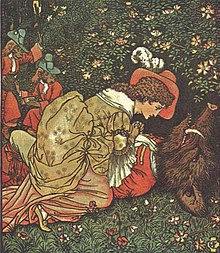
Вдовец-торговец живет в особняке со своими двенадцатью детьми (шесть сыновей в Шесть дочерей). Все три его дочери очень красивы, но младшая, Красавица, самая милая, а также добрая, начитанная и чистая сердцем; в то время как две старшие сестры, напротив, жестоки, эгоистичны, тщеславны и избалованы. Темной и бурной ночью в море все его богатство было ограблено пиратами, которые потопили большую часть его торгового флота и вынудили всю семью жить в небольшой сарае, чтобы работать зарабатывая на жизнь. В то время как Красавица, заставляет ее выполнять работу по дому, чтобы заработать достаточно денег, чтобы выкупить свой бывший дом.
Год спустя торговец слышит от одного из членов своей команды, что одно из отправленных им торговых судов прибыло обратно в порт, предотвращав уничтожения своих товарищей. Перед отъездом он спрашивает своих детей, чтобы он принес им подарки. Сыновья просят оружие и лошадей для охоты, в то время как старшие дочери просят одежду, драгоценности и лучшие платья, поскольку они думают, что его богатство вернулось. Красавица ничего не просит, кроме своего отца, чтобы быть в безопасности, но когда он настаивает на покупке ей подарка, она удовлетворяется обещанием розы, которая не росла прошлой весной. Торговец обнаруживает, что груз его корабля был конфискован для оплаты долгов, в результате чего он остался без гроша и не может покупать подарки своим детям.
На обратном пути торговец попадает в ужасный шторм. Отчаянно ища убежища, он попадает в таинственный дворец. Видя, что никого нет дома, торговец пробирается внутрь и находит внутри, нагруженные едой и напитками, которые, похоже, оставил ему невидимый хозяин дворца. Купец принимает этот подарок и ночует там. На следующее утро торговец пришел посмотреть на дворец, когда увидит розарий и вспоминает, что Красавица розу. Без предупреждения торговец быстро сорвал самую красивую розу, какую только смог найти, и собирался собрать еще, чтобы создать букет, но в итоге столкнулся с отвратительным «Чудовищем», который предупреждает его, что кража его собственность, то есть роза (после принятия его гостеприимства), карается смертью. Осознав свою смертельную ошибку, торговец просит прощения, что он только что сорвал розу в качестве подарка для своей младшей дочери. Выслушав его рассказ, Зверь неохотно соглашается ему отдать розу Красавице, но только в том случае, если купец принесет ему Красоту взамен без обмана; он дает понять, что Красавица должна занять его место до такой степени, что он будет относиться к ней как к своей невесте, а не ее пленнице, не питая при этом иллюзий относительно ее затруднительного положения. В противном случае Зверь грозит уничтожить всю свою семью.
Сначала торговец неуверенно расстраивается из-за того, что Красавицу похитили и вынудили выйти за него замуж, но он неохотно принимает это условие. Чудовище отправляет его в путь верхом на коне вместе с богатством, драгоценностями и красивой одеждой для его сыновей и дочерей, но подчеркивает, что Красавица никогда не должна знать его сделке. Купец, придя домой, пытается скрыть секрет от своих детей, но Красавица специально вырывает его у него. Быстро отреагировав, братья пойти в замок и вместе сразиться со Зверем, в то время как старшие сестры возлагают вину на Красавицу за обречение всей семьи. Купец отговаривает своих детей, запрещая им приближаться к Зверю. В конце концов, той же ночью встретиться Красавица ускользает из дома, вопреки приказу отца, противостоять чудовищем в одиночку.

Как только она прибывает в его дворец, Чудовище радуется встрече с ней к лицу, поэтому он устраивает приветственную церемонию, угощая ее удивительным кабаре-шоу. Он дает ей роскошную одежду и еду, ведет с ней длительные беседы, и она отмечает, что он склонен к глупости, а не к жестокости. Каждую ночь Чудовище просит Красавицу переспать с ним, но каждый раз получает отказ. После каждого отказа Красавица мечтает о красивом «Принце», с которым она танцует. Внезапно появляется фея и умоляет Красавицу ответить, почему она продолжает отказывать ему, на что она отвечает, что не знает, как любить Зверя, потому что любит его только как друга, а не как соблазнителя.. Несмотря на появление феи, убеждающая ее не быть обманутой внешностью, она не делает связи между «принцем» и «зверем» и убеждается, что Зверь держит принца в плену где-то в его замке. Она ищет и находит множество заколдованных комнат, источников развлечений, от библиотек до вольеров и заколдованных окон, позволяющих ей посещать театр. Она также встречает много живой мебели и других живых объектов, но никогда не встречается с Принцем из ее снов.
В течение целого месяца Красавица живет роскошной жизнью во дворце Чудовища, удовлетворяя все прихоти, без конца богатства, чтобы развлечь ее, и бесконечного запаса изысканных нарядов для ношения. В конце концов, она начинает тосковать по дому и умоляет Зверя ей снова увидеться с семьей. Он разрешает это при условии, что она вернется ровно через неделю. Красавица соглашается с этим, и ей дарят заколдованное кольцо, которое позволяет ей мгновенно просыпаться в новом ее семье, если ее трижды повернуть вокруг пальца. Остальные члены ее семьи с удивлением обнаруживают, что она сытая и одетая в наряды. Красавица пытается разделить великолепные платья и драгоценности, которые Зверь подарил ей, со своими старшими сестрами, но они превращаются в лохмотья от прикосновения ее сестер и возвращаются к ее великолепию, когда возвращаются к Красавице, поскольку Зверь имеет в виду их только для нее. Ее сестры завидуют, когда слышат ее счастливой жизни в замке, и, подслушивая, она пытается вернуться к Зверю в определенный день, пытается убедить ее держаться подальше от Зверя, даже ее отец угрожает отречься от Красавицы, если она отказывается жениться на своей младшей и более богатой кузине на следующей неделе, свадьба, которая была устроена для его младшей дочери, отнимая у нее кольцо, чтобы помешать ей вернуться в замок Чудовища. Когда она слишком много знает о Зверье, она слишком много знает о Зверье. Красавица сейчас потрясена семьей чрезмерно опекой, и она неохотно останется со своей семьей намного дольше.

Прошла неделя, и у нее начались галлюцинации о Чудовище, лежащем мертвым в своих покоях в своем замке, и она спешит вернуться; она немедленно крадет кольцо у своего отца и использует его, чтобы вернуться к Зверю. Как только она возвращается в замок, опасения Красавицы подтверждаются, когда она находит Зверя, хладнокровно убитого от разъяренной толпы, посланной ее отцом, чтобы держать своих детей, даже Красавицу, подальше от него. Теперь, полностью опустошенная своими грехами, Красавица должна быть научиться любить Чудовище в первую очередь, крича «Мне очень жаль! Это была моя вина! ». Внезапно, когда она произносит эти волшебные слова, Чудовище превращается в прекрасного принца из снов Красавицы. Принц сообщает ей, что давным-давно могущественная ведьма превратила его в ужасного зверя из-за его эгоизма после попыток соблазнить его, и что только обретя настоящую любовь, несмотря на его уродство, проклятие можно снять. Он и Красавица женаты и живут долго и счастливо.
Версия Бомонта
Бомонт резко сократил количество персонажей и упростил рассказ до почти архетипической простоты. История начинается примерно так же, хотя сейчас у торговца только шестеро детей: три сына и три дочери, из которых Красавица. Обстоятельства, приведенные к ее прибытию в замок Зверя, разворачиваются аналогичным образом, и по прибытии ей сообщают, что она там хозяйка, и он будет ей подчиняться. Бомонт снимает большую часть деталей и щедрых описаний, присутствующих в исследованиях дворца Красавицей в версиих Вильнева, и быстро перескакивает к своему возвращению домой. Ей разрешают остаться там на неделю, и когда она прибывает, ее сестры замышляют симулировать нежность к ней, чтобы соблазнить ее остаться еще на неделю в надежде, что Зверь поглотит ее в своей гневе. И снова она возвращается к нему, умирая, и возвращает его к жизни. Затем они женятся и живут долго и счастливо, поскольку она опускает справочную информацию о принце и его семье, а также о Красавице и о ней.
Варианты
Сказка стала одной из самых популярных в устной традиции.
Европа
Франция
Эммануэль Коскен собрал версию с трагическим концом из Лотарингии на северо-востоке Франции под названием Белый волк (Le Loup blanc), в которой младшая дочь просит отца принести ей поющую розу, когда он вернется. Мужчина не может найти ее возвращаться домой, пока не найдет ее. Когда он, наконец, находит поющие розы, он оказывается в замке титулованного белого волка, который сначала хочет убить его за то, что он осмелился украсть его розы, но когда он слышит о своих дочерних розах, он меняет свое мнение и соглашается сохранить ему жизнь, первое, что он должен дать ему, первое, что он должен дать ему, когда он вернется домой, это его младшей дочерью. В замке девушка показывает, что белый волк очарован и может ночью превращаться в человека, но она не должна никому об этом рассказывать. К сожалению, девушку позже навещают две ее старшие сестры, которые заставляют ее рассказать им, что происходит. После того, как она, наконец, делает это, замок рушится и волк умирает.
Анри Пурра собрал версию из Оверни, на юге центральной части Франции, под названием Belle Rose (иногда переводится на английский как Lovely). Роза). В этой версии героиня и ее сестры — дочери бедного крестьянина и названы в честь цветов, а главного героя зовут Роуз, а ее сестры Маргарита (Дейзи) и Джулианна соответственно. У Зверя есть челюсть мастифа, ноги ящерицы и тело саламандры. Финал ближе к версии Вильнева и Бомона: Роза мчится обратно в замок зверей и находит умирающего зверя, лежащего у фонтана. Когда Зверь спрашивает ее, знает ли она, что он не может жить без нее, Роза отвечает утвердительно, и Зверь снова идет в человека, объясняя Роуз, что он был принцем, проклятым за то, что высмеивал нищего, которого может разочаровать только бедная, но добрая девица. В отличие от версии Бомонта, здесь не упоминается, что сестры главного героя наказываются в конце.
Италия
Сказка на удивление популярна в итальянской устной традиции. Кристиан Шнеллер собрал вариант из Трентино под названием «Пение, танцы и музыкальный лист» (нем. Vom singenden, tanzenden und musicirenden Blatte, итальянский: La foglia, che canta, che balla e che suona), в котором Зверь принимает форму змеи. Вместо того, чтобы навестить семью в одиночестве, героиня может пойти на свадьбу своей сестры только в том случае, если она согласится отпустить змею с собой. Во время свадьбы они танцуют вместе, и когда девушка пинает змею за хвост, она превращается в красивого юношу, свадьбы сына графа. сицилийский фольклорист Джузеппе Питре собрал вариант из Палермо под названием Rusina ‘Mperatrici (Императрица Розина). Доменико Компаретти включил вариант из Монтале, названный Беллиндией, в котором Беллиндия — имя героини, а двух ее старших сестер зовут Каролина и Ассунта.. Витторио Имбриани включил версию под названием «Зелинда и чудовище» (Zelinda e il Mostro), в которой героиня по имени Зелинда просит розу в январе. Вместо этого, чтобы навестить свою семью, оставшуюся на время, пока она не обещает, а затем вернуться в замок, здесь Монстр показывает, что ее отец умирает в волшебном зеркале, и говорит, что единственный способ спасти его — это говоря, что она любит его. Зелинда помогает, и Монстр превращается в человека, который говорит ей, что он сын Короля Апельсинов. Обе версии Компаретти и Имбриани были включены в новеллу Sessanta popolari montalesi Герардо Неруччи. Британский фольклорист Рэйчел Харриетт Баск собрала из Рима версию под названием «Зачарованное розовое дерево», где у героини нет сестер. Антонио Де Нино собрал вариант из Абруццо в восточной Италии, который он также назвал Беллиндией, в котором вместо розы героиня просит золотую гвоздику. Вместо этого, чтобы видеть это в волшебном зеркале или знать об этом, здесь Беллинда знает, что происходит в ее доме, потому что в саду есть дерево, называемое Древом плача и смеха, листья которого поворачиваются вверх, когда в ее семье есть радость, и они падают, когда есть горе. Франческо Манго собрал сардианскую версию под названием Медведь и триры (S’urzu i is tres sorris), в которой Зверь имеет форму медведя.
Итало Кальвино включал и версию на итальянских сказок под названием «Беллинда и чудовище», вдохновленная в основном версией Компаретти, но с добавлением некоторых элементов из версии Де Нино, таких как Древо плача и смеха.
Пиренейский полуостров
Мануэль Мила-и-Фонтаналс собрал интересную версию под названием «Разочарованный королевский сын» (El hijo del rey, desencantado). В том случае, когда отец просит своих трех дочерей, чтобы он им подарил, младшая просит руки королевского сына в браке, и все думает, что она надменна, желая. Отец приказывает своим слугам убить его, но они щадят его, и она прячется в лесу, где они живут вместе. Чтобы разрушить чары, девушка должна убить волка и бросить тело в огонь после его открытия. Из тела выходит голубь, а из голубя — яйцо. Когда девочка разбивает яйцо, выходит сын короля. Франсиско Маспонс и Лаброс расширил и включил сказку на каталонский и его во второй Ло Рондаллэйр. Маспонс-и-Лаброс также собрал другой вариант из Каталонии, названный Lo trist. Здесь вместо роз или других цветов младшая дочь просит коралловое ожерелье. Каждый раз, когда один из членов ее семьи болеет, героиню предупреждают стихии из сада, такие как родник с мутной водой или дерево с увядшими листьями. Когда она идет навестить свою семью, она должна возвращаться со зверем каждый раз, когда слышит звон колокола. После третьего визита в семью героиня возвращается в сад, где находит увядшим ее любимый розовый куст. Когда она срывает розу, появляется чудовище, превращающееся в красивого юношу.
Версия из Эстремадура, собранная Серхио Эрнандесом де Сото под названием «Принц-медведь» (El príncipe oso), начинается схожей с версией Бомонта. и версии Вильнева, где отец героини теряет состояние после кораблекрушения. Когда у него появляется шанс вернуть свое богатство, отец спрашивает у дочерей, что они хотят, чтобы он привез домой из путешествия, а героиня просит лилию вместо розы. Когда торговец наконец находит лилию, появляется медведь и говорит, что младшая дочь торговца должна прийти в сад, потому что она единственная, кто может исправить ущерб, причиненный торговцем. Младшая дочь идет и находит раненого на земле медведя. Единственный способ вылечить его — восстановить лилию, которую взял отец, а когда девочка восстанавливает ее, медведь превращается в принца. Сказка была переведена на английский Элси Спайсер Иеллс и переименована в «Лили и медведь». Аурелио Македонио Эспиноса-старший собрал версию из Альменар-де-Сориа под названием «The Lily and the Bear». «Зверь розового куста» (La fiera del rosal), в котором героиня является дочерью короля, а не торговца. Аурелио Македонио Эспиноса-младший опубликовал версию из Сепульведа, Сеговия под названием «Зверь из сада» (La fiera del jardín). В этой версии у героини есть мачеха и две сводные сестры, и она просит неуказанный белый цветок.
В португальской версии, собранной Зофимо Консильери Педросо, героиней просит кусок плотвы на зеленом лугу, после того как ее отец настаивает, что она должна попросить что-то такое же, как ее старшие сестры. Отец наконец находит кусок скалы на зеленом лугу в замке, где он не видит никого, живущего там, но слышит голос, говорящий, что он должен привести во дворец свою младшую дочь. Вместо волшебного зеркала героиня знает, что происходит в доме ее отца, каждый раз, когда она спрашивает голос, почему птица поет. Она трижды навещает свою семью: первые два из-за того, что ее сестры выходят замуж, а третий из-за смерти отца. Чтобы узнать, когда она должна вернуться в замок, посылается лошадь, и героиня должна уйти, услышав его трижды. Когда она в третий раз идет в гости к семье, ее отец умирает, и после похорон она так устала, что проспала, поэтому не слышит, как лошадь подъезжает, трижды ржет и уходит. Когда она наконец возвращается в замок, она обнаруживает, что зверь умирает, и на последнем издыхании он проклинает ее и всю ее семью. Через несколько дней героиня умирает, а ее сестры провели остаток жизни в бедности. Другая португальская версия из Ourilhe, собранная Франсиско Адольфо Коэльо и названная A Bella-menina, ближе к сказке Бомонта, со счастливым концом,в котором зверь оживает и разочаровывается.
Бельгия и Нидерланды
В фламандской версия из Veurne под названием «Роза без шипов» (Roosken zonder Doornen) разочарование принца сильно отличается от версии Бомона и Вильнева.. Героиня и монстр отправляются на каждую из свадебных старших сестер героини, и, чтобы разрушить чары, героиня должна произнести тост за зверя. На первой свадьбе героиня забывает это сделать, но на второй она это вспоминает, и зверь превращается в человека. Другая фламандская версия из Wuustwezel, собранная Виктором де Мейером, ближе к заговору Бомонта: младшая дочь купца осталась еще на один день в доме своей семьи и вскоре после этого вернулась во дворец Чудовища, когда она опасается, что что- то плохое должно быть случилось с ним. Это одна из немногих версий, где купец сопровождает свою дочь в ее возвращении в замок Зверя. Еще ближе к сюжету Бомонта голландская версия из Дрибергена под названием Розина.
Германия и Центральная Европа
братья Гримм Изначально собрал вариант рассказа. Под названием «Летний и зимний сад» (Von dem Sommer- und Wintergarten): здесь младшая дочь просит розу зимой, поэтому не может найти розу нигде, кроме сада, где одна половина всегда зима, а другая половина. где всегда лето. После сделки со зверем отец ничего не говорит дочерям, поэтому через восемь дней зверь появляется в доме купца и забирает младшую дочь. Здесь возвращается героини недостаточно, чтобы исцелить ее больного отца, который умирает. Дочь торговца остается дольше из-за похорон ее отца, и когда она наконец возвращается, она находит зверя, лежащего под грудой кочанов капусты. Оживив его обливанием воды, зверь превращается в прекрасного принца. Сказка появилась в первом издании их сборника в 1812 году, но, поскольку они сочли сказку слишком похожей на ее французский аналог, они опустили ее в следующих изданиях.
Несмотря на это, несколько других фольклористов собрали варианты с немецкоязычных территорий. Людвиг Бехштейн опубликовал две версии. В первом, Маленькая Метла (Besenstielchen), героиня, которую здесь зовут Неттхен, имеет лучшего друга, которого зовут Маленькая Метла из-за метлы ее отца. Как в «Летнем и зимнем саду» Неттхен просит розы посреди зимы, которые могут найти только в саду Чудовища. Когда подъезжает карета, чтобы отвезти Неттхен в замок Чудовища, отец Неттхена посылает заинтересованную Маленькую Метлу, представляющую Неттхен. Несмотря на это, Чудовище показывает схему, отправляет Маленькую Метлу домой, а Нетчен вынужден отправиться в замок Чудовища. Здесь разочарование принца происходит перед визитом Неттхен к своей семье, чтобы вылечить отца, используя сок растения из сада принца. Завидуя удаче своей младшей сестры, сестры Неттхен убивают ее, топив в ванне, но Неттхен воскрешает та же волшебница, которая прокляла принца. Старшие сестры Неттхен слишком опасны, но Неттхен не хочет их смерти, волшебница превращает их в каменные статуи. Во втором, «Маленькая веточка ореха» (Das Nußzweiglein) героиня просит титульную веточку. Когда отец, наконец, находит его, он должен заключить сделку с медведем, пообещав ему первое существо, которого он встретит, когда придет домой, использованная его младшая дочь. Как и в «Маленькой метле», торговец пытается обмануть медведя, посылая ему другую девушку, которая притворяется его дочерью, но медведь обнаруживает это, и дочь торговца вынуждена идти с ним. Пройдя вместе двенадцать комнат, наполненных отвратительными существами, медведь превращается в принца.
Карл и Теодор Колсхорн собрали две версии из Ганновера. В первом, Звенящем лязгании Ловеслиф (Vom klinkesklanken Löwesblatt), героиня — дочь короля, а не торговца. Она просит титульный лист, который король получит только после того, как заключит сделку с черным пуделем, пообещав дать ему через год и день первый, который получит его, когда он вернется домой. Оказавшись младшей дочерью короля, как в версии Бехштейна, они пытались обмануть пуделя, давая ему других девочек, притворяющихся принцессой, но стручок всегда обнаруживает озорство. Наконец принцесса идет с пуделем, который приводит ее в хижину посреди леса, где принцесса чувствует себя одинокой, что принцесса желает компании, если даже это была старая нищая женщина. В это же мгновение появляется старая нищенка, как разрушить чары в обмен на приглашение на свадьбу принцессы. Княгиня сдержала свое обещание, а ее мать и сестры, выразившие отвращение при виде старухи-нищей, стали кривыми и хромыми. Во втором, «Проклятая лягушка» (Der verwunschene Frosch), героиня — дочь купца, как в версиих Бомона и Вильнева. Очарованный принц имеет форму лягушки, и она просит трехцветную розу. Эрнст Майер собрал версию из Швабии на юго-западе Германии, в которой героиня имеет только одна сестра вместо двух.
Игнац и Йозеф Зингерле собрали австрийский вариант из Таннхейма под названием Медведь (Der Bär), в котором, в отличие от других версий, героиня — старшая из трех дочерей купца вместо младшей. Как и в «Летнем и зимнем саду» и «Маленькая метла», главный герой просит розу посреди зимы. Как и в версии Зингерле, Зверь имеет форму медведя в швейцарском варианте Медведя-принца (Der Bärenprinz), собранном Отто Сутермейстером. Младшая дочь просит вместо цветов виноград.
Скандинавия
Эвалд Тан Кристенсен собрал датскую версию, которая довольно близко следует версии Бомонта. Самая существенная разница в том, что заколдованный принц имеет форму лошади. В версии с Фарерских островов младшая дочь просит яблоко вместо розы.
Россия и Восточная Европа
Александр Афанасьев собрал русский версия, «Заклятый царевич», в которой младшая дочь рисует цветок, который хочет принести ей отец. Зверь здесь — трехголовая крылатая змея. В украинской версии оба родителя героини мертвы. Зверь, имеющий форму змеи, дает ей волшебных людей, чтобы оживить их, натирая ими их. Яблоко также играет важную роль, героиня отправляется навестить свою семью в польской версии из Мазовии, в данном случае, чтобы предупредить героиню, что она останется дольше, чем обещала. В другой польской версии из Краков героиню зовут Бася, у нее есть мачеха и две сводные сестры. В чешском вариант не отец героини, а мать, сорвавшая цветок и заключившая сделку со Чудовищем, который здесь имеет форму василиска, которого героиня должна обезглавить позже, чтобы разрушить чары. В моравской версии младшая дочь просит три белые розы, а Зверь имеет форму собаки; в то время как в другой версии, также из Моравии, она просит одну красную розу, а Зверь имеет форму медведя. Зверь также имеет форму медведя в словацком вариант под названием «Три розы» (Тройружа), собранном Паволом Добшинским, в котором младшая дочь просит три розы на одном стебле. ; и в словенской версии из Ливека под названием «Зачарованный медведь и замок» (Začaran grad в медведе), где героиня разрушает чары, читая о судьбе заколдованного замка в старинном пыльной книге. В венгерской версии под названием «Говорящий виноград, улыбающееся яблоко и звенящий абрикос» (Szóló szőlő, mosolygó alma, cseng barack) Зверь имеет форму свиньи, и король соглашается дать ему свою младшую руку дочери в браке, если свинья способна перемещать королевскую карету, она застряла в грязи.
Греция и Средиземноморье
Версия с острова Закинф, в запросе Греции принц превратился в змею нереидой, которую он отверг. Принц также превратился в змею в версию из Кипр, где он был проклят сиротой, которая была его любовницей. Подобно версии Бомонта, в конце старшие сестры героини превращаются в каменные столбы.
Азия
Восточная Азия
Североамериканский миссионер Адель М. Филде собрал версию из Китая под названием «Сказочный змей», в которой семью героини посещают осы, пока она не уйдет со змеем. Однажды колодец, которая обычно приносит, идет к источнику за водой. Когда она возвращается, она находит змею умирающей и оживляет его, погружая в воду. После этого он превращается в человека. Во втором китайском варианте, «Царь змей», принц змей видит старика, собирающего цветы в садах принца, и раздраженно требует, чтобы старик послал к принцу одну из своих дочерей. Младшая, Миндаль Блоссом, будучи «самой преданной сыновней», предлагает пойти вместо отца. В третьем варианте, предположительно из Китая, Жемчужина моря, младшая дочь богатого китайского торговца Пекоэ, просит чип Великой Китайской стены, на ее сне. Ее отец делает это, и ему угрожает армия татар, которые работают на своего хозяина. На самом деле татарский хозяин — ее дядя Чанг, который был очарован еще до этой истории и мог освободиться от проклятия только до тех пор, пока женщина не согласилась жить с ним на Великой стене.
Юго-Восточная Азия
Америка
Северная Америка
Уильям Уэллс Ньюэлл опубликовал в «Журнале американского фольклора» статью ирландских американцев под простым названием «Роза», в которой Зверь принимает форма льва. Мари Кэмпбелл собрала версию из Аппалачей под названием «Букет цветов Лаурелы в подарок», в которой принц был превращен в лягушку, как в одной из версий, собранных братьями Колшорн. Джозеф. Медар Каррьер собрал версию, в которой зверь описан с головой льва, ногами лошади, телом быка и хвостом змеи. Как и в конце версии Бомонта, сестер Бьюти превращают в каменные статуи.
Южная и Центральная Америка
Линдольфо Гомес собрал бразильскую версию под названием A Bela ea Fera, в которой сделка также состоит в том, что отец пообещал подарить Зверю первое живое существо, которое встретит его, когда он придет домой, а героиня отправляется навестить свою семью, потому что ее старшая сестра выходит замуж. Гонсалес Казанова собрал версию из науатля под названием La doncella y la fiera, в которой, вернувшись в дом своей семьи, героиня находит зверя, лежащего на земле мертвым. Девушка засыпает рядом с ним, и ей снится зверь, который говорит ей срезать определенный цветок и распылить воду из него на его лицо. Героиня делает то, что ему велят, и чудовище превращается в красивого молодого человека.
Более широкие темы
Харрис определяет два самых популярных направления сказки XVIII века как фантастический роман для взрослых. и поучительная сказка для детей. «Красавица и чудовище» интересна тем, что заполняет этот пробел: версия Вильнева написана как салонная сказка для взрослых, а Бомон написана как дидактическая сказка для детей.
Комментарий

Татарин (2017) сравнивает сказку с темой «животных невест и женихов», встречающейся в фольклоре на протяжении world, указывая на то, что французская сказка была специально предназначена для подготовки молодых девушек во Франции 18 века к браку по договоренности. Городское начало необычно для сказок, как и социальный класс персонажей, ни королевский, ни крестьянский; он может отражать социальные изменения, происходящие во время его первого написания.
Hamburger (2015) указывает, что изображение Чудовища в экранизации 1946 года автора Жана Кокто был вдохновлен портретом Петруса Гонсалвуса, уроженца Тенерифе, который страдал гипертрихозом, что привело к аномальному росту волос на его лице и других части, и который попал под защиту французского короля и женился на красивой парижанке по имени Катрин.
Современные способы использования и адаптации
Сказка была особенно адаптирована для экрана, сцены, прозы и т. д. и телевидение на протяжении многих лет.
Литература
- Аленький цветочек (1858), русская сказка Сергея Аксакова.
- Красавица и чудовище… История пересказанная (1886), автор Лаура Э. Ричардс.
- Красавица: пересказ истории красоты и чудовища (1978), автор Робин МакКинли.
- Роуз Дочь (1997), Робин МакКинли.
- Ухаживание за мистером Лионом (1979), из книги Анджелы Картер Кровавая палата, основанной на версии мадам Ле Принс де Бомон.
- Красавица (1983), рассказ Танит Ли, научно-фантастический пересказ «Красавицы и чудовища».
- Fashion Beast, сценарий 1985 года Алан Мур, экранизация графического романа в 2012 году.
- Зерно истины (1993), рассказ Анджея Сапковского в Последнее желание.
- Повелитель негодяев (1995), Лоретта Чейз, романс эпохи Регентства и пересказ «Красавицы и чудовища».
- Огненная роза (1995), от Мерседес Лэки.
- Квантовая роза, Кэтрин Асаро, научно-фантастический пересказ «Красавицы и чудовища».
- Звериный (2007), автор Алекс Флинн, версия, которая является частью истории современного Манхэттена.
- Бриони и Розы (2015), Т. Кингфишер (псевдоним Урсула Вернон )
- Белль: An Пересказ амишей красоты и чудовища (2017), автор Сара Прайс
- Суд шипов и роз (2015), Сара Дж. Маас
- (2019), автор Бриджид Кеммерер
Фильм
- La Belle et la Bête (1946), режиссер Жан Кокто, Жан Марэ в роли Чудовища и Жозетт Дэй в образе красавицы.
- Аленький цветочек (1952), анимационный художественный фильм режиссера Льва Атаманова, снятый на Союзмультфильме.
- Красавица и чудовище (1962), режиссер Эдвард Л. Кан, в главных ролях — Джойс Тейлор и Марк Дэймон.
- Панна и нетвор (1978), чешский фильм режиссера Юрай Херц.
- Красавица и существо ast (1987), музыкальная версия с живыми выступлениями режиссера Юджина Марнера, с Джоном Сэвиджем в роли Чудовища и Ребеккой Де Морней
- Красавица и красота. Чудовище (1991), анимационный фильм, созданный Walt Disney Feature Animation и режиссер Кирк Уайз и Гэри Троусдейл, сценарий по сценарию Линда Вулвертон и песни Алана Менкена и Говарда Эшмана.
- Кровь зверей (2005), фильм периода Викинг режиссера Дэвид Листер, также известный как Красавица и Чудовище.
- Спайк (2008), режиссер Роберт Бокедж, мрачная версия сказки, обновленная до наших дней.
- Звериный (2011), режиссер Дэниел Барнз и в главной роли Алекс Петтифер в роли чудовища (по имени Кайл) и Ванесса Хадженс в роли любовного увлечения.
- Красота и Чудовище, (2014), франко-немецкий фильм.
- Красавица и чудовище (2017), экранизация диснеевского мультфильма 1991 года. фильм, в главных ролях Эмма Уотсон и Дэн Стивенс.
Телевидение
- Красавица и чудовище (1976), снятый для телевидения фильм с Джорджем Скоттом в главной роли и Триш Ван Девер.
- Красавица и Чудовище (1984), эпизод Шелли Дюваль Театр сказок, в главной роли Клаус Кински и Сьюзан Сарандон.
- Красавица и чудовище (1987), телесериал, в котором рассказывается об отношениях между Кэтрин (играет Линда Гамильтон ) и адвокат, который живет в Нью-Йорке, и Винсент (играет Рон Перлман ), мягкий, но львиный «зверь», обитающий в туннелях под городом.
- Красавица и чудовище (2012), переработчик сериала 1987 года с участием Джея Райана и Кристин Кройк.
- Сказочная классика Гримма, эпизод «Красавица и чудовище» ( «История лета» сад и Зимний сад) (1988), в которой Чудовище имеет облик людоеда.
- Happily Ever After: Fair y Сказки для каждого ребенка (1995), эпизод «Красавица и чудовище», в котором голосами Ванесса Л. Уильямс и Грегори Хайнс. Зверь изображен с головой носорога, львиными гривой и хвостом, гуманоидным телом и верблюжьим горбом.
- Истории из моего детства, эпизод «Красавица и чудовище (Сказка о Багровый цветок» (1998), в котором голоса Эми Ирвинг в роли Красавицы, Тима Карри в 479>Однажды в сказке, эпизод «Скин Дип » (2012), в главных ролях Эмили де Рэвин <, роли Чудовища и Роберта Лоджи в роли отца Красавицы. 329>и Роберт Карлайл.
- София Первая в главных ролях «Красавица — чудовище» (2016), в которой принцесса Шарлотта Айлвортская (озвучивает Меган Хилти ) превращается в зверя (помесь человека
Театр
- La Belle et la Bête (1994), опера Филипа оригинальный Гласса по фильму Кокто. Композиция Гласса повторяет сцену за сценой фильма, эффективно создавая новое саундтрек к фильму.
- Красавица и Чудовище (1994), музыкальная реклама Восприятие диснеевского фильма Линды Вулвертон и Алана Менкена с дополнительными стихами Тима Райса.
- К расавица и чудовище (2011), балетом хореографии Дэвид Никсон для Northern Ballet, включая композиции Бизе и Пуленк.
Другой
- A поиск предметов, Mystery Legends: Beauty и Чудовище, был выпущен в 2012 году.
- игра с поиском предметов серия Темные притчи, основанная на основной истории 9-й игры (Королева песков) на сказке.
- Повествование в приключенческой игре Sierra Entertainment King’s Quest VI следует нескольким сказкам, а Красавица и Чудовище — это главная тема одного квеста, состоящего из нескольких частей.
- Стиви Никс записала «Красавица и Чудовище » для своего сольного альбома 1983 года, Дикое Сердце.
- Реальная жизнь, основанная на видео для их фирменного хита «Пошли мне ангела » по сказке.
- Продюсер дискотеки Алек Р. Костандинос выпущен двенадцать дюймов рядом с его проектом Love Kisses с темой сказки на дискотеке 1978 года.
- интерактивная фантастика работа, бронза Эмили Шорт, это ориентированная на головоломку адаптация «Красавицы и чудовища».
См. Также
- Эрос и Психея
- К востоку от Солнца и к западу от Луны
- Благородный дикарь
- Смена облика
Ссылки
Внешние ссылки
- «Красавица и чудовище: сказки Аарне-Томпсона тип 425C
- Библиография Золушки — включает исчерпывающий список произведе ний BT в книгах, на телевидении и в этойх
- Оригинальная версия и психологический анализ «Красавицы и чудовища» (Архив на Wayback Machine)
- (на французском) La Belle et la Bête, аудиоверсия
Сюжет, «древний словно свет», известен, пожалуй, каждому жителю земли. Он – заколдованный прекрасный принц, она – простая девушка с добрым сердцем, способная за обликом чудовища разглядеть его сущность и разрушить заклятие. Спустя 20 дней с момента российской премьеры картины Билла Кондона «Красавица и Чудовище» корреспондент «АиФ Оренбург» сравнивает оригинал сказки и ее последующие версии с самыми известными экранизациями, а так же с русской сказкой «Аленький цветочек». Обратим внимание читателей, которые еще не посмотрели киноновинку на то, что в статье имеются спойлеры.
Откуда растут… лапы
История Красавицы и Чудовища до того, как принять канонический, знакомый нам всем вид, пережила несколько переработок. В результате, из повести с рейтингом 18+ мы получили детскую прекрасную сказочку… Чтобы переснять ее с рейтингом 16+. Но обо всем по порядку. Подобных сюжетов про всеисцеляющую силу любви, в мире немало. Один из первых мы можем обнаружить в написанной во II веке книге древнеримского писателя Апулея «Метаморфозы, или Золотой осел».
Среди прочих историй в книге содержится и рассказ, повествующий о любви Амура и Психеи. Психея, будучи смертной дочерью земного царя, была настолько красива, что вызвала зависть у самой Венеры. Не в силах терпеть такую конкуренцию, богиня приказала своему сыну Амуру любыми способами влюбить Психею «в такое убожество, что во всем мире не нашлось бы более жалкого». Стоит отметить, что нечеловеческая красота делала Психею ужасно несчастной, так как никто из мужчин не торопился ее брать в жены. Решив, что над дочерью тяготеет проклятье, отец девушки отправился к оракулу. Тот сообщил опечаленному царю, что нет среди смертных его зятя и, дабы не гневить богов, посоветовал оставить дочь на краю обрыва, где ее заберет ужасное крылатое нечто. Так все и происходит. Оказавшись во дворце своего суженого, Психея, однако, не видит его, а лишь слышит голос и ощущает его физическое присутствие. Навещая жену каждую ночь и беседуя с ней, существо просит не пытаться раскрыть его сущность. Вся сказочная жизнь Психеи идет под откос, когда она упрашивает своего невидимого супруга отпустить ее к сестрам. Те, естественно, оказываются злыми и завистливыми, и подговаривают младшую сестру зарезать безобразного мужа. Вернувшись во дворец, молодая жена перед расправой с мужем, решает взглянуть на него, и в свете ночной лампы видит Амура. Оказывается, непослушный сын Венеры, сам взял Психею в жены. Залюбовавшись прекрасным ликом мужа, девушка не заметила, как капля воска сорвалась вниз и обожгла плечо спящего бога. Теперь, когда тайна раскрыта, Амур должен покинуть Психею, чтобы не разгневать Венеру. И с этого момента начинаются долгие приключения царевны. В древнегреческом тексте мы можем увидеть первоосновы будущей истории о Красавице и Чудовище. Кстати, в 1778 году историю Амура и Психеи ляжет в основу поэмы «Душенька» русского поэта Ипполита Богдановича. Совпадение или нет, но с греческого имя Психея значит душа и, возможно, перекликается с названием произведения Богдановича.
Второй всплеск развития истории о прекрасной девушке и безобразном чудовище получила уже в Средние века. В 1553 году итальянец Страпарола в книге «Приятные ночи» рассказывает о принце-поросенке. Однако в его версии мальчик не был проклят, а был специально обращен добрыми феями в парнокопытное, дабы исключить всякую возможность брака по расчету. Оборотное заклятье должно было быть разрушено чистой любовью. Другой итальянец – Карло Гоцци в 1746 году создает сказку в пяти действиях «Синее Чудовище», где проклятию обращения подвергаются уже двое мужчин. Согласно сказочному сюжету, заколдованный Дзелу сможет принять свой истинный облик лишь после того, как подвергнет такому же испытанию влюбленную пару. Он превращает Таэра – возлюбленного грузинской принцессы Дарданэ в подобное себе чудовище и сообщает ему «пренеприятнейшее известие». Юноша сможет опять стать человеком лишь в том случае, если Дарданэ полюбит его заново в новом обличье. На все про все у парочки есть несколько дней. Чувствуете, как постепенно появляются детали, которые позже найдут отражение в итоговой love story? У лишенного даже возможности открыть Дарданэ свое имя Таэра все же получается вновь влюбить в себя девушку. Проклятие Синего чудовища спадает с обоих юношей.
Золотая веточка, красная роза и лягушачья кожа
Волшебный предмет, из-за которого начинается вся история любви, впервые появляется в сказке «Золотая ветвь» француженки Мари-Катрин Д’Онуа в 1698 году. Именно ее просит привезти Красавица, после чего и становится пленницей медведя. В 1872 году автор романа-эпопеи «Война и мир» Лев Толстой выпустит в России свою версию этой сказки под названием «Ореховая ветвь».
Сюжет «Красавицы и Чудовища» называется «бродячим», так как похожие произведения можно найти в культуре почти всех народов. Например, сказка «Перышко Финиста-Ясна Сокола» из сборника Александра Афанасьева. Там героиня становится женой сокола. В сказке братьев Гримм «Поющий и прыгающий львиный жаворонок» Красавица просит привезти ей жаворонка и в итоге становится возлюбленной льва. У итальянцев есть сказка «Зелинда и Страшилище», у англичан «Большая собака с мелкими зубами», у немцев – «Летний и зимний сад», у украинцев – «Уж-царевич и верная жона». В турецкой литературе есть старинное сказание про дочь падишаха и свинье, в индонезийской — о муже-ящерице, в китайской — о волшебной змее. Не стоит забывать и про «обратные» сказки, где роль чудовища выпадает женщине. Например, «Царевна-лягушка». Здесь роль роковой розы, отсчитывающей дни проклятия, исполняет лягушачья шкурка. В сказке «Отвратительная леди» героиня была настолько ужасна, что долго не могла найти героя, который бы вернул ей ее истинное обличье с помощью простого поцелуя. Но, к счастью, такой отважный юноша все же находится.
Так и быть, притянем «за уши» сюда же и старинную балладу «Herr Mannelig», повествующую слушателю о троллихе, желавшей стать человеческой женщиной. Согласно древним поверьям тролль может стать человеком, если и его полюбит представитель нашего «племени». Сказочное существо уговаривает рыцаря Маннелига поцеловать ее, предлагая взамен волшебные дары и неслыханные богатства. Но рыцарь отвергает (о, глупец!) и любовь троллихи, и ее богатства, мотивируя это тем, то та не является христианкой.
Таким образом, мы видим, как каждая из предыдущих историй по ниточкам ткала сюжет канонической истории о любви Красавицы к Чудовищу. Сюжет, который в один прекрасный момент окажется в руках двух сказочниц.
Недетская сказка
В XVIII веке француженка мадам Габриэль-Сюзанна Барбо де Вильнёв, 26-летняя вдова, гонимая нуждой, перебирается в Париж, где начинает промышлять сочинительством. Однако разбогатеть на данном поприще ей не удалось. Зато удалось оставить в истории литературы неизгладимый след и стать «матерью» истории о любви Красавицы и Чудовища.
Мир увидел сказочную повесть в 1740 году. Тогда она вошла в четырехтомник «Юная американка, или Истории, рассказанные в море», занимала свыше ста листов и была лишь частью книги, так называемым, рассказом в рассказе. Сказку «La Belle et la Bete» («Красавица и Зверь») юной девушке-пассажирке рассказывает ее горничная. Да-да, уважаемый читатель, вы совершенно законно удивляетесь имени зверя в заглавии. Дело в том, что французское la Bete, так же как и английское the Beast в первую очередь переводится, как зверь. Чудовище же в английском варианте звучит не иначе, как monster, а во французском — le monstre. Но, ни мадам де Вильнёв, ни ее последовательница мадам де Бомон не делали упора на описание внешности заколдованного принца. Де Вильнёв лишь указала, что у Чудовища имеется слоновий хобот («…он увидел перед собой чудовищного зверя с хоботом как у слона, которым тот яростно обвил его шею»). Отсутствие описания Чудовища давало фантазии читателя возможность нарисовать его таким, каким ей хотелось.
В сказке мадам Вильнёв подробно описывает злоключения овдовевшего купца, который разорился и был вынужден перебраться в деревню вместе со своими шестью сыновьями и шестью дочерьми. В плен к Зверю купец попадает, возвращаясь с рабочей поездки. И вот тут-то и начинают разворачиваться события, которые «подарили» сказке Вильнёв рейтинг 18+. Купец умоляет Зверя отпустить его попрощаться с детьми и обещает вернуться. На что хозяин замка отвечает, что если тот нарушит свое слово, то он найдет и убьет и его, и всю его семью. Вместо купца в замок возвращается его прекрасная дочь. Но, так как Зверь был обращен разгневанной Феей и лишен возможности нормально говорить, то он не мог объясниться с девушкой. Каждый день их беседа ограничивалась тремя вопросами: как Бэлль провела день, понравился ли ей ужин и… согласится ли она лечь с ним в постель. Причем лечь в постель – не подразумевает спать вместе, а именно вступить с ним в интимную связь. И каждый раз Зверь получает отказ. В ночных видениях к девушке приходит прекрасный юноша и просит его освободить. Белль считает, что красавчик из снов такой же пленник Зверя, как и она, и томится в одной из комнат замка. Наличие юноши подтверждают и портреты.
Мы не будем пересказывать всю сказку Вильнёв, так как в основном она весьма похожа на ту, что мы знаем сегодня (за исключением сцен для взрослых). Но отметим, что впереди читателя ждет подробное повествование о вражде королей и фей, как старая королева-мать противилась браку принца с Бэлль, указывая на ее неблагородное происхождение. Приоткроем только завесу тайны. Да-да, Бэлль все-таки разделила ложе с Чудовищем, тем самым сняв с принца заклятие.
Как роза стала цветочком аленьким
Такая сказка не годилась для чтения малышам. Чтобы сделать ее доступной для широких масс, текст нужно было серьезно сократить и адаптировать. Что и сделала Жанна-Мари Лепренс де Бомон, считавшая себя в первую очередь педагогом. Бомон писала: «…мы должны воспитывать в пятнадцатилетней девочке женщину-христианку, любящую супругу, нежную мать, бережливую хозяйку», а лучшими помощниками в этом деле называла правильные книги. В 1756 году мадам де Бомон издает «Детский журнал, или диалоги между разумной гувернанткой и несколькими ее воспитанницами». На примере разных историй (среди которой и сказка про Красавицу и Чудовище) мадам учит девочек поведению, достойному леди. В версии де Бомон сказка заканчивается превращением Чудовища в принца. Кроме того, будучи в страшном облике, Принц не предлагает Бэлль разделить с ним ложе, а просто делает предложение и, как только девушка говорит заветное «да», он превращается в человека, а весь замок освобождается от чар.
Теперь, когда мы разобрались с иностранными версиями сказки, обратим свой взор в сторону отечественной версии. «Аленький цветочек» Сергея Аксакова является той же историей про девицу и зверя, но «просеянной» через «народное сито». В 1858 году были изданы «Детские годы Багрова-внука», в состав которых и вошел «Аленький цветочек». В скором времени писатель отделяет сказку от общего текста и делает отдельным приложением. Теперь помимо названия «Цветочек» имеет еще и подзаголовок — «Сказка ключницы Пелагеи».
Сказка вышла русской не только по форме (три сестры вместо двенадцати детей, чисто русские словесные обороты и т.д.), но и по духу. Если в иностранном произведении роза – лишь деталь, то в русском тексте цветок занимает центральную позицию. Нашу «Бэлль» отличает и целомудренное отношение к Чудовищу. Также Аксаков приводит и подробное описание внешности зачарованного царевича: «…руки кривые, на руках когти звериные, ноги лошадиные, спереди-сзади горбы великие верблюжие, весь мохнатый от верху донизу, изо рта торчали кабаньи клыки, нос крючком, как у беркута, а глаза были совиные».
Вы удивитесь, но аксаковский «Аленький цветочек» отодвинул на задний план французский первоисточник аж до конца советской эпохи и стал самым издаваемым произведением писателя. В 1950 году театр имени Пушкина впервые поставил спектакль по мотивам отечественной сказки, где главные роли исполнили юные Владимир Высоцкий и Вера Алентова. В этом спектакле Красавица впервые обретает имя – Аленушка, а сама постановка попадет в «Книгу рекордов России», как самый долгоживущий детский спектакль. В мультфильме 1952 года Аленушка становится Настенькой, а советские дети видят и навсегда запоминают Чудовище косматым существом с огромными печальными глазами. При создании своего мультфильма режиссер Лев Атаманов применил технику «эклер», где роли играли живые артисты, а затем из движения «обрисовывались» художниками.
С книжных страниц – на экран
В 1991 году студия «Walt Disney Pictures» рисует свой тринадцатый по счету полнометражный мультфильм, ставшим самым успешным анимационным фильмом Диснея для того времени.
Художники постарались на славу и создали Чудовище таким, чтобы юный зритель понимал – он зверь, но и не боялся, что по ночам это страшилище прячется под его кроватью. «Слепили» сказочного принца из частей разных существ: львиной гривы, бровей гориллы, бородки и головы буйвола, кабаньих клыков, медвежьего тела и волчих лап и хвоста. Но глаза у диснеевского Чудовища остались все же человеческими, так как именно по ним Бэлль узнает возлюбленного после обратного превращения. Кстати, в этой экранизации у Чудовища впервые появляется имя. Принца, оказывается, зовут Адам. В современном мультике Красавица изображена уже дочкой изобретателя. Кроме того, девушка самодостаточна, выйти замуж – не главная цель в ее жизни. Она любит проводить время за чтением книг и мечтает о дальних приключениях. Именно их ей обеспечит отец Морис, отправившийся на ярмарку и случайно угодивший в замок Чудовища…
В марте 2017 года произошло событие, которого ждали все поклонники диснеевского мультфильма. Красавица и Чудовище стали героями полнометражного художественного фильма. Кинолента во многом оказалась идентичной рисованному предшественнику, однако режиссер Билл Кондон добавил несколько интересных моментов. В мультфильме в случае любовной неудачи принц Адам должен был остаться в теле Чудовища навсегда. Такая же участь ждала и его слуг, превращенных в предметы быта и кухонную утварь. В фильме же с каждым опадавшим лепестком волшебного цветка замок разрушался все сильнее, а волшебные предметы (чайничек мадам Потт, часы Когсворт, подсвечник Люмьер и другие) все больше и больше превращались в обычную неживую мебель. В итоге Чудовище ждала неприглядная участь остаться в полном одиночестве среди руин замка. Также создатели фильма рассказали и о матери Красавицы, погибшей в Париже от чумы, когда Бэлль была еще совсем малышкой. В отличие от своего мультипликационного воплощения кино-Чудовище умело читать и даже перечитало все библиотеку, кроме нескольких книг на греческом языке. Подобных отличий можно найти массу, но в общем плане картину они не портят.
Те, кто с нетерпением ждал экранизации, получили то, что хотели. «Красавица и Чудовище» Кондона стремительно приближается к званию самого кассового фильма начала 2017 года. На сегодняшний день кассовые сборы составляют 874 895 677 миллионов долларов. Учитывая тот факт, что фильм все еще идет в кинотеатрах, история о любви девушки и зверя может заработать в прокате миллиард долларов.
Но если голливудская сказка была снята по выпущенному раннее американскому мультфильму, то отечественный «Аленький цветочек» с Александром Абдуловым 1977 года получился не совсем детским. Романтичный декаданс, готическая сказка… Совсем маленьким зрителям она может оказаться не совсем понятной, так как фильм получился чересчур взрослым, с зрелым разрешением проблем, пусть и показанных сквозь сказочную призму.
Мнение зрителей
Своим мнением касательно просмотренного фильма зрители начали делиться, уже выходя из зала кинотеатра. В русскоязычной группе, посвященной фильму, мнения поклонников разделились.
От самых юных зрителей можно было улышать и такое: «Мне принц больше понравился в образе Чудовища, чем человека». Маленьким зрителям Дэн Стивенс не показался сказочным красавчиком.
Мнения разделились… Фото: Скриншот
Кто побеждает – те, кому фильм понравился, или те, кому он не понравился, сказать точно нельзя.
Единственное, о чем можно говорить с полной уверенностью, так это о том, что новая «Красавица и Чудовище» не оставили равнодушным ни одного россиянина, посетившего кинотеатр.
От себя могу сказать вот что: лично я получила массу эмоций и неописуемое удовольствия от просмотра. Любимая музыка, любимая история. Я не ожидала чего-то нового, так как знала, на что шла. Эммой Уотсон, исполнившей роль Бэлль и знакомой российскому зрителю по кинофэнтези «Гарри Поттер», довольна на 100%. Другую актрису в этой роли не представляю. Правда, мне не хватило эмоций. В мультфильме сцена прощения Гастона была более эмоциональной и преисполненной смысла. В фильме же она получилась какая-то скомканная. И, как по мне, то песня Чудовища была вставлена зря. В мультике мы слышим рык, полный отчаяния, когда Красавица покидает замок… В кино же Чудовище поет унылую песню, что лишает сцену ее душещипательности.
Сюжет «Красавицы и Чудовища» придуман не сценаристами компании «Дисней». Это европейская волшебная сказка, которая традиционно публикуется в приложении к сказкам Шарля Перро. Первым автором «Красавицы и Чудовища» считается Габриэль-Сюзанна Барбо де Вильнёв — французская писательница, которая опубликовала сказку в 1740 году. В 1757 году, уже после смерти сказочницы, сокращенный вариант издала Жанна-Мари Лепренс де Бомон — тоже француженка, писательница и прабабушка Проспера Мериме. Ее редактура «Красавицы и чудовища» считается хрестоматийной – именно этим вариантом руководствовались сценаристы и диснеевского фильма, и других экранизаций.
Итак, Франция, 1740 год. Это время становится расцветом философии Просвещения. Именно в 40-е и 50-е публикуют свои труды Дидро, Вольтер, Руссо, Монтескье и другие великие умы той эпохи. Центральной темой новой философии становится критика церкви. Кроме этого, мыслители ставят под сомнение существование французского государственного института. В январе 1757 года на короля Людовика XV совершается покушение — и хотя монарх остается жить, а несостоявшегося убийцу казнят, это становится первой ласточкой грядущих перемен.
Белль, которая зачитывается книгами и предпочитает тишину библиотек, в принципе, легко вписывается в контекст эпохи Просвещения.
Однако судя по версии «Диснея», время действия смещено вперед, в 1763 год. Гастон несколько раз упоминает, что вернулся с войны. Скорее всего, он имеет в виду Семилетнюю войну — один из самых масштабных конфликтов Нового времени. Война началась в 1756 году, когда Великобритания объявила войну Франции. Причиной стал колониальный спор — две могучие державы, Франция и Великобритания, боролись за передел мира и влияние.
Союзниками Франции в войне были Австрия, Российская империя, Саксония, Швеция и Испания, противниками — Великобритания и Пруссия. Если вкратце, то война закончилась далеко не в пользу французов. Франция утратила былое колониальное могущество.
Представим, что действие «Красавицы и чудовища» происходит после окончания Семилетней войны — 1763 года. Логично, что вернувшегося с поля боя Гастона чествуют как героя. На престоле в то время Людовик XV из династии Бурбонов. У Людовика XV и у диснеевского Чудовища много общего. Оба они были образованны и умны, однако ужасно расточительны.
Людовик все время попадает под влияние своих фавориток (помните мадам де Помпадур?), и его правление, начало которого характеризуется расцветом культуры, заканчивается финансовым кризисом и нарастанием напряжения.
Конечно, Чудовище из фильма не тянет на наследника французского престола. Он «обыкновенный» дворянин, феодал. Возможно, его предки получили привилегии нечестным путем, так как во Франции того времени господствовала коррупция и продажа должностей (это, кстати, попытался изменить Людовик XV незадолго до смерти, но аристократы были резко против). В отличие от несчастных жителей деревни, Чудовище не платит налоги, а деньги его родителей позволяют ему безбедно жить, не работать и страдать от проклятия, плюнув на свои земли и людей. В принципе, ужасное проклятие жителям деревни только на руку — вместо того, чтобы отдавать часть денег феодалу на содержание его красивого замка и сада, они просто работают.
Кульминацией фильма становится сцена, когда рассерженные селяне идут с вилами убить Чудовище, а симпатичная говорящая посуда героически отбивает замок. Что ж, зная исторический контекст, их вполне можно понять.
Финал истории всем известен. Белль выбирает Чудовище, жители деревни радуются, все танцуют в красивом замке. Неизвестно, правда, как третье сословие туда пригласили. Может, у Чудовища все-таки в душе бушует огонь революции? Хотя судя по его голубым панталонам и элегантному сюртуку, от прошлой красивой жизни он не отказался.
К моменту взятия Бастилии, 14 июля 1789 года, Белль и Чудовище, несмотря на медицину XVIII столетия, должны быть живы. Взятие Бастилии стало началом Великой французской революции, которая привела к казни Людовика XVI и упразднению монархии. Пощадили бы революционеры Чудовище? Очень сомневаемся.
Еще больше интересного в нашем канале Яндекс.Дзен. Подпишитесь!
Читайте также












